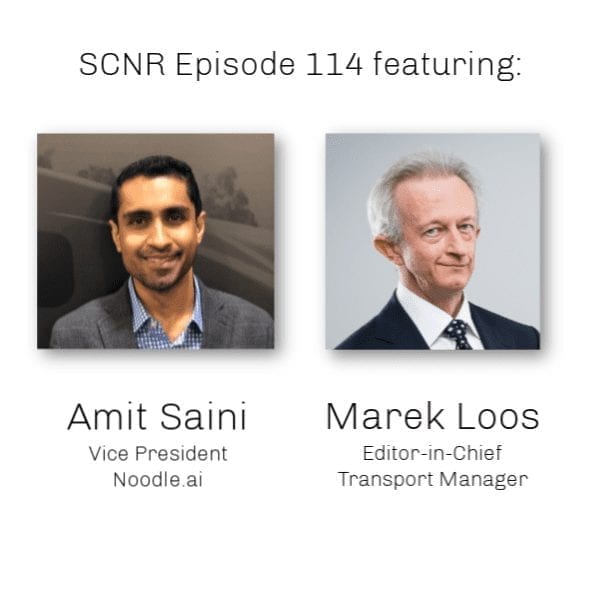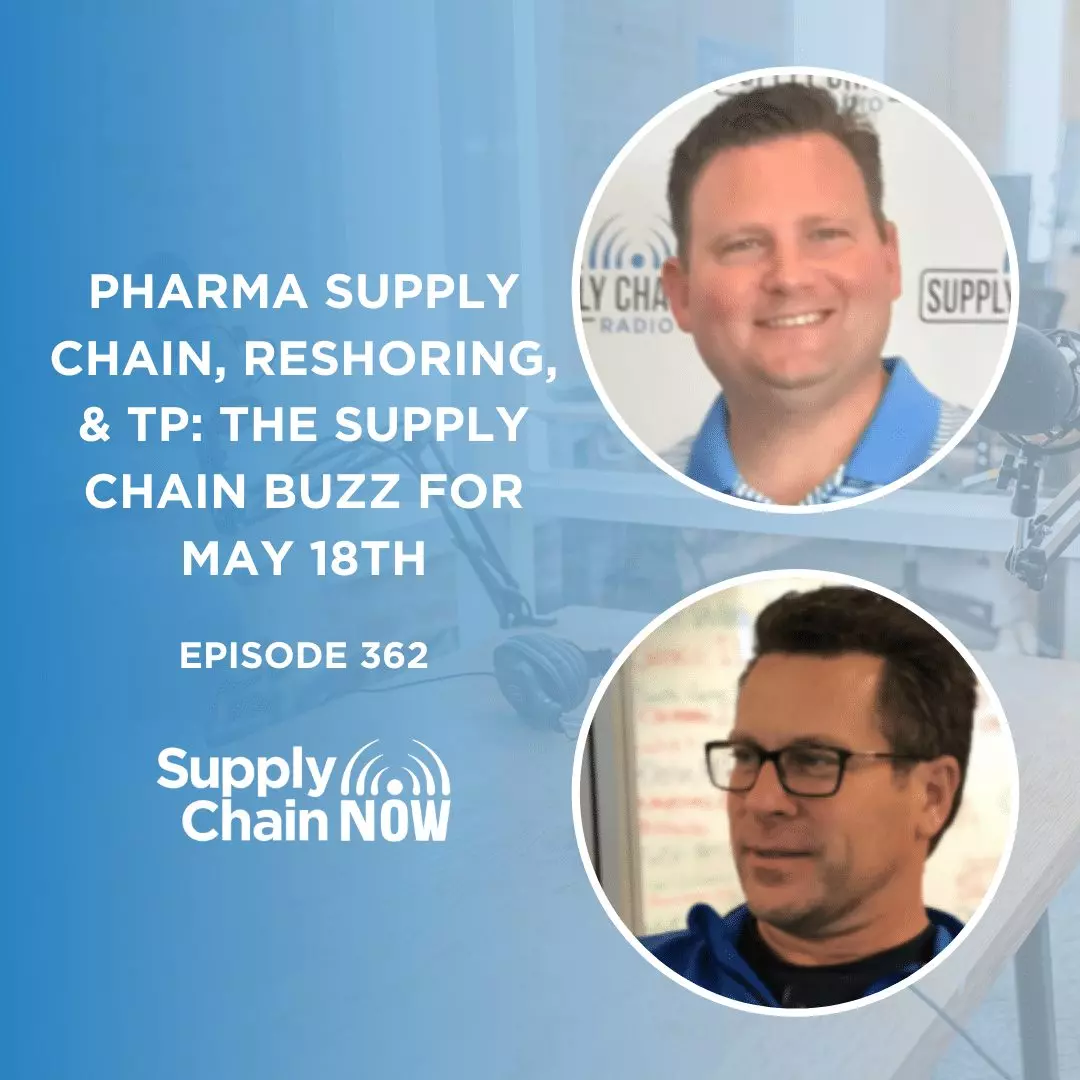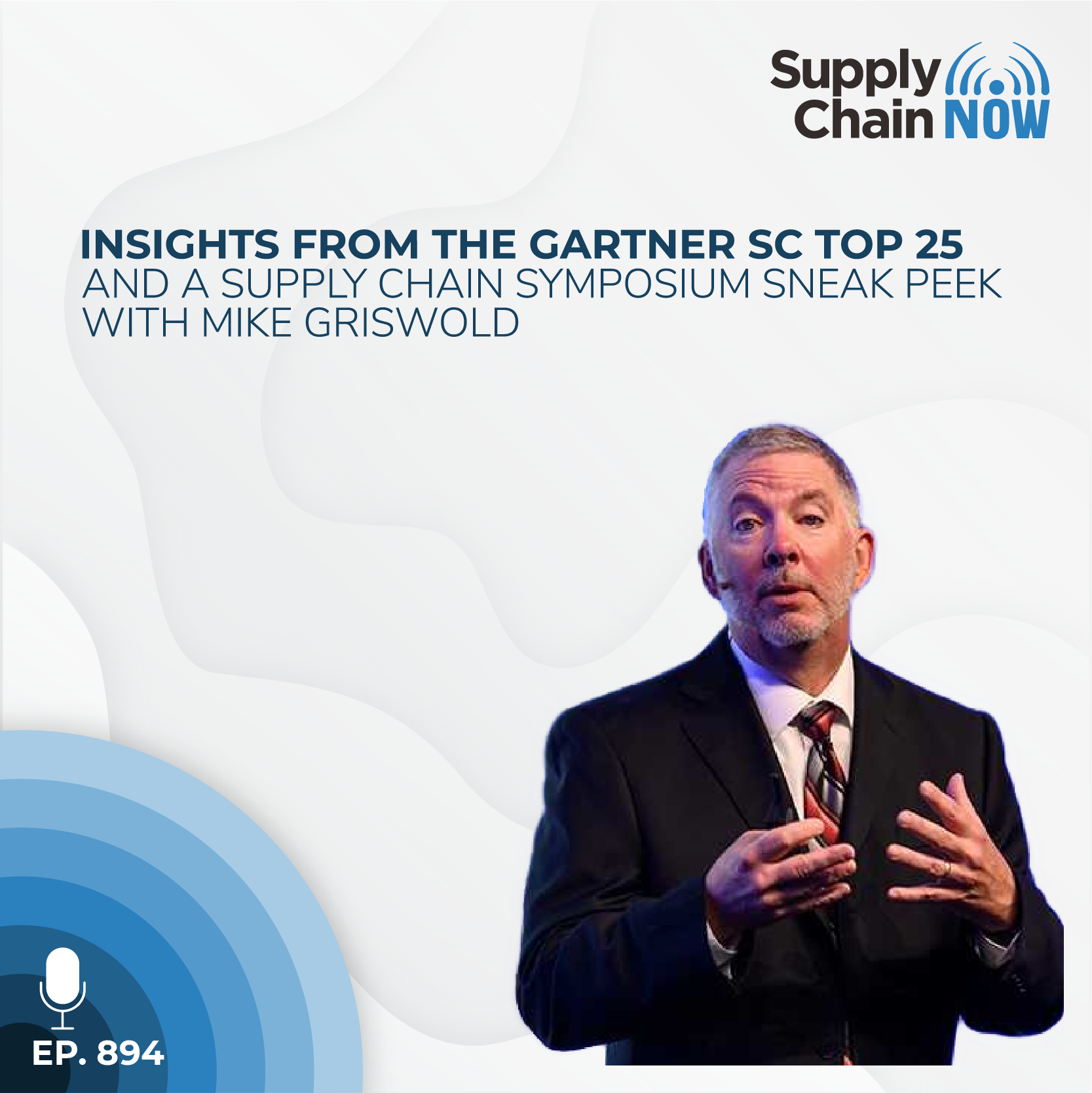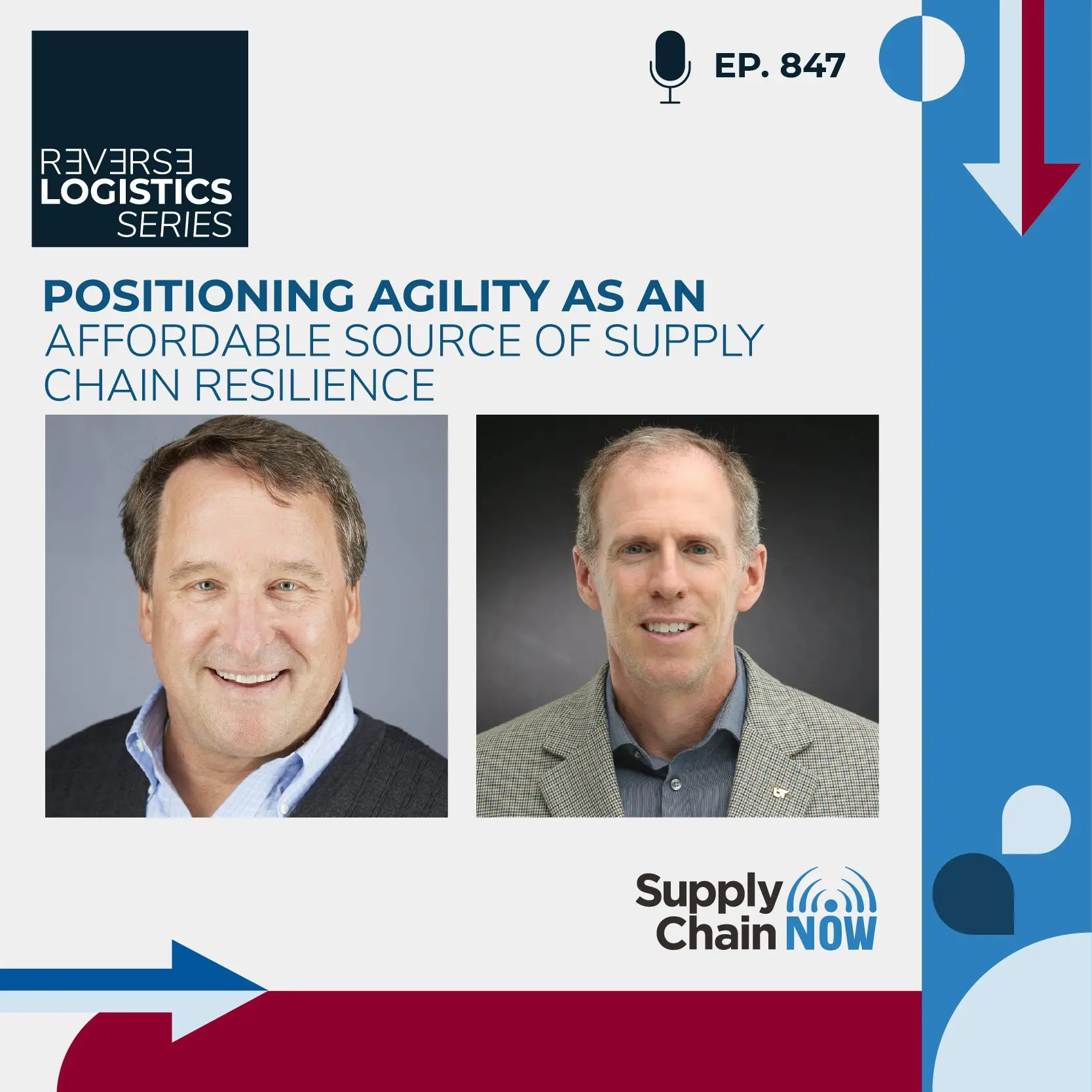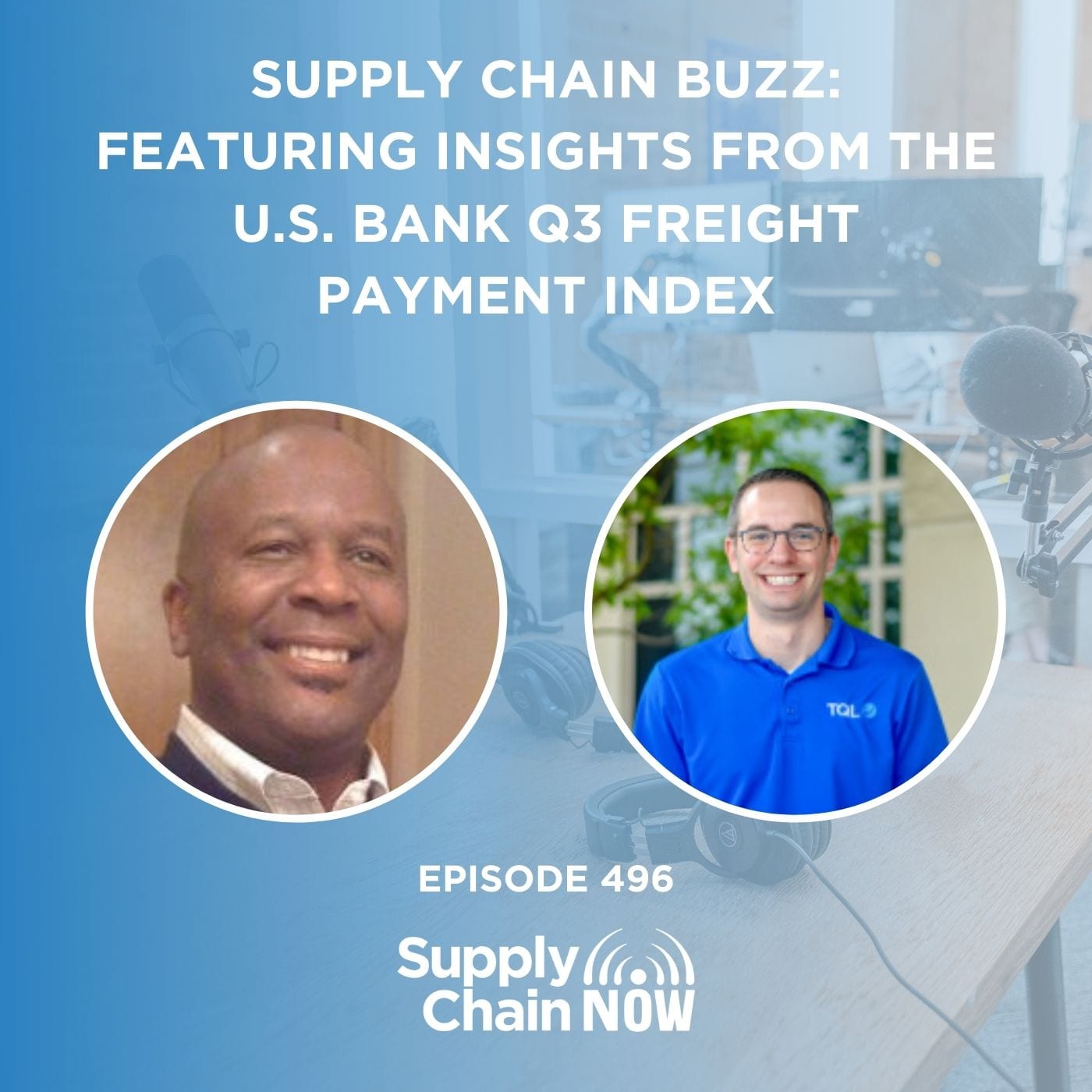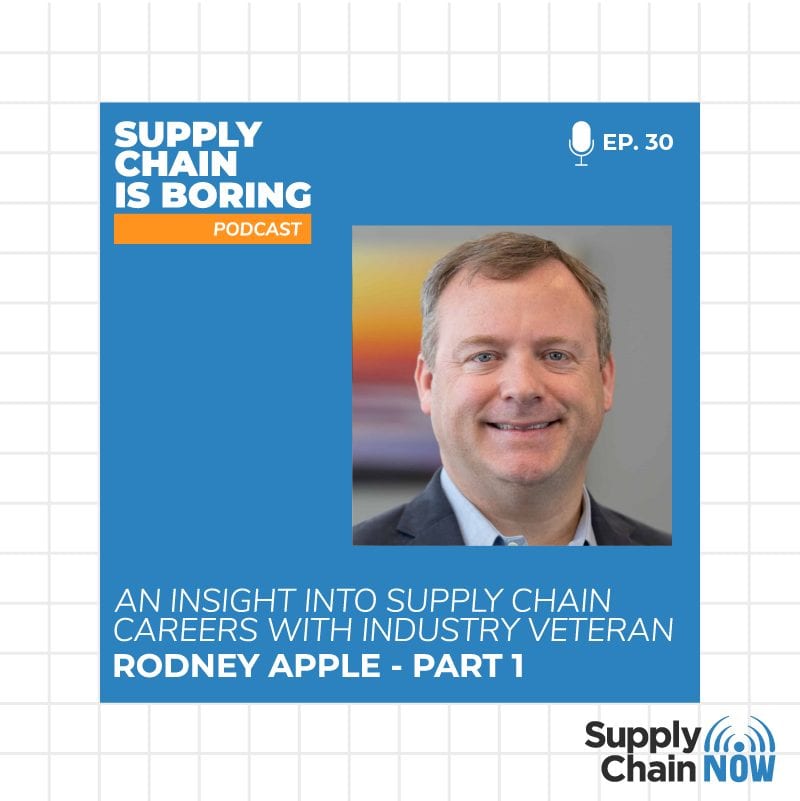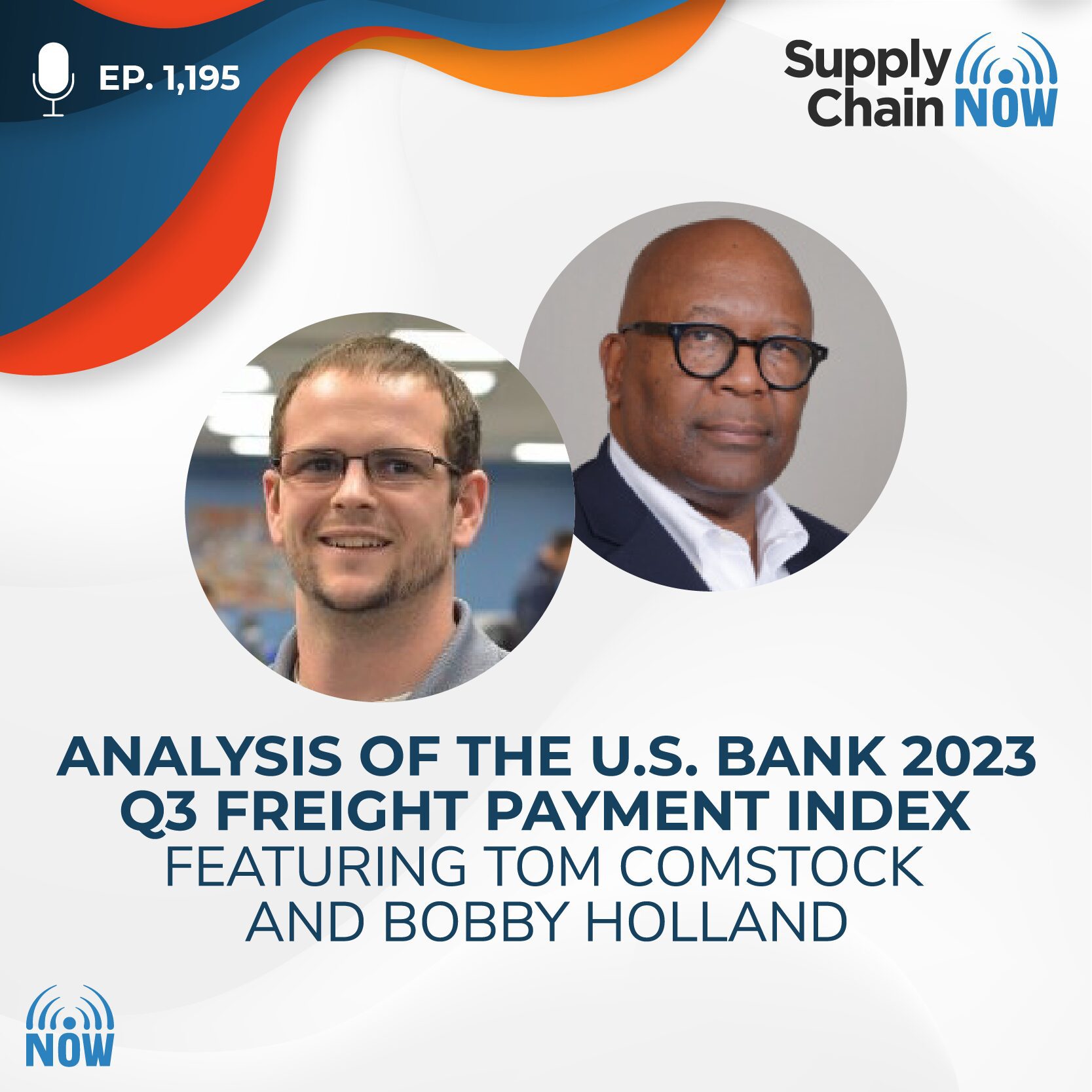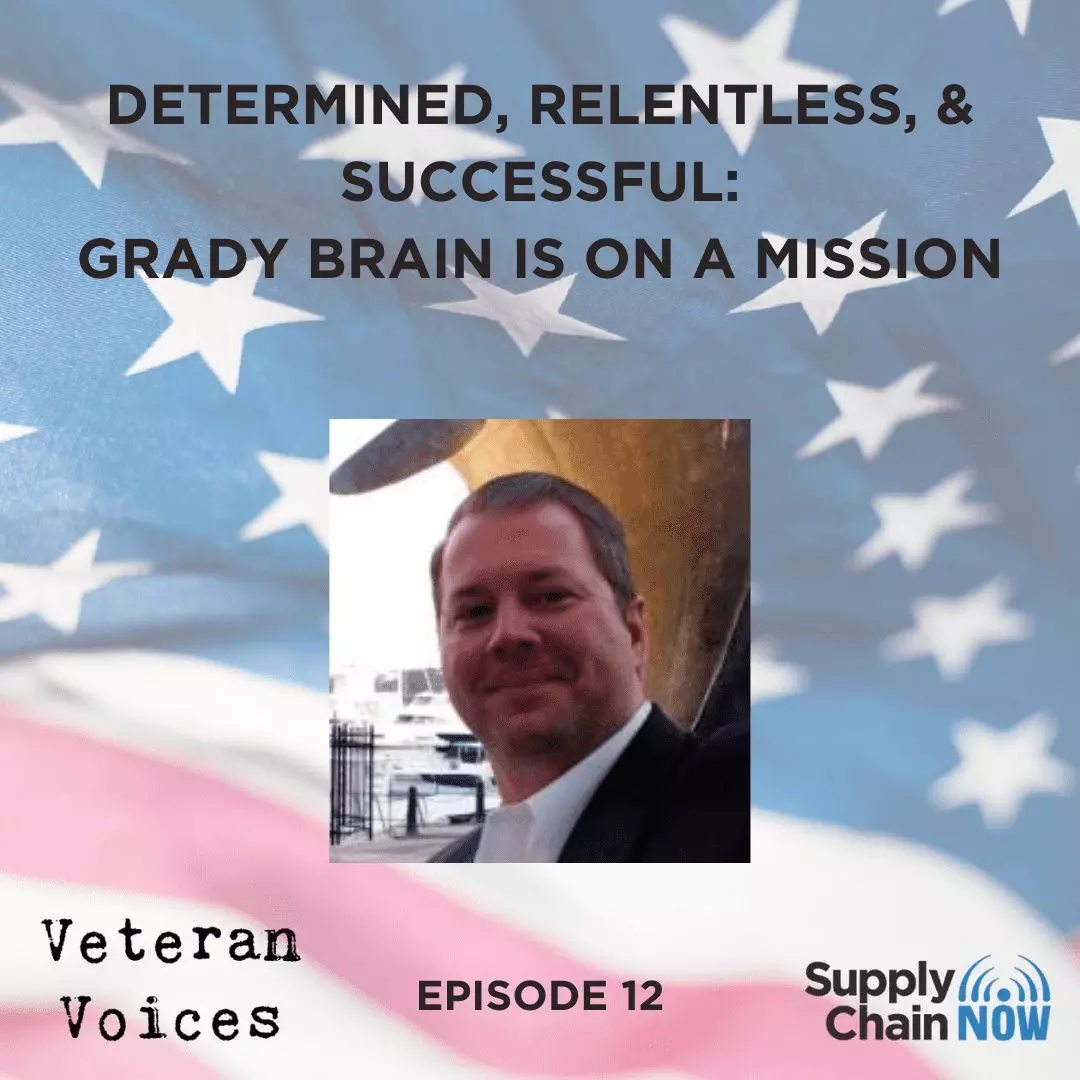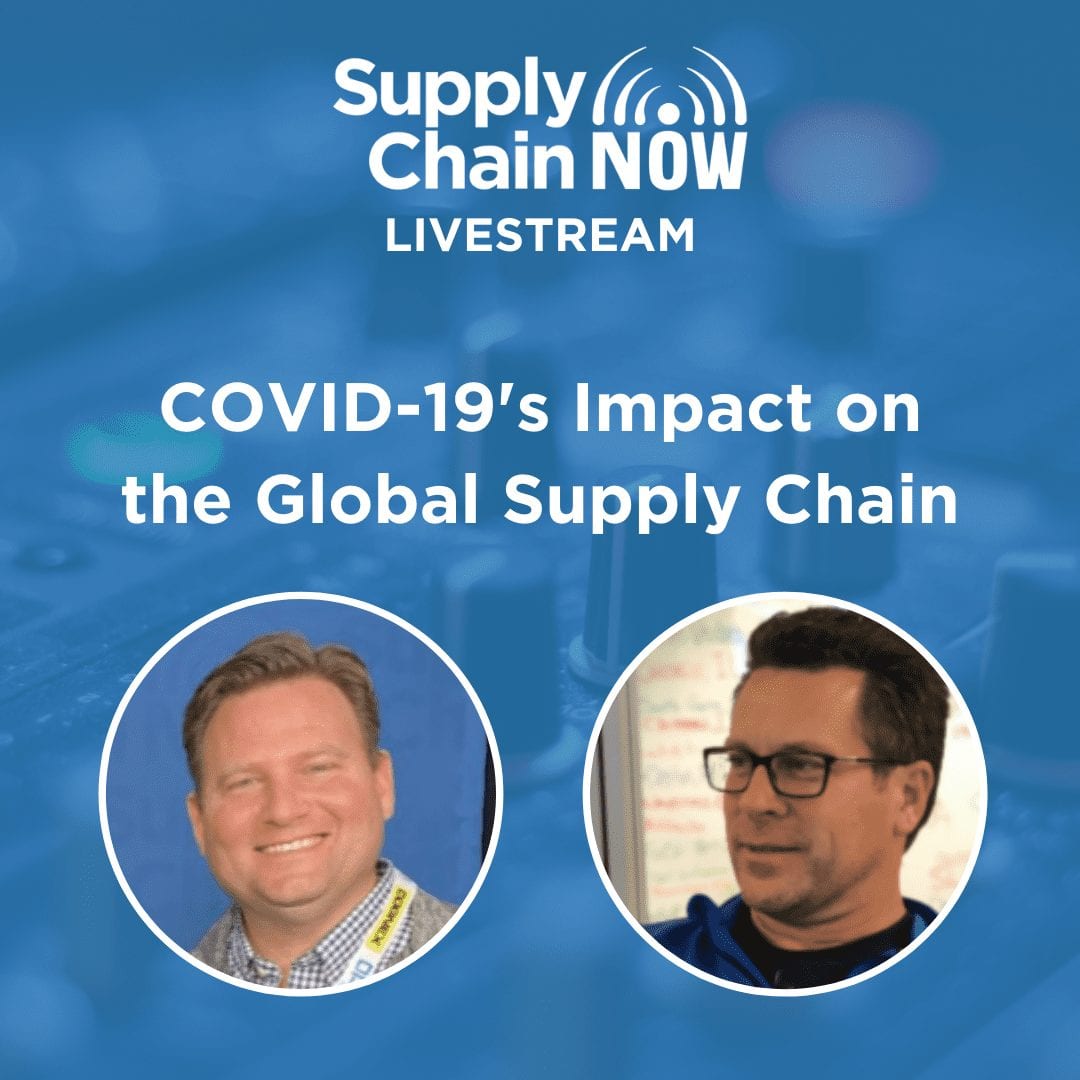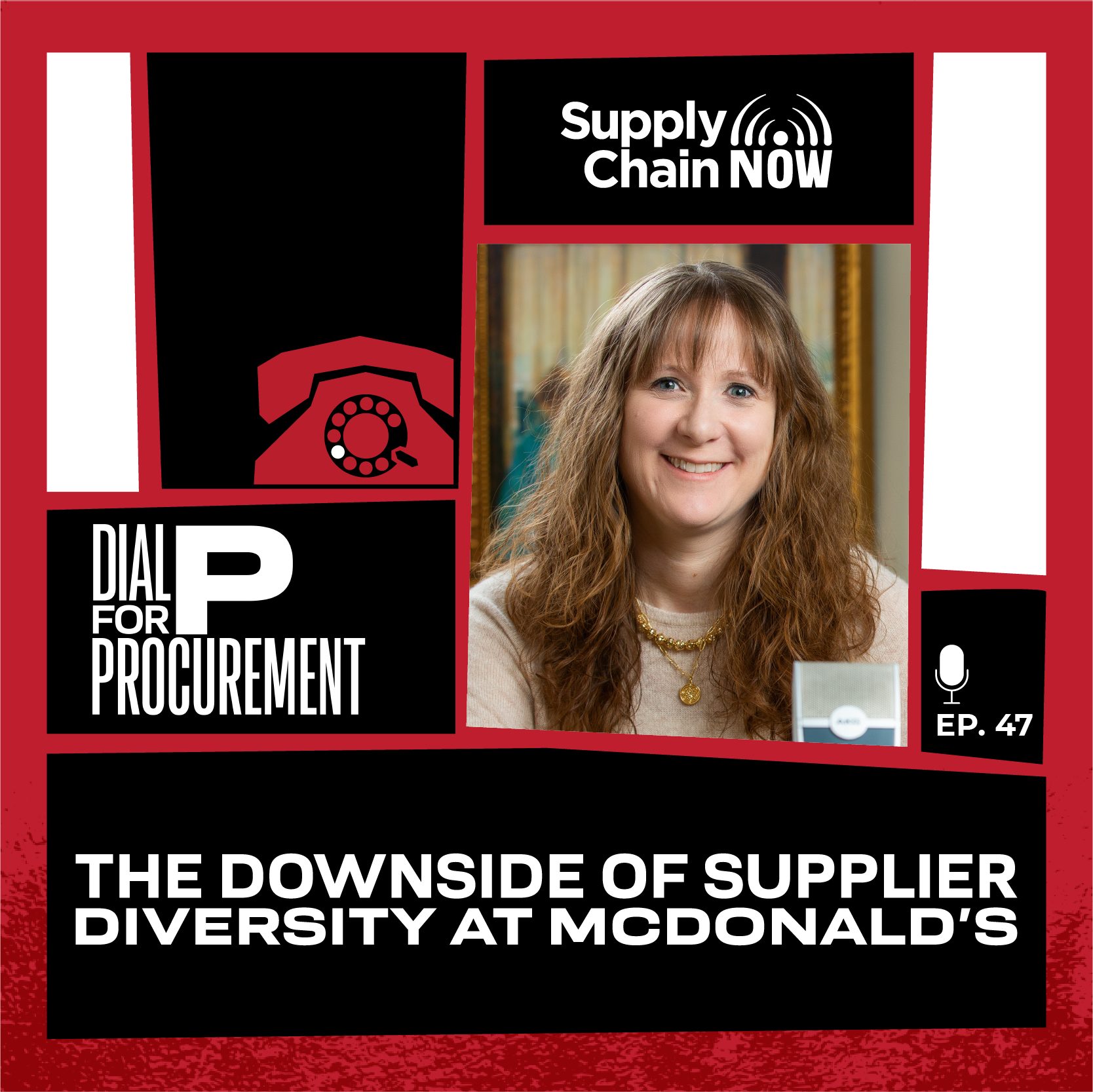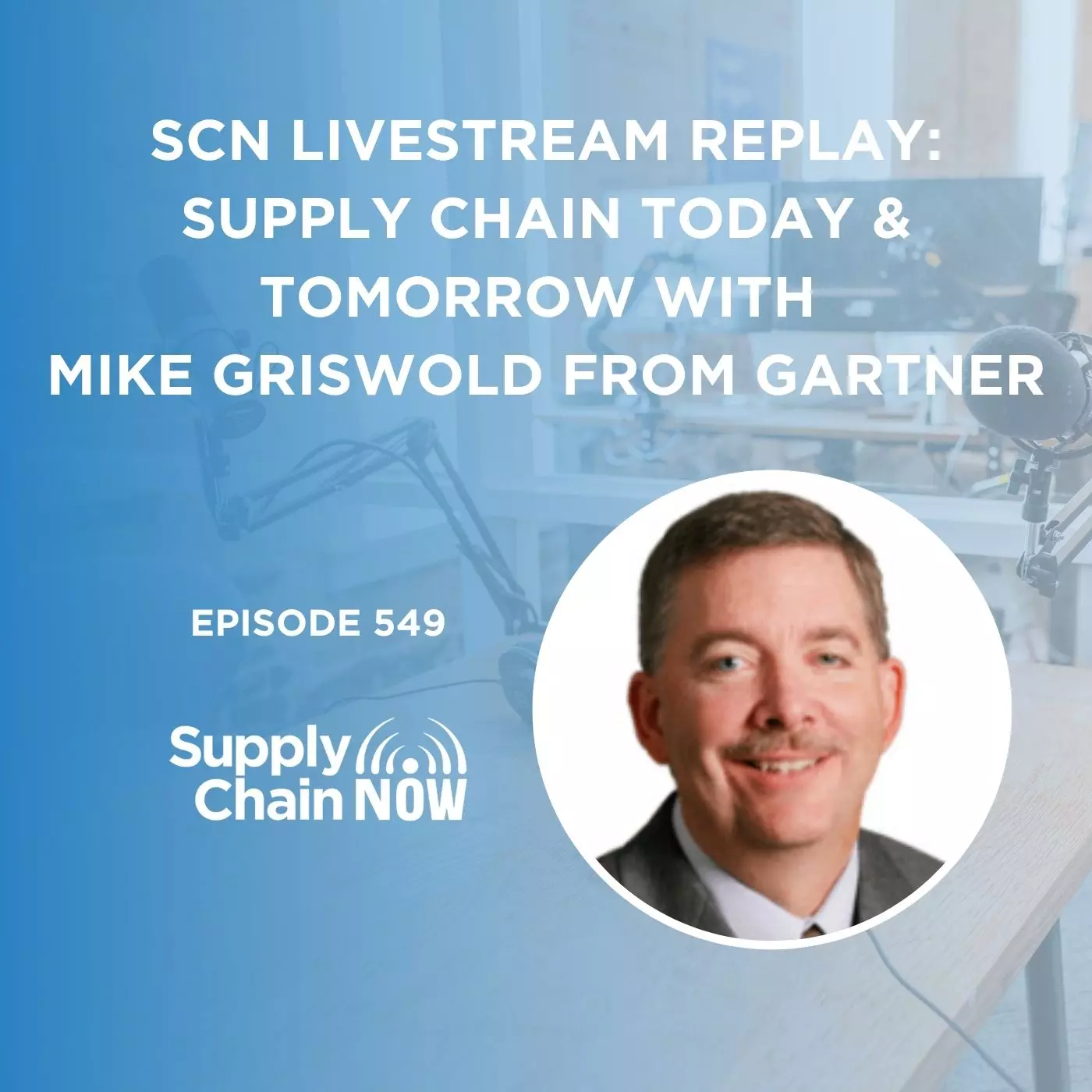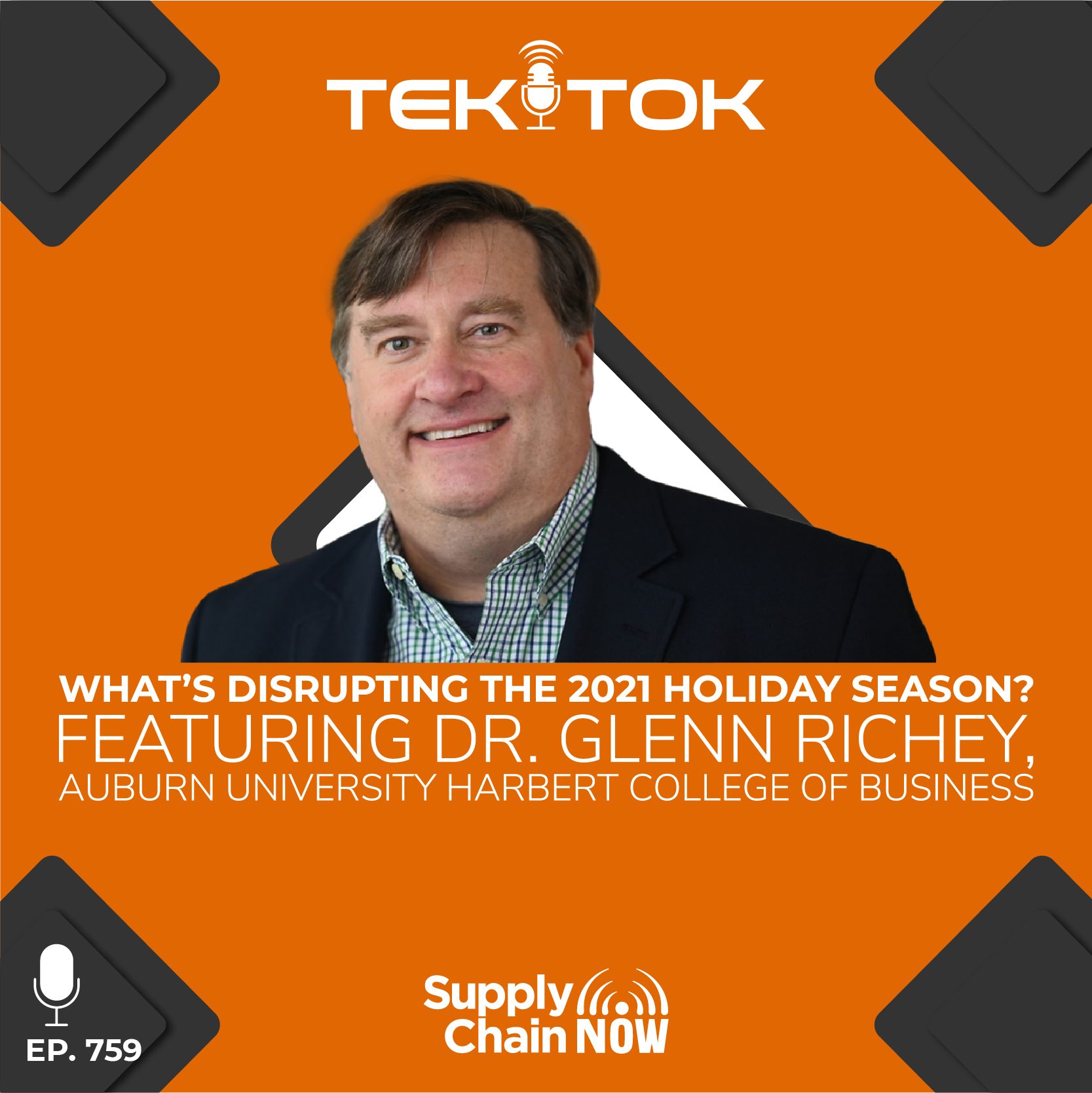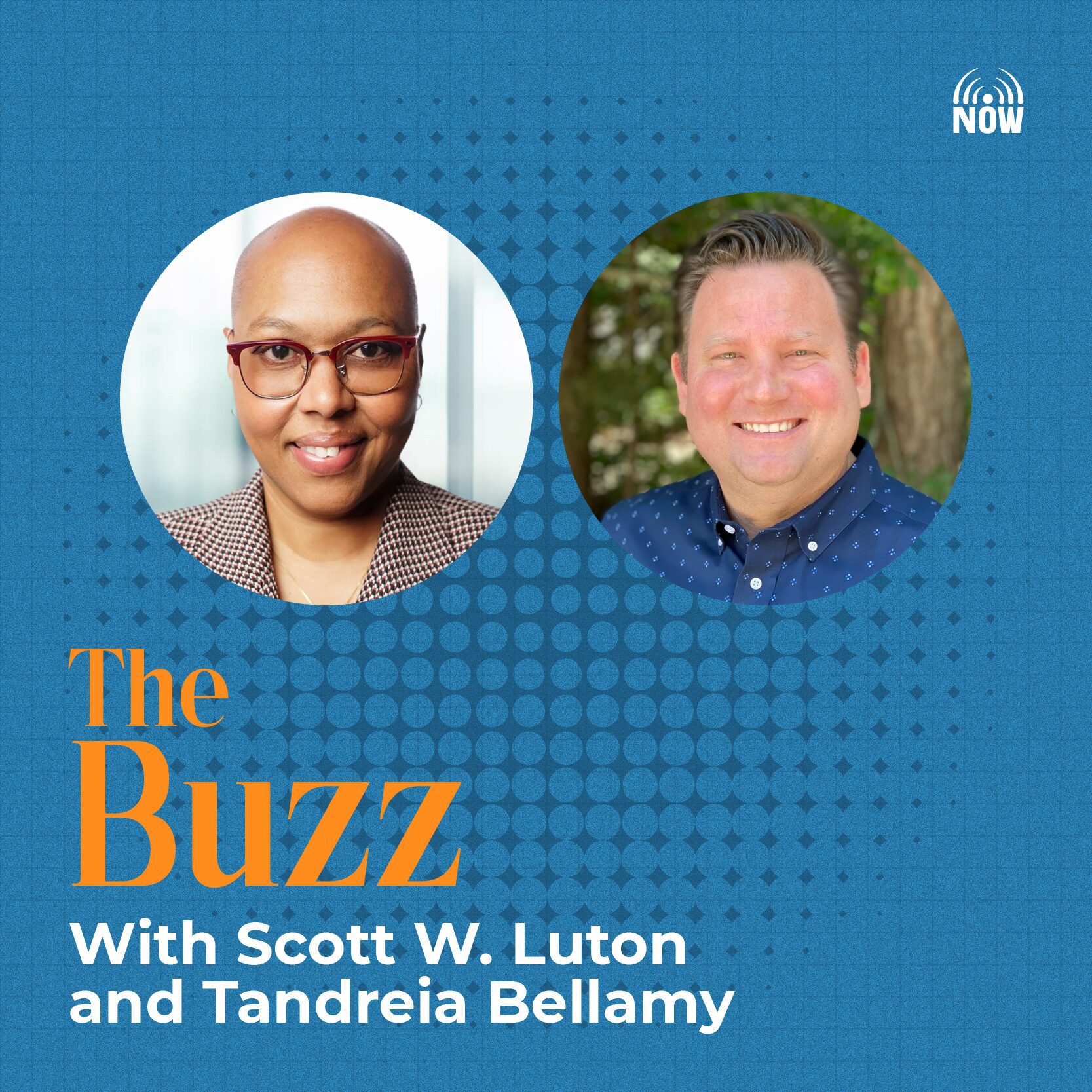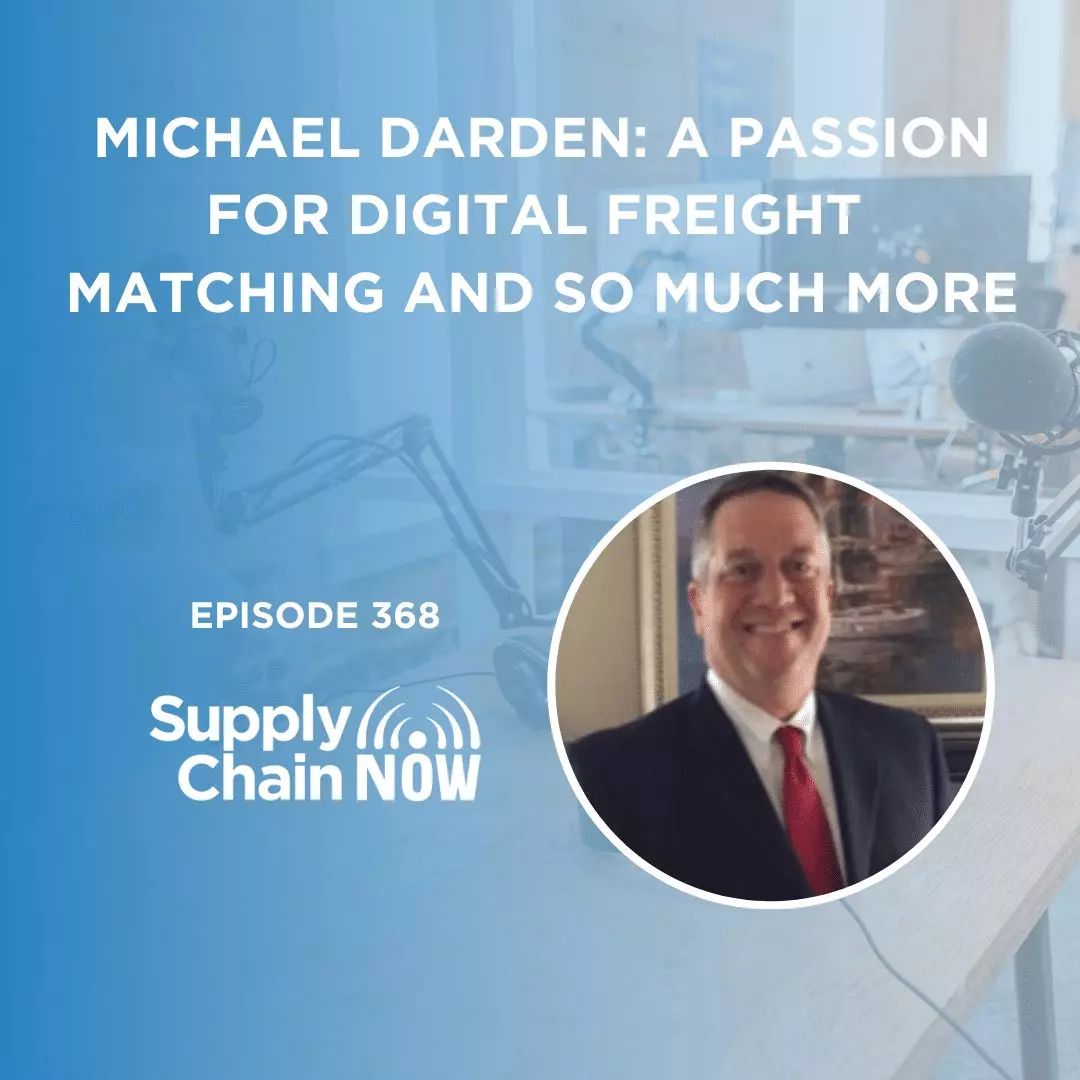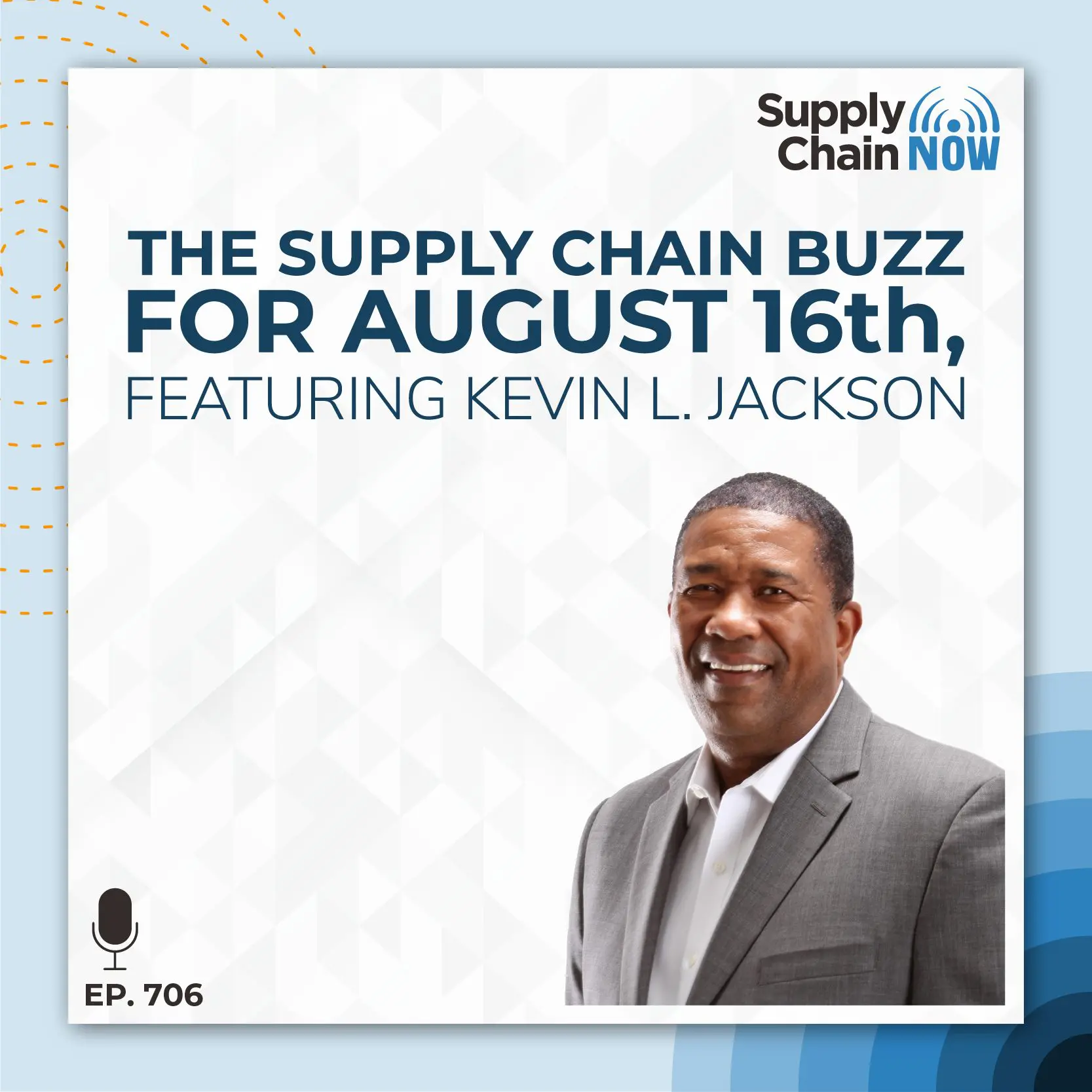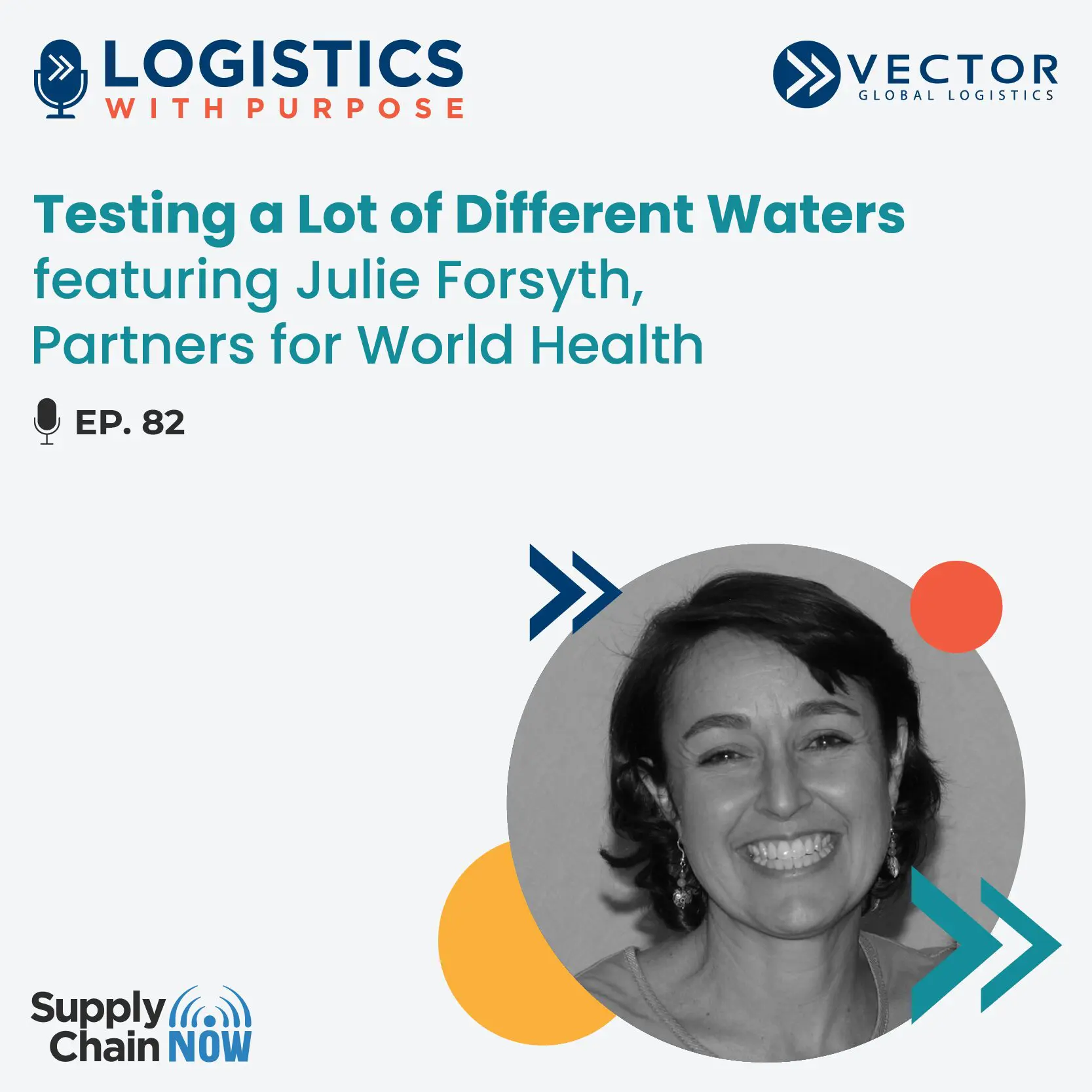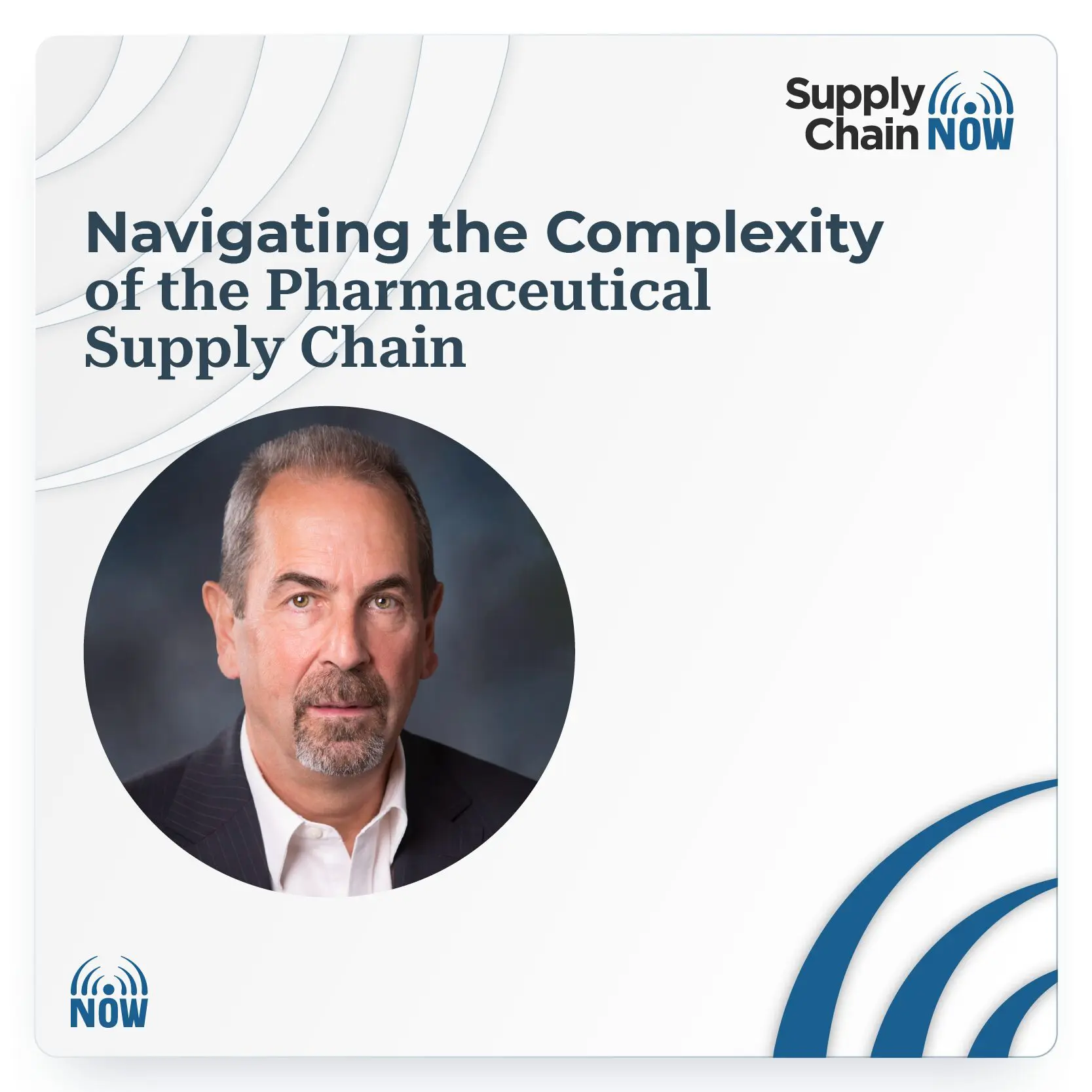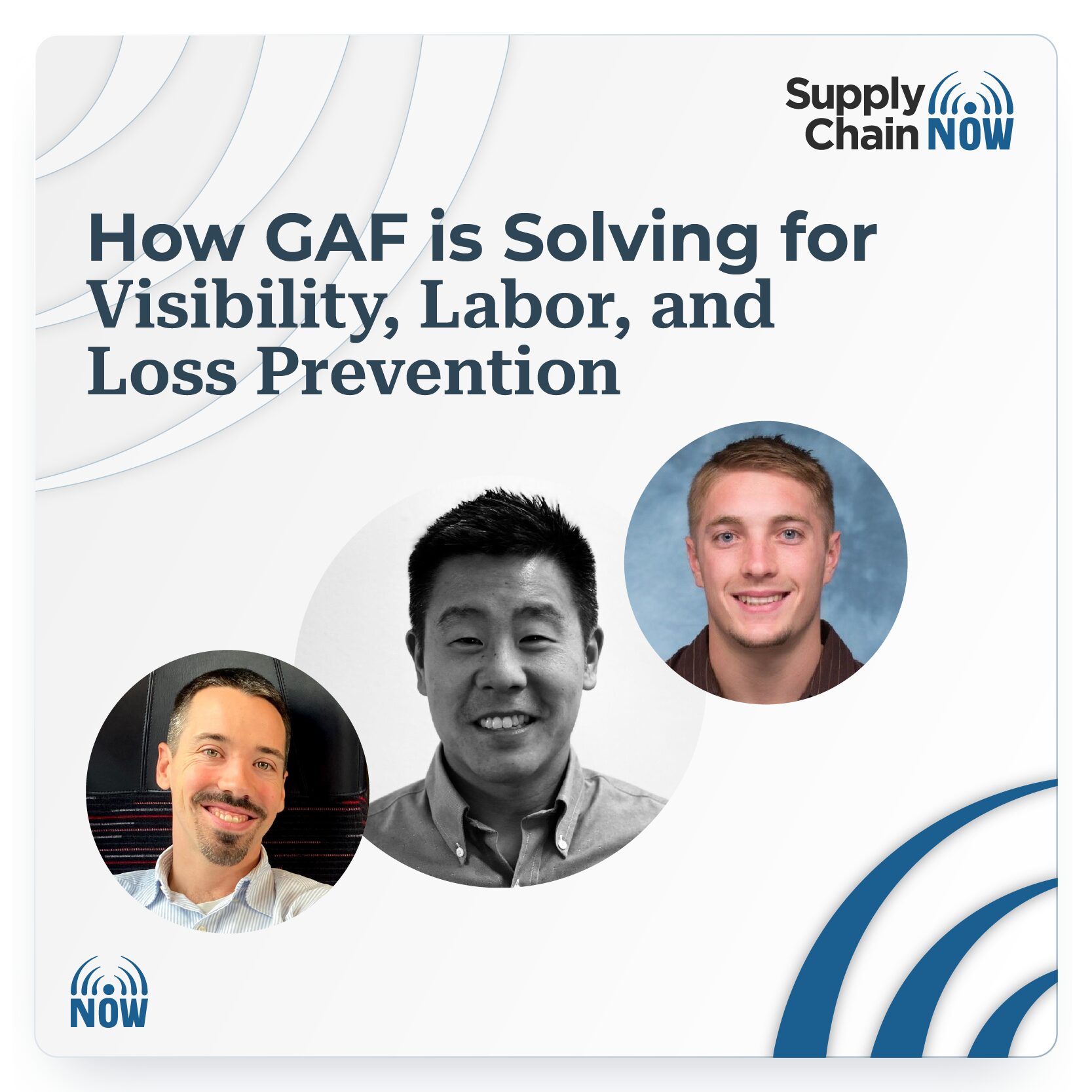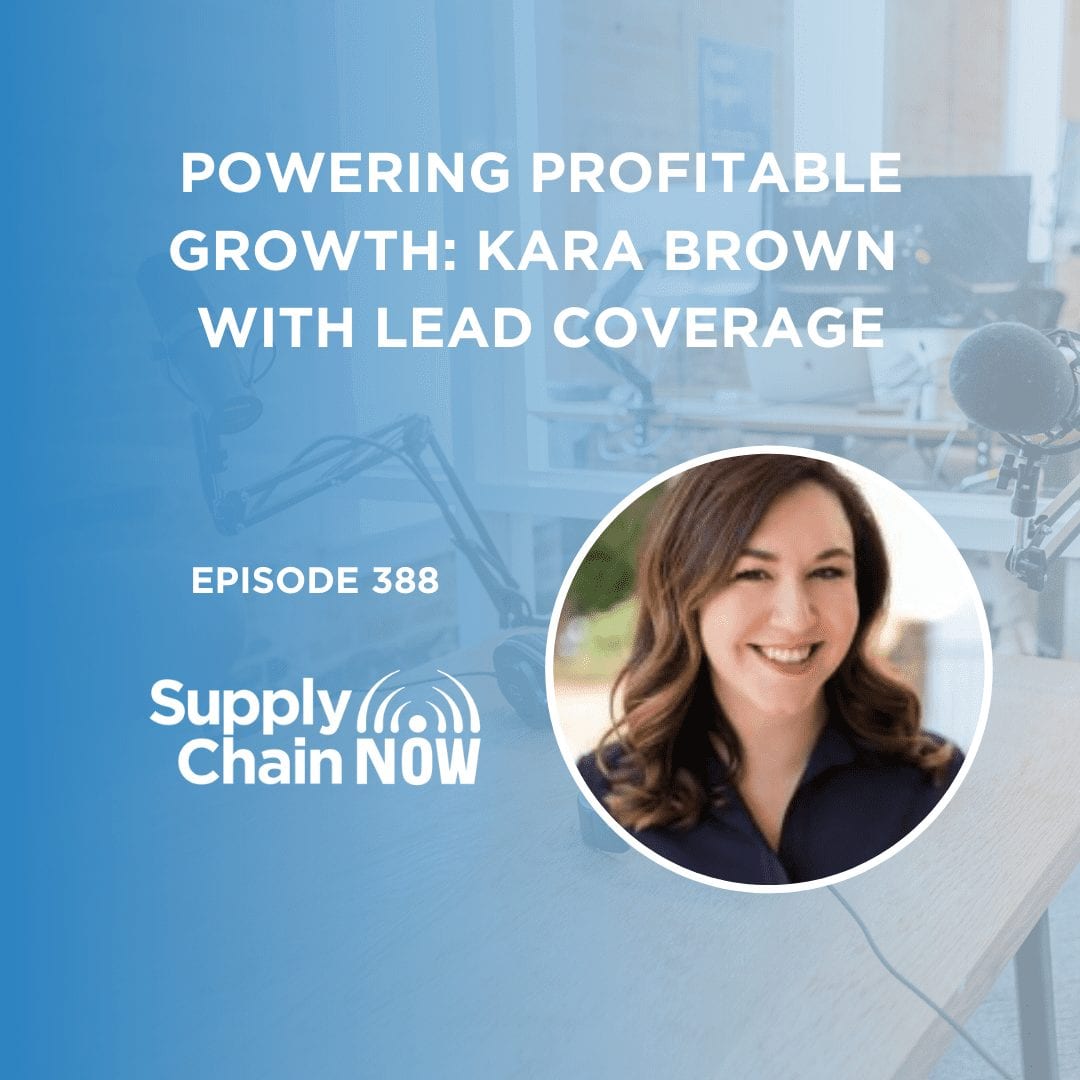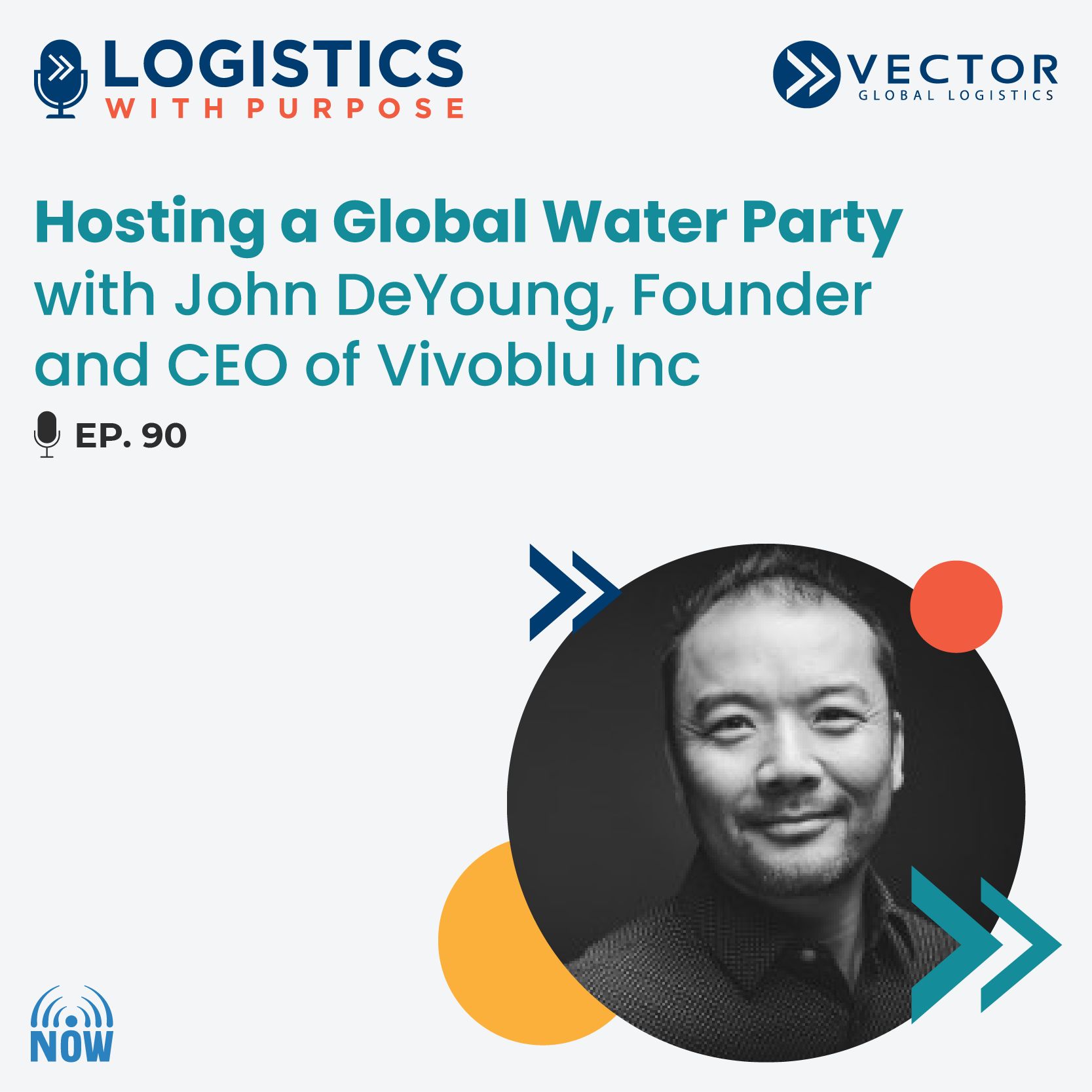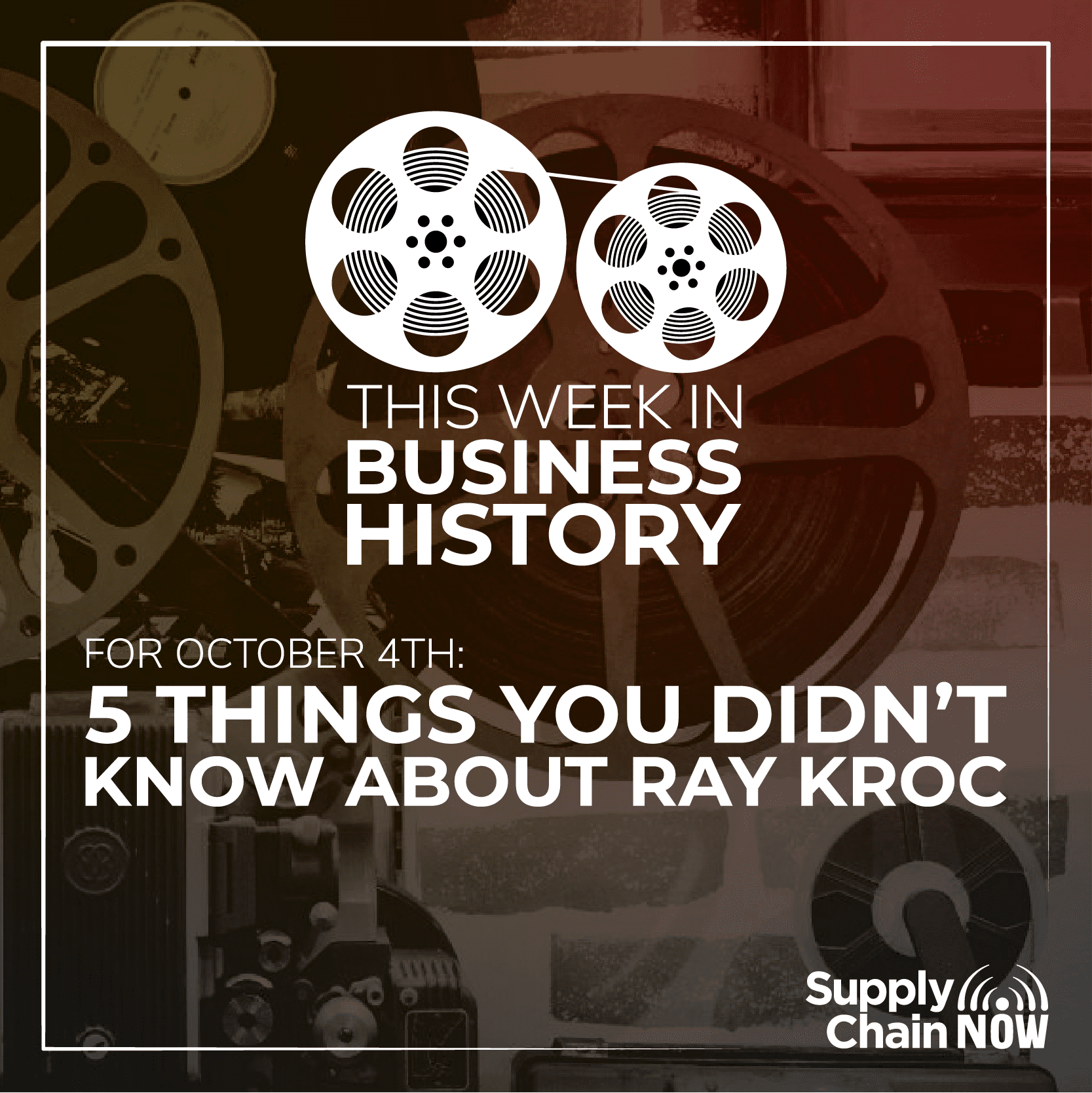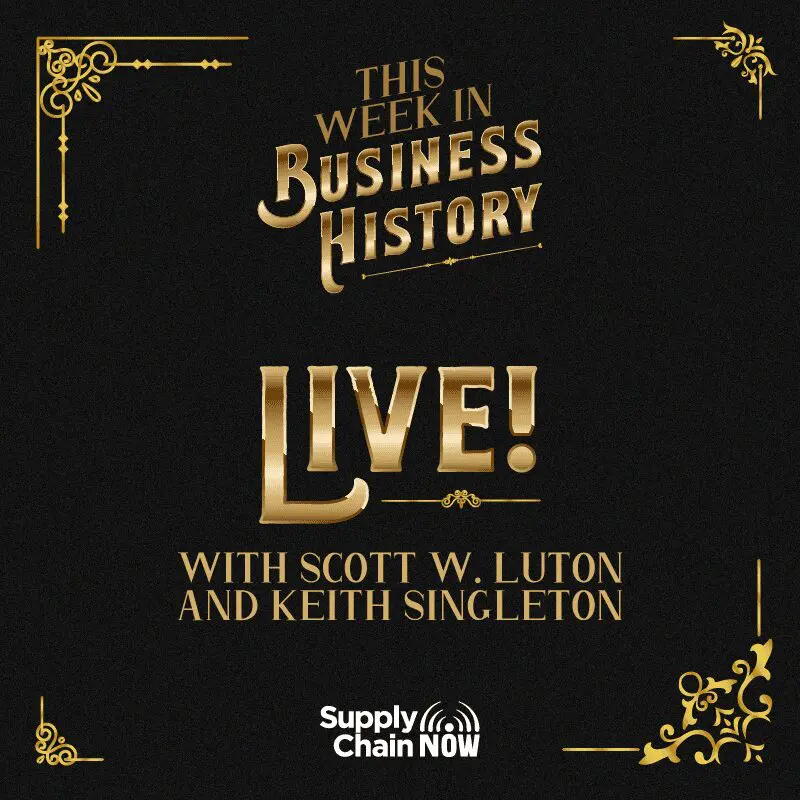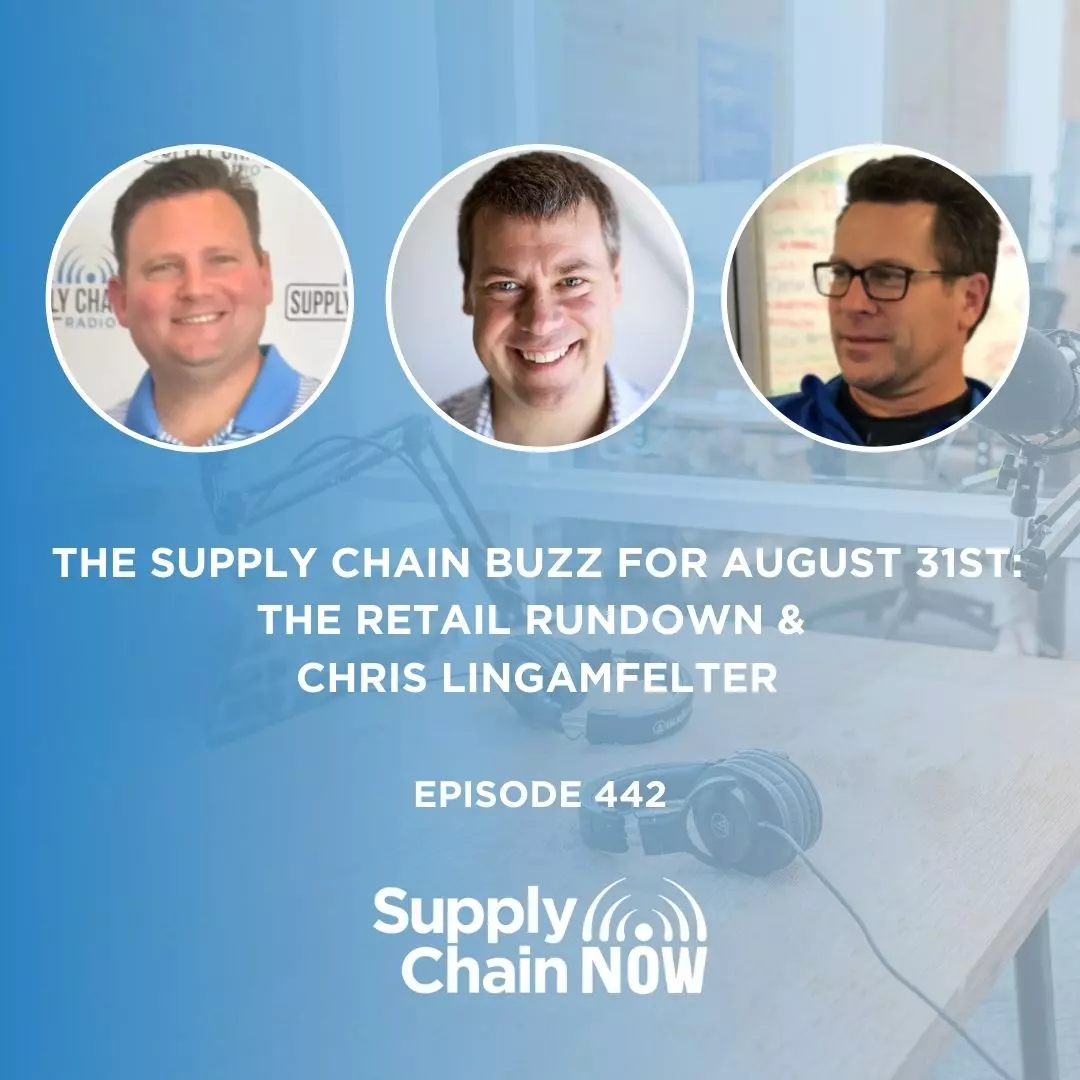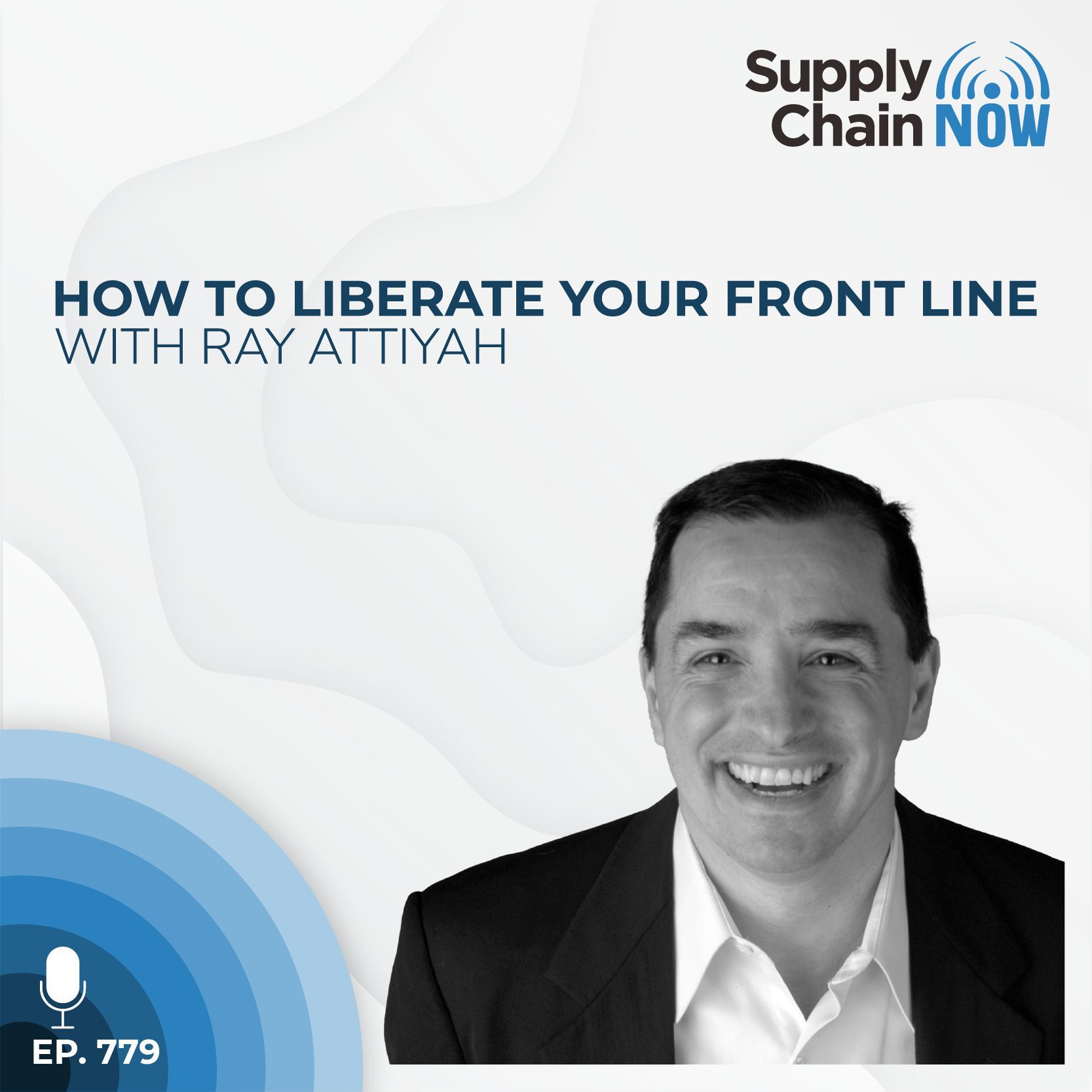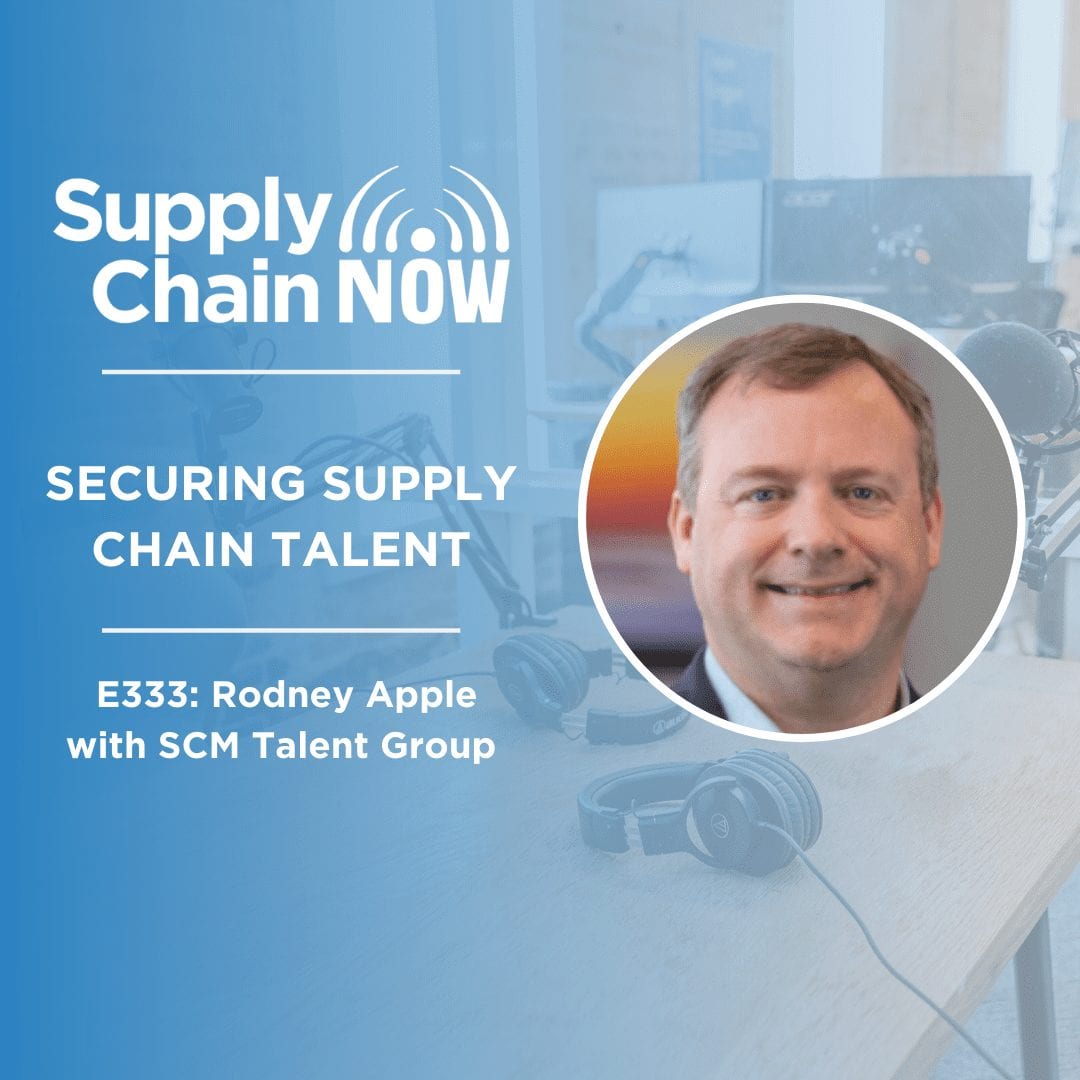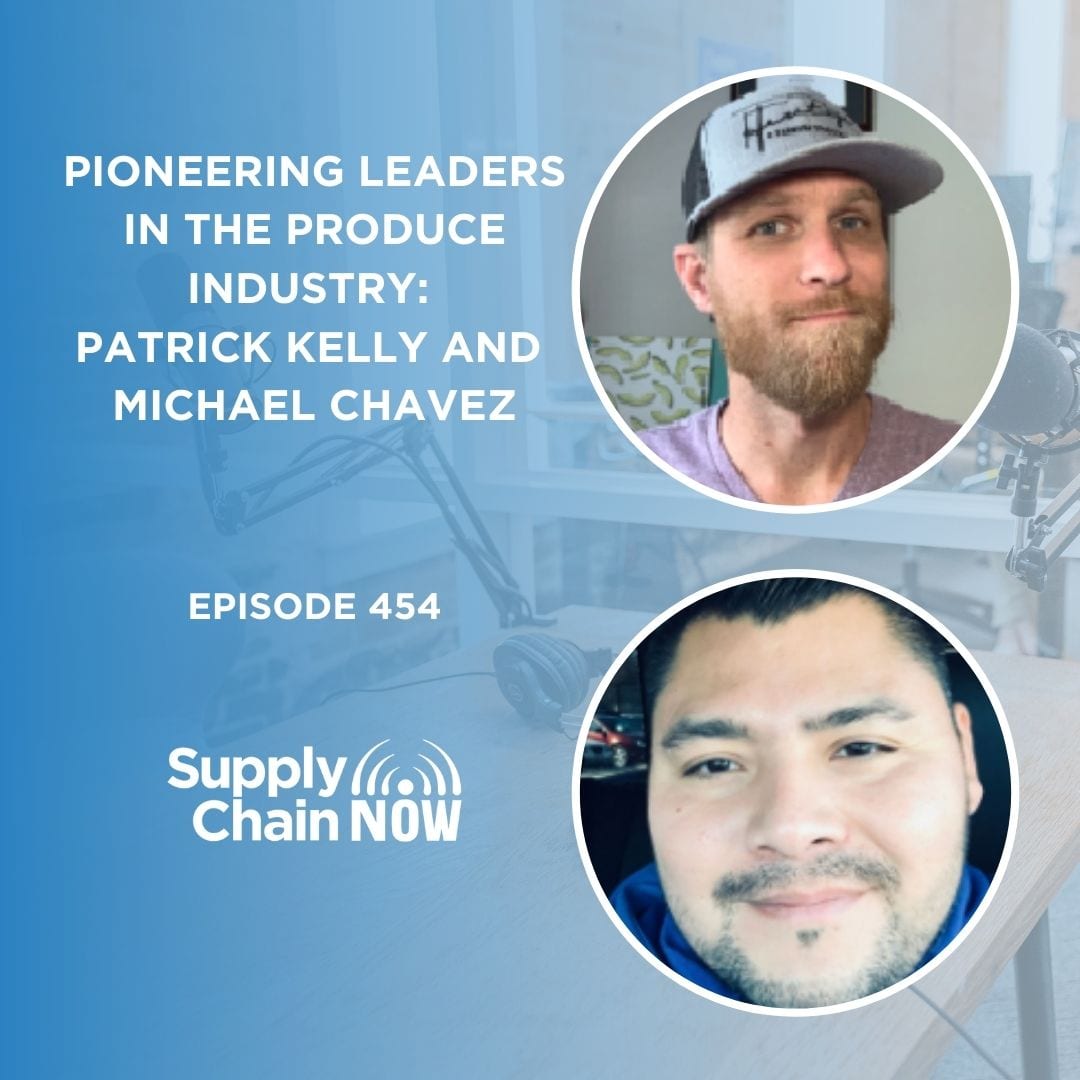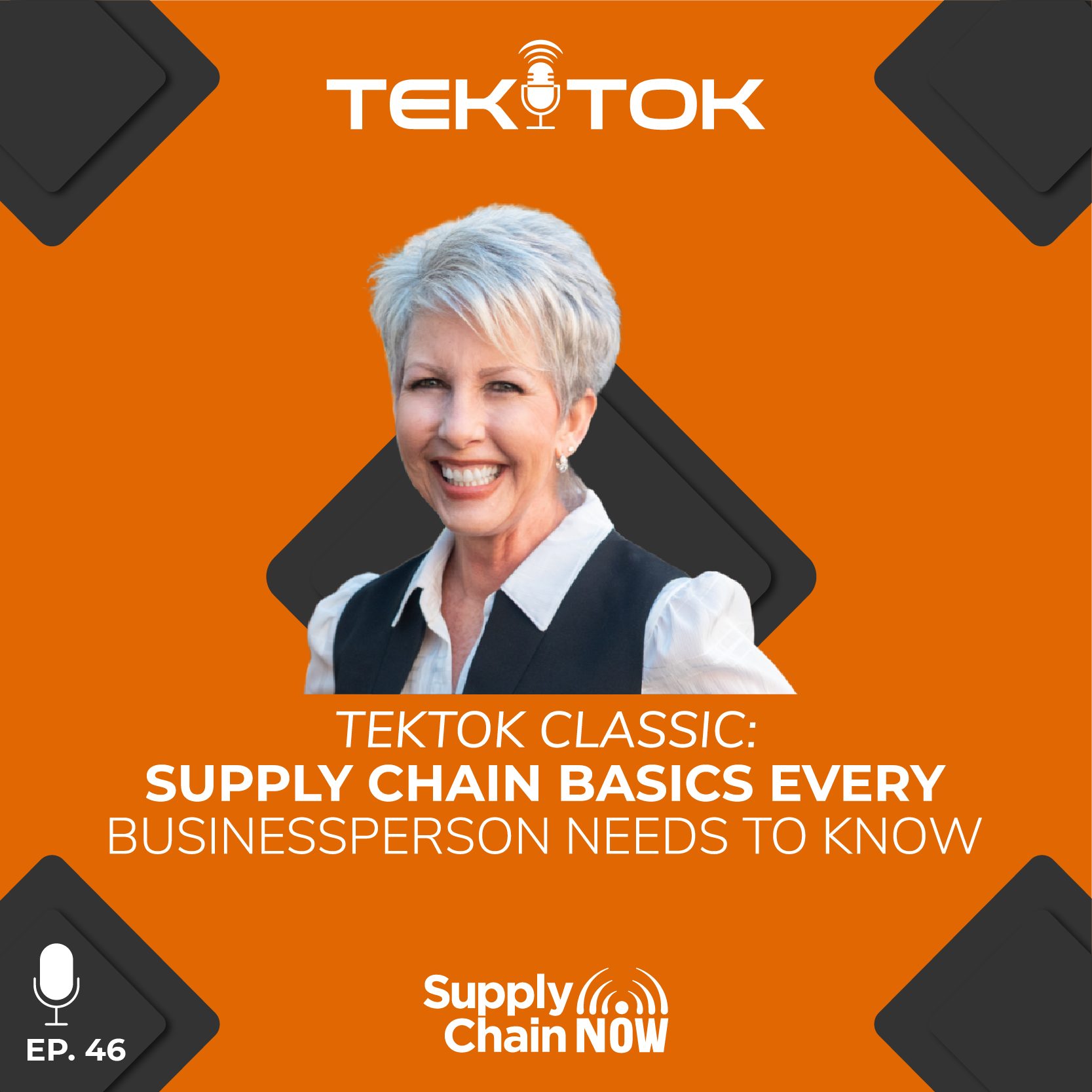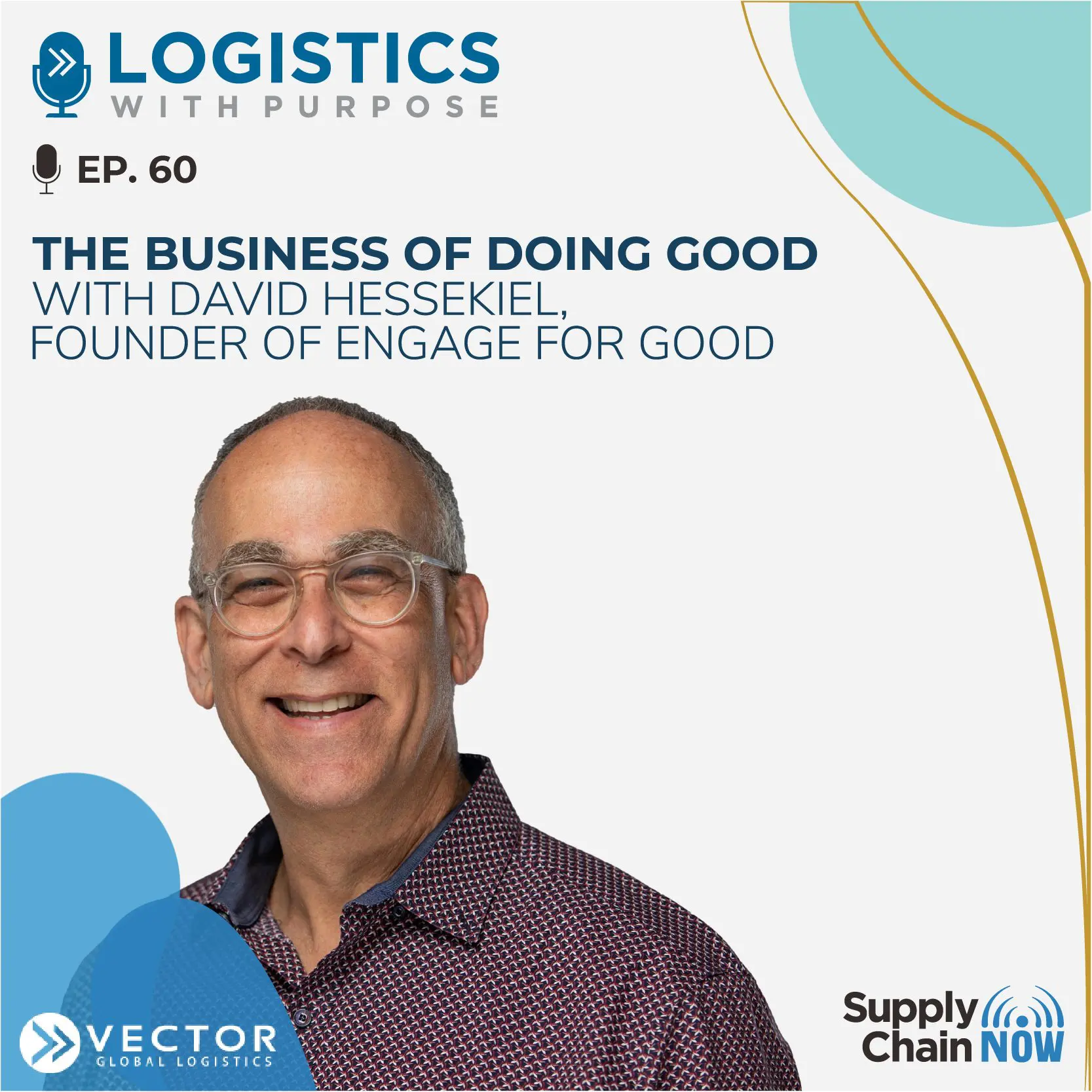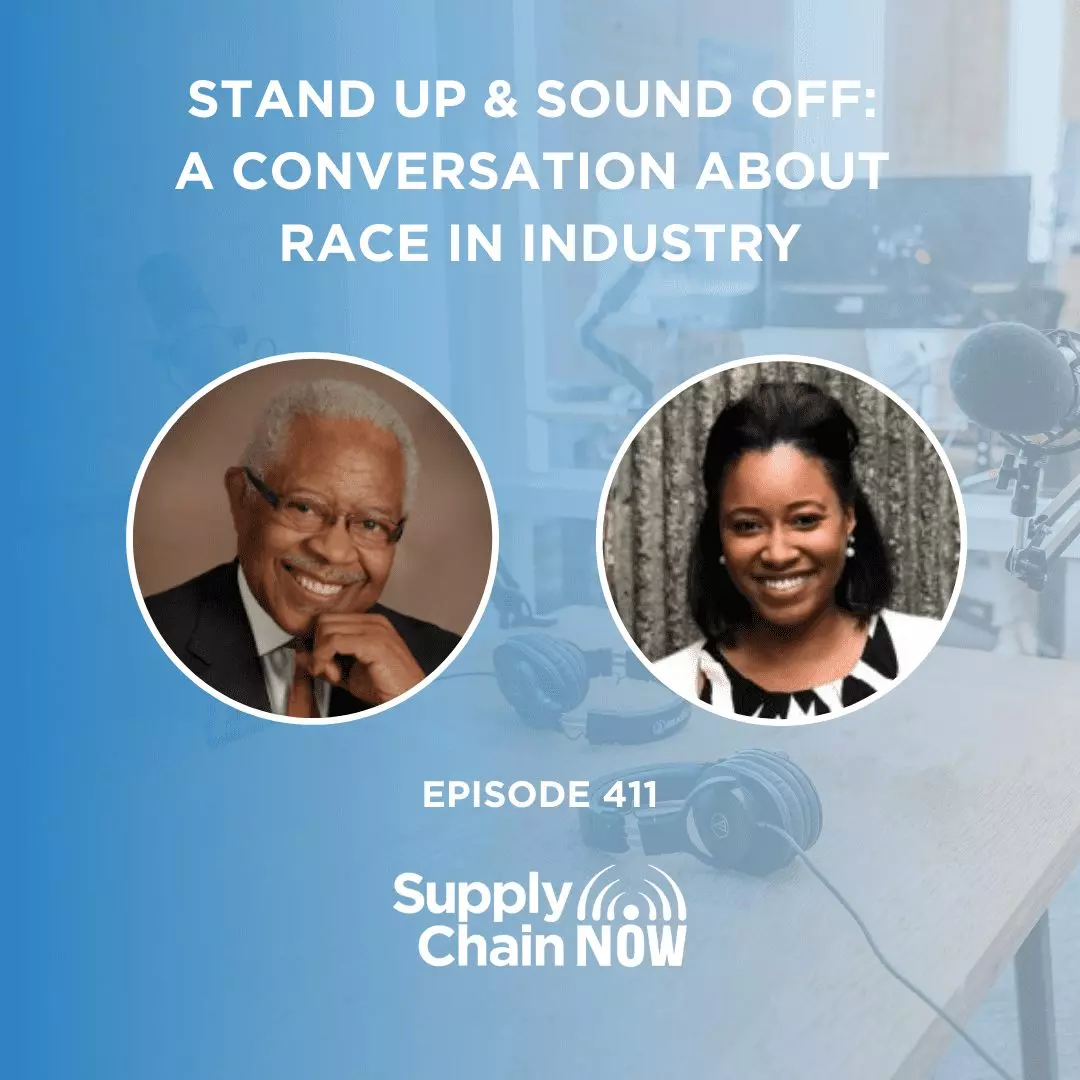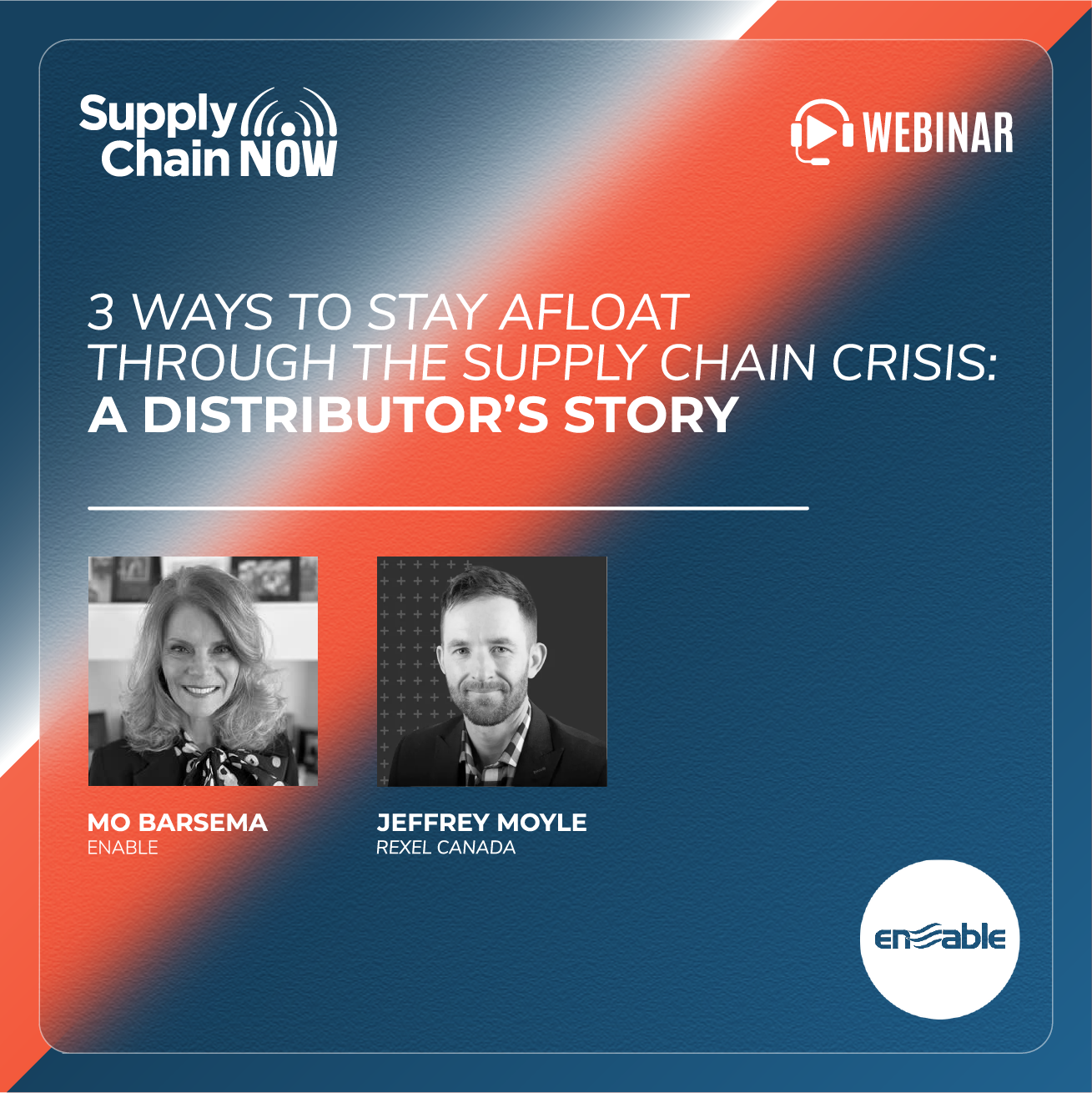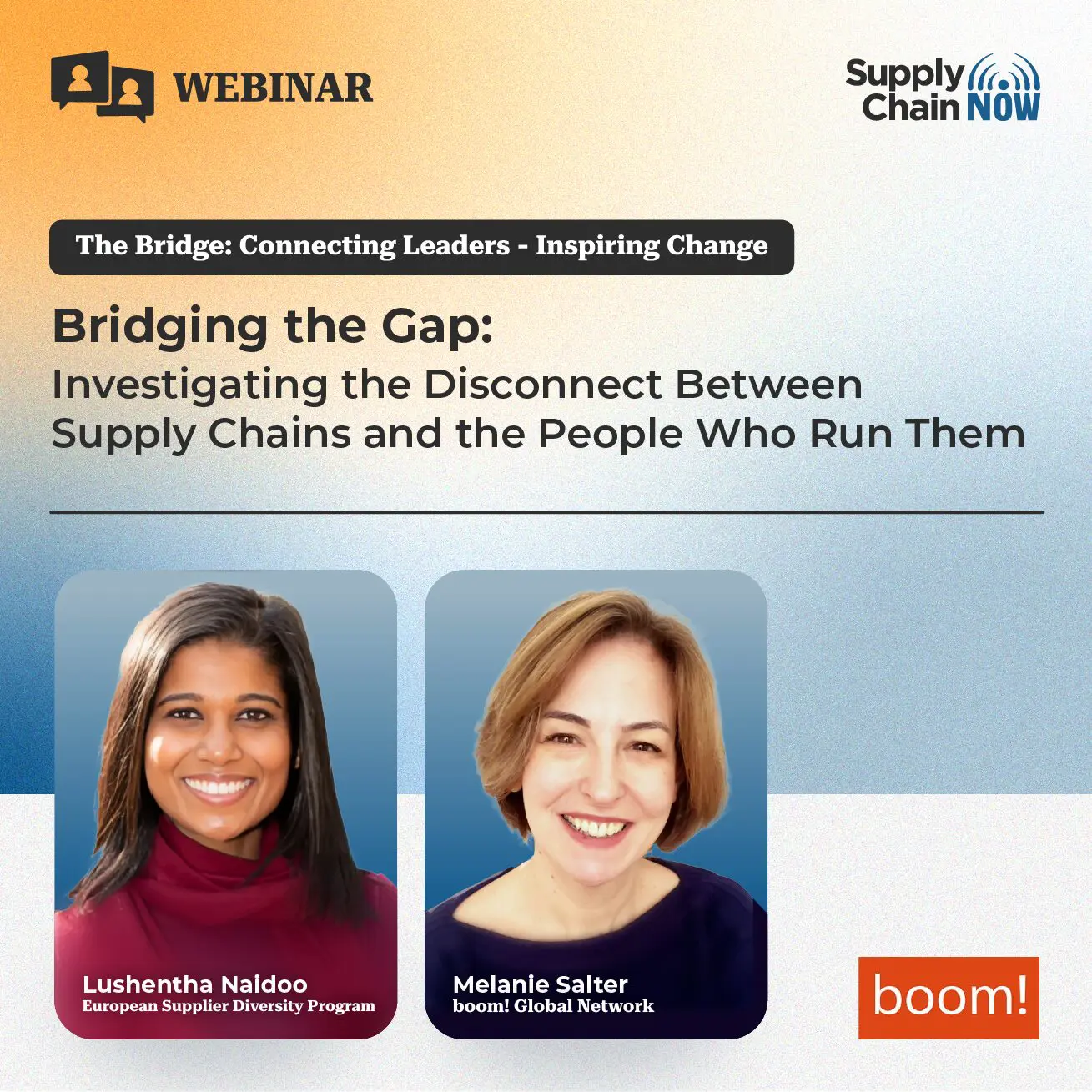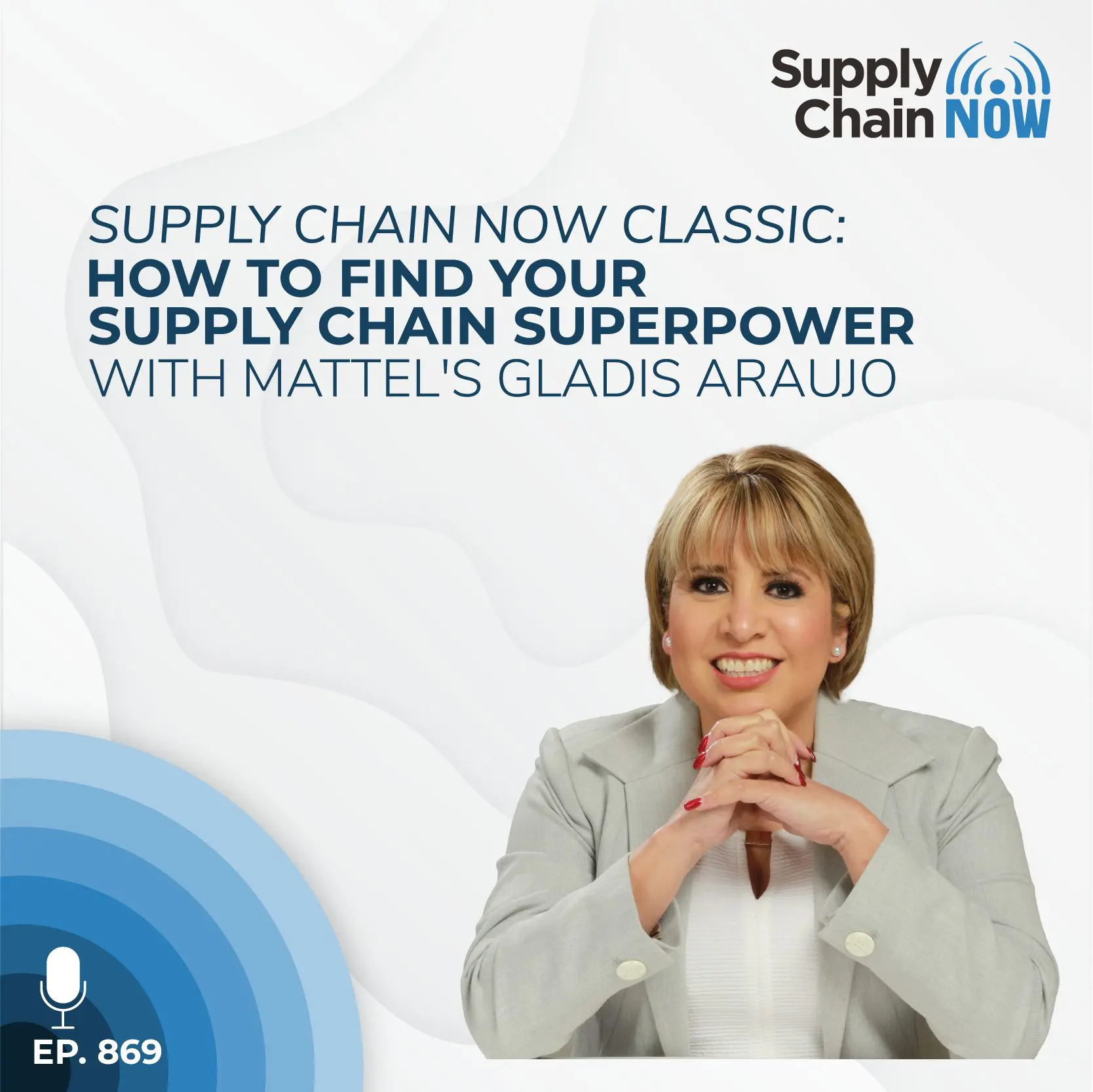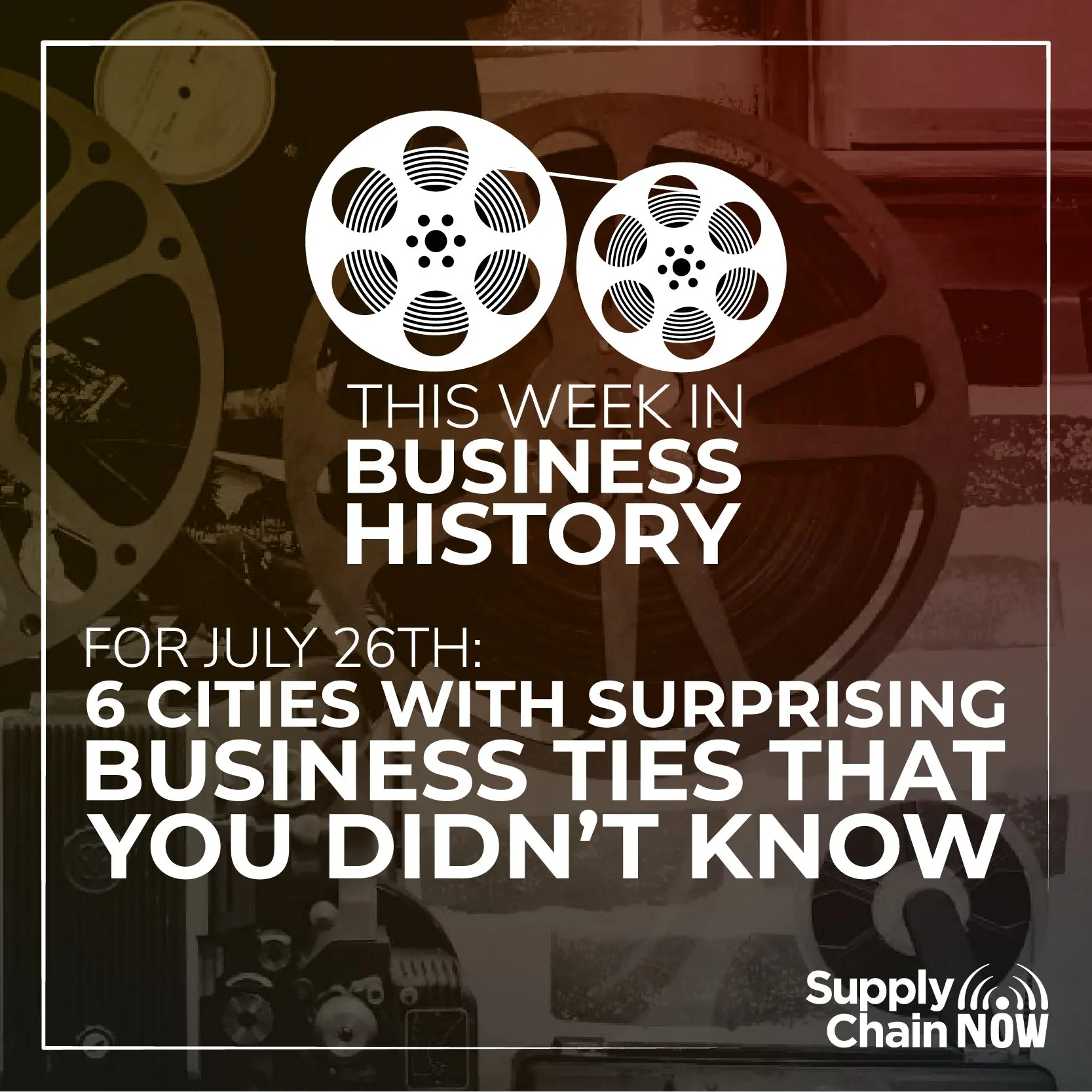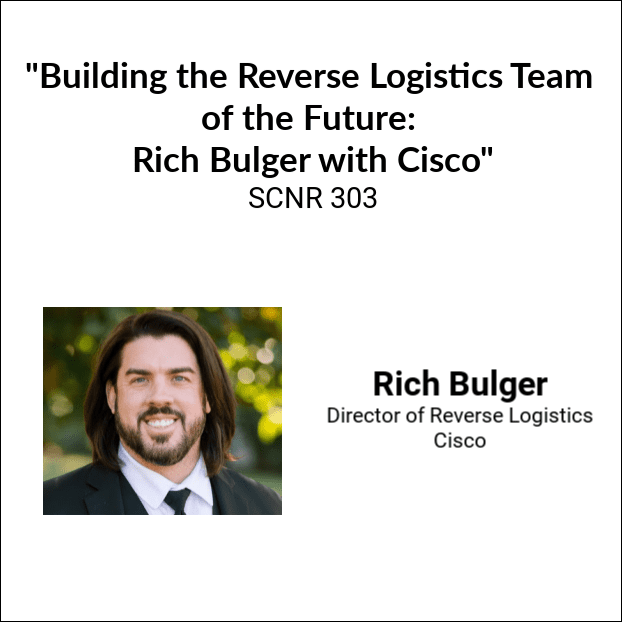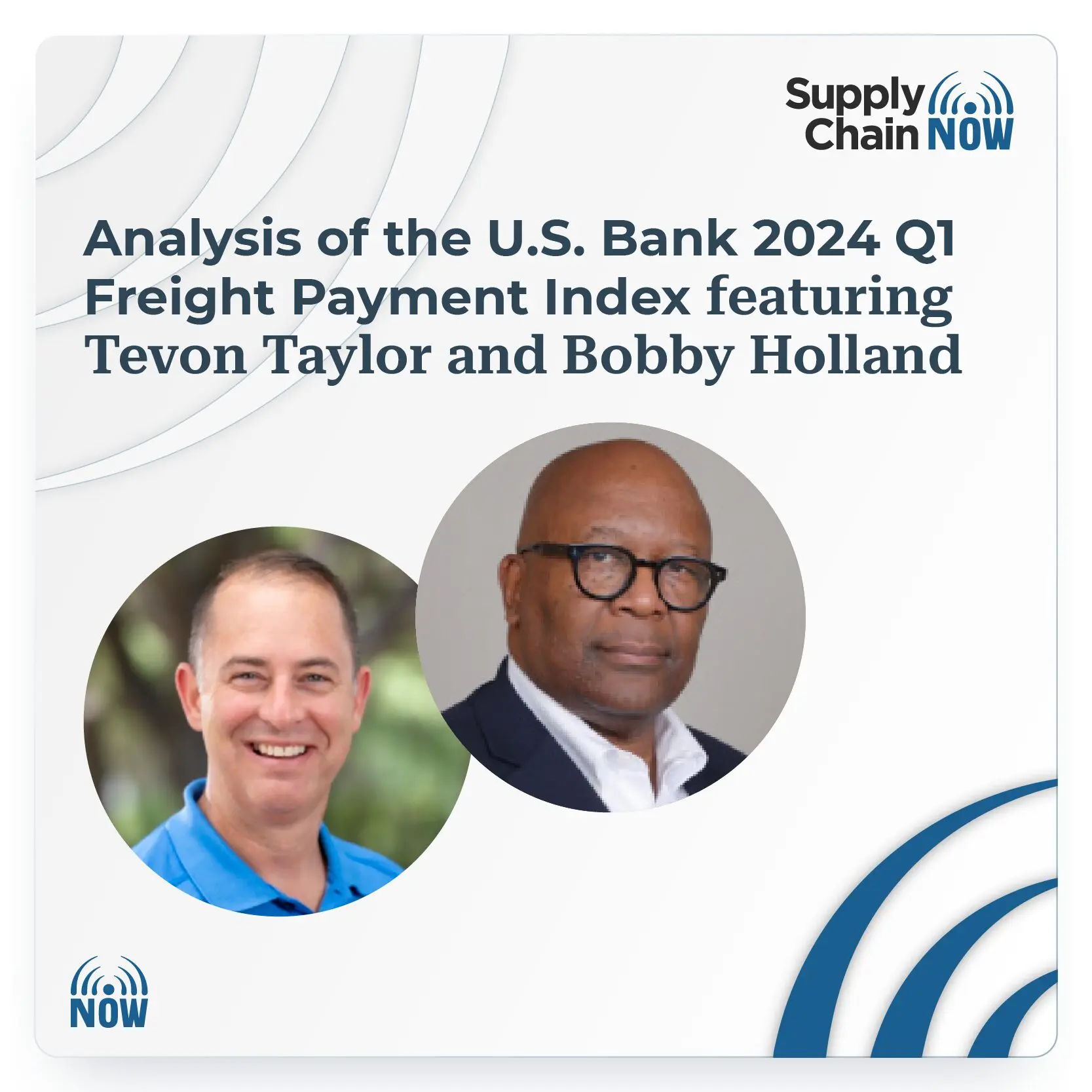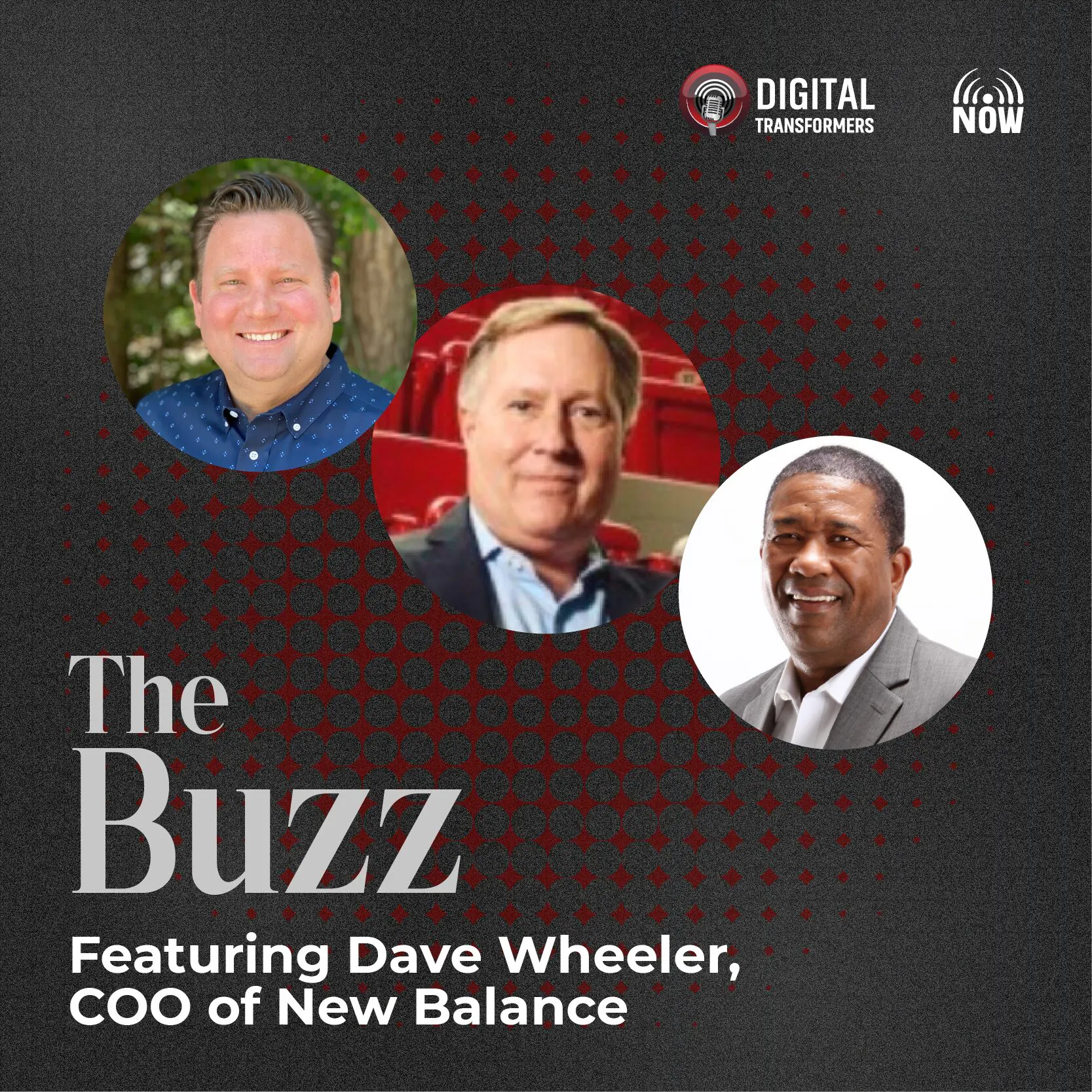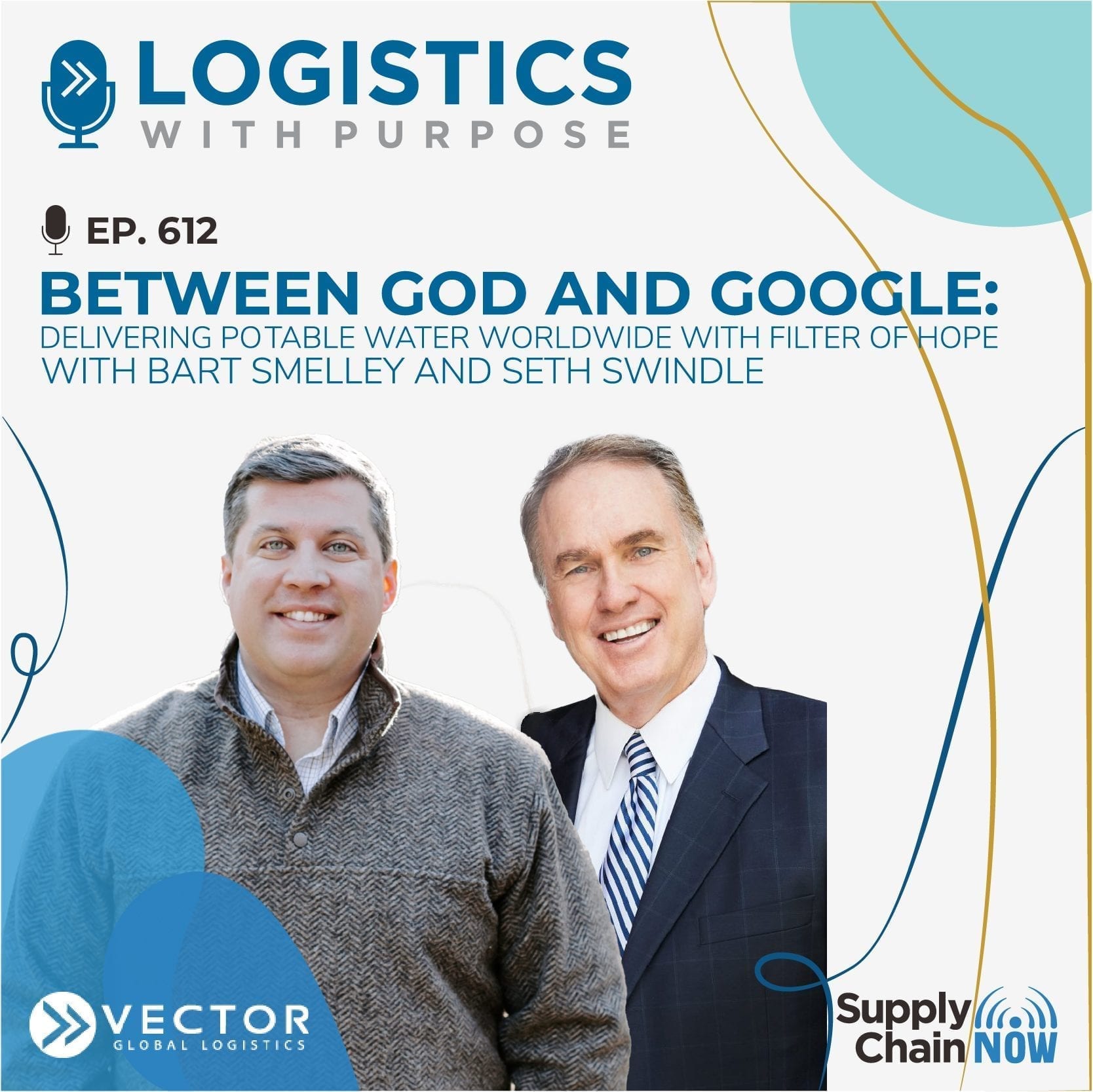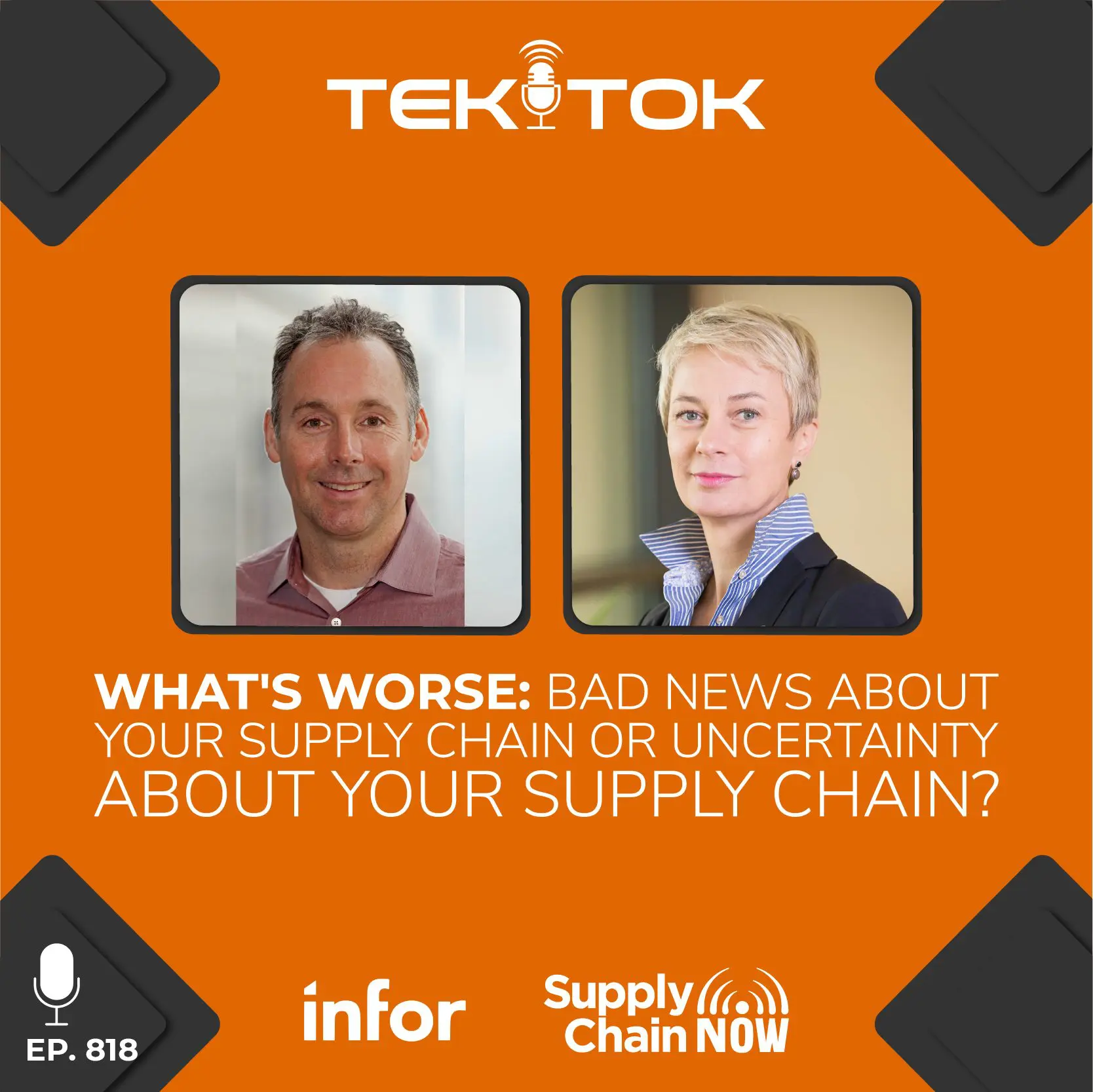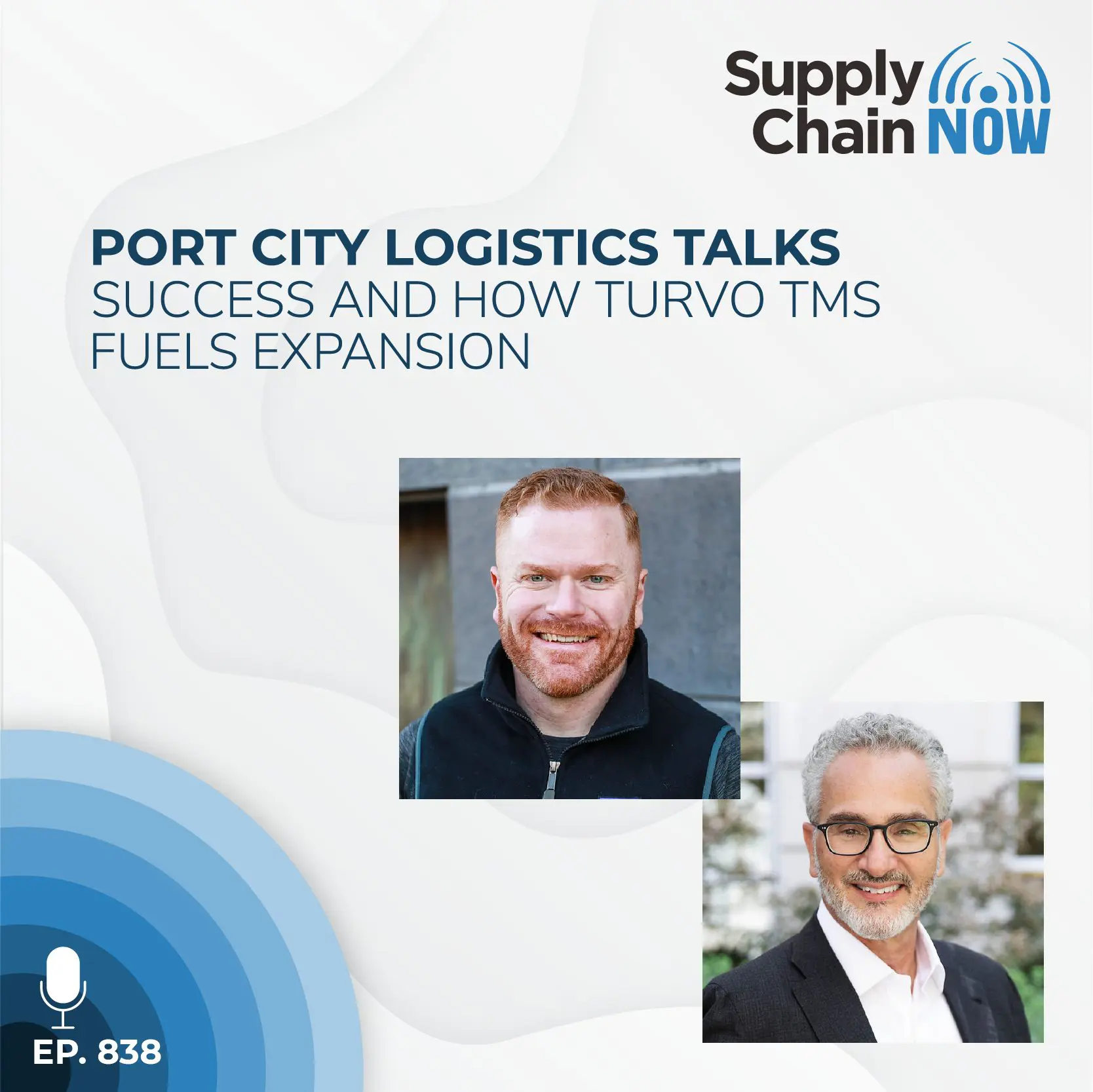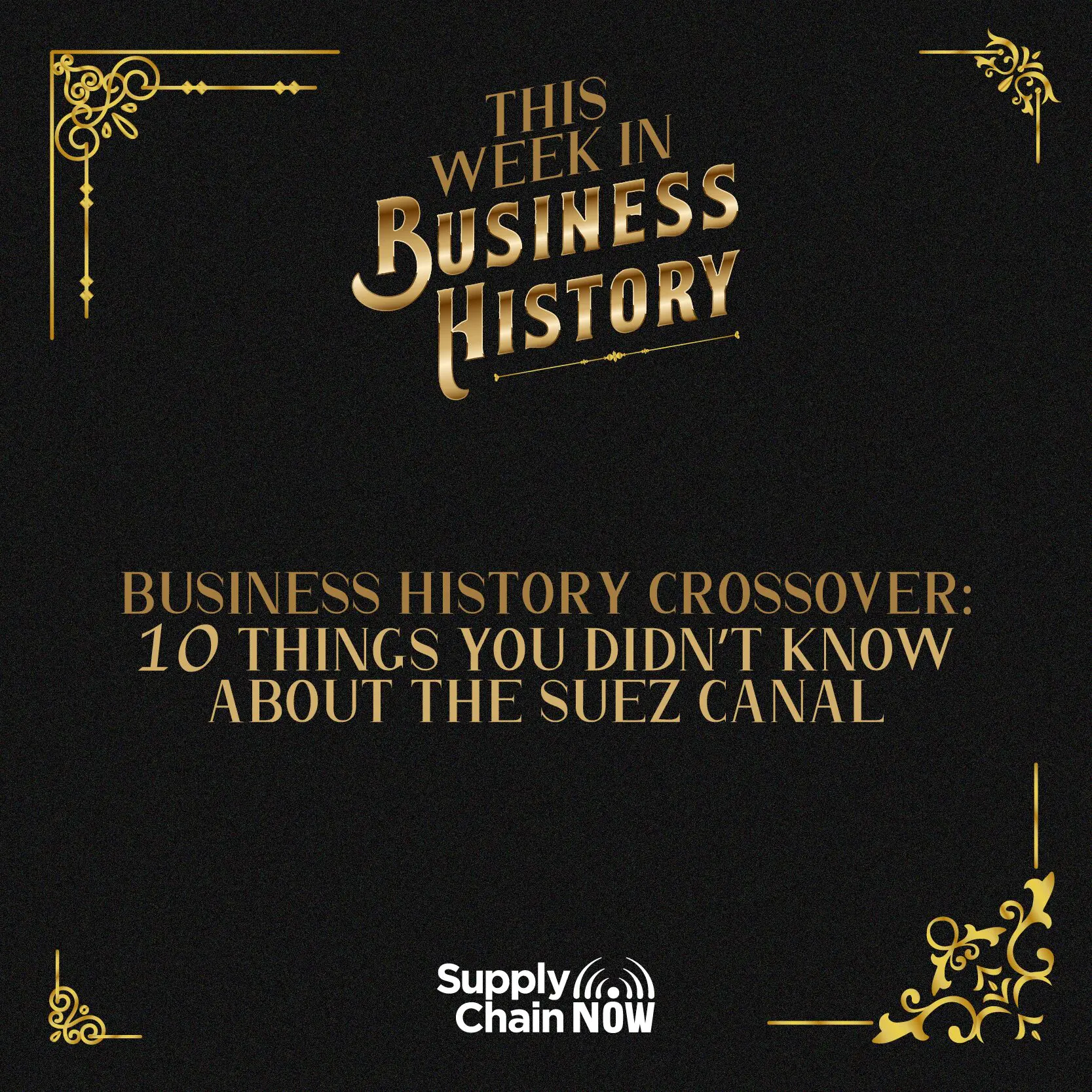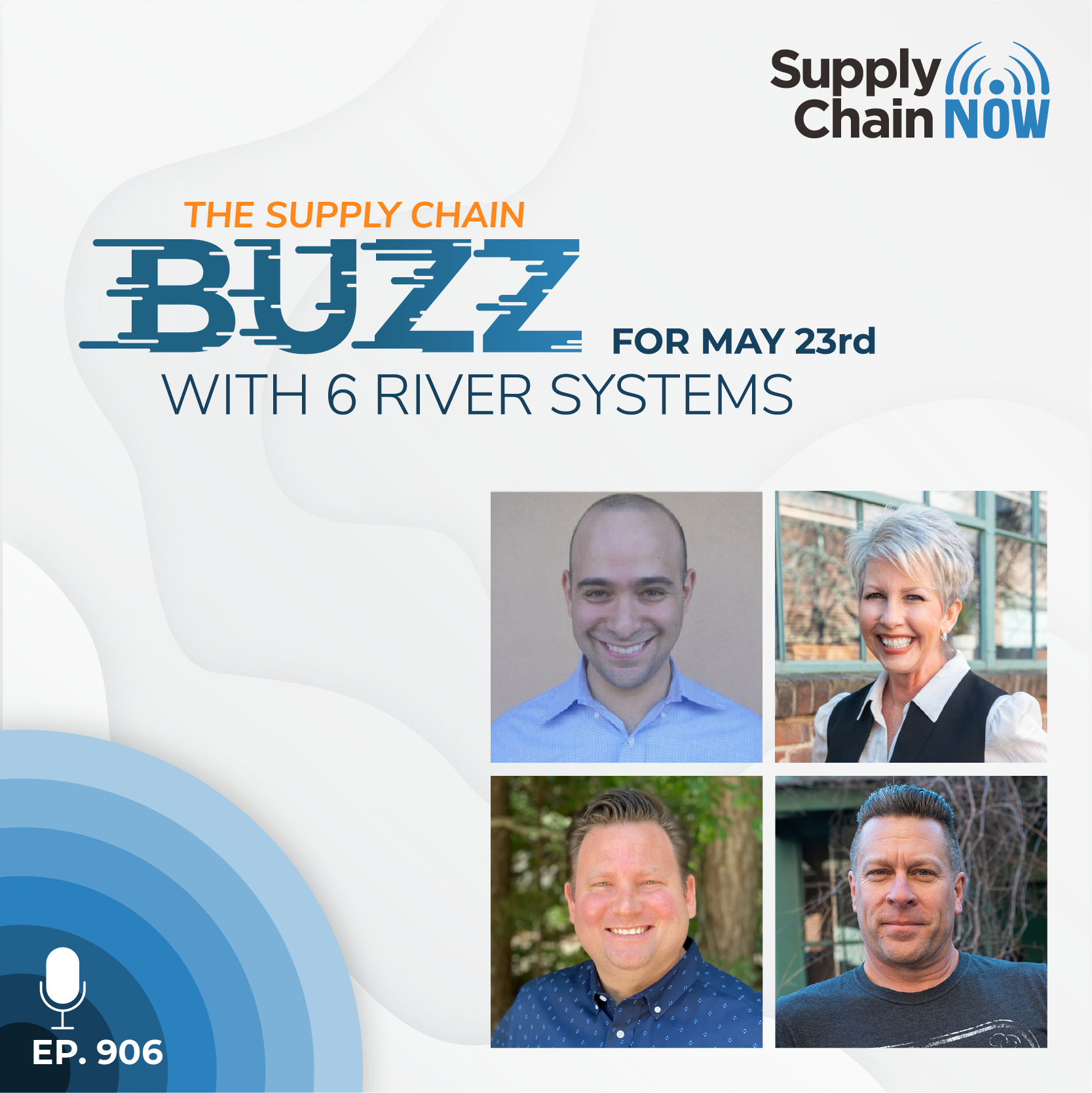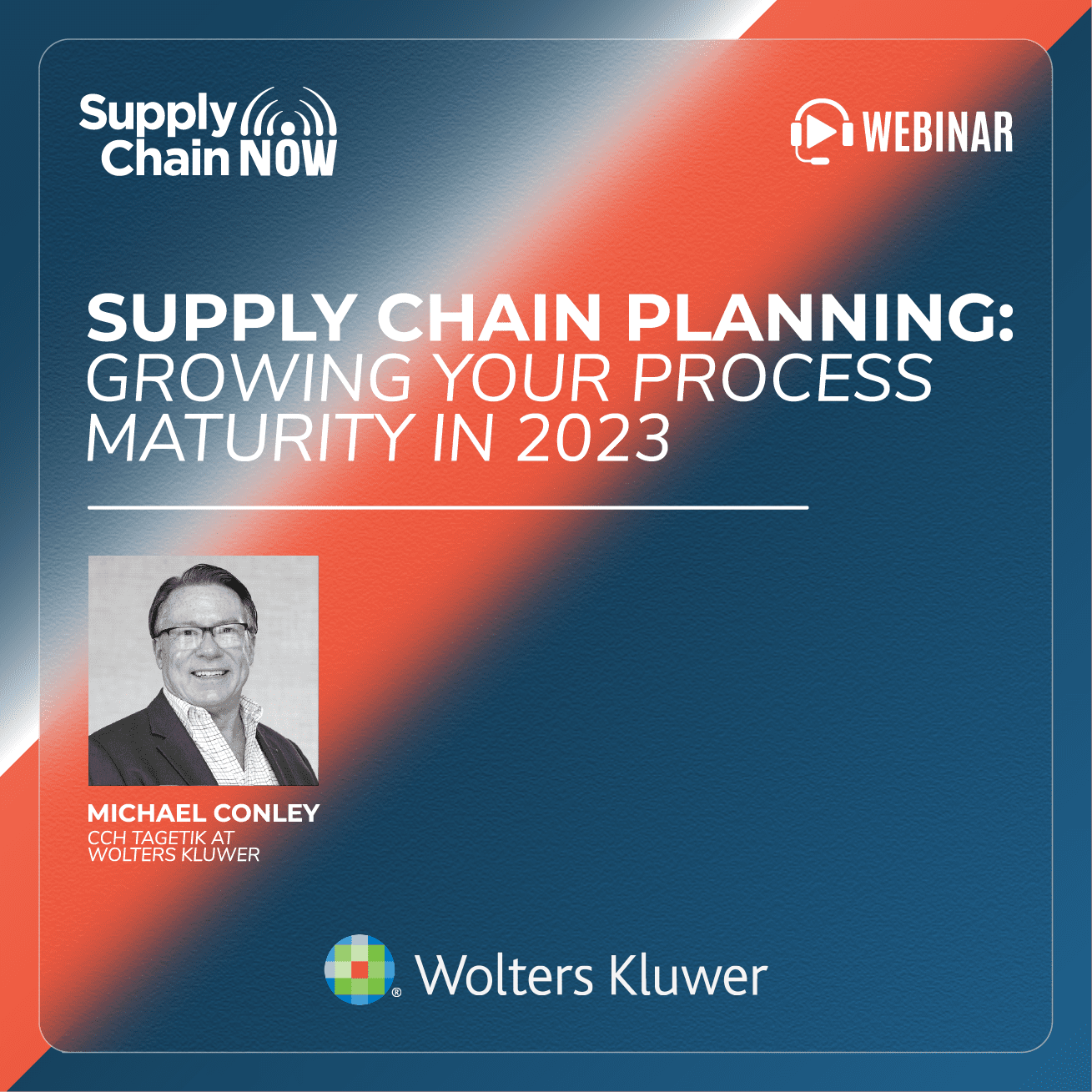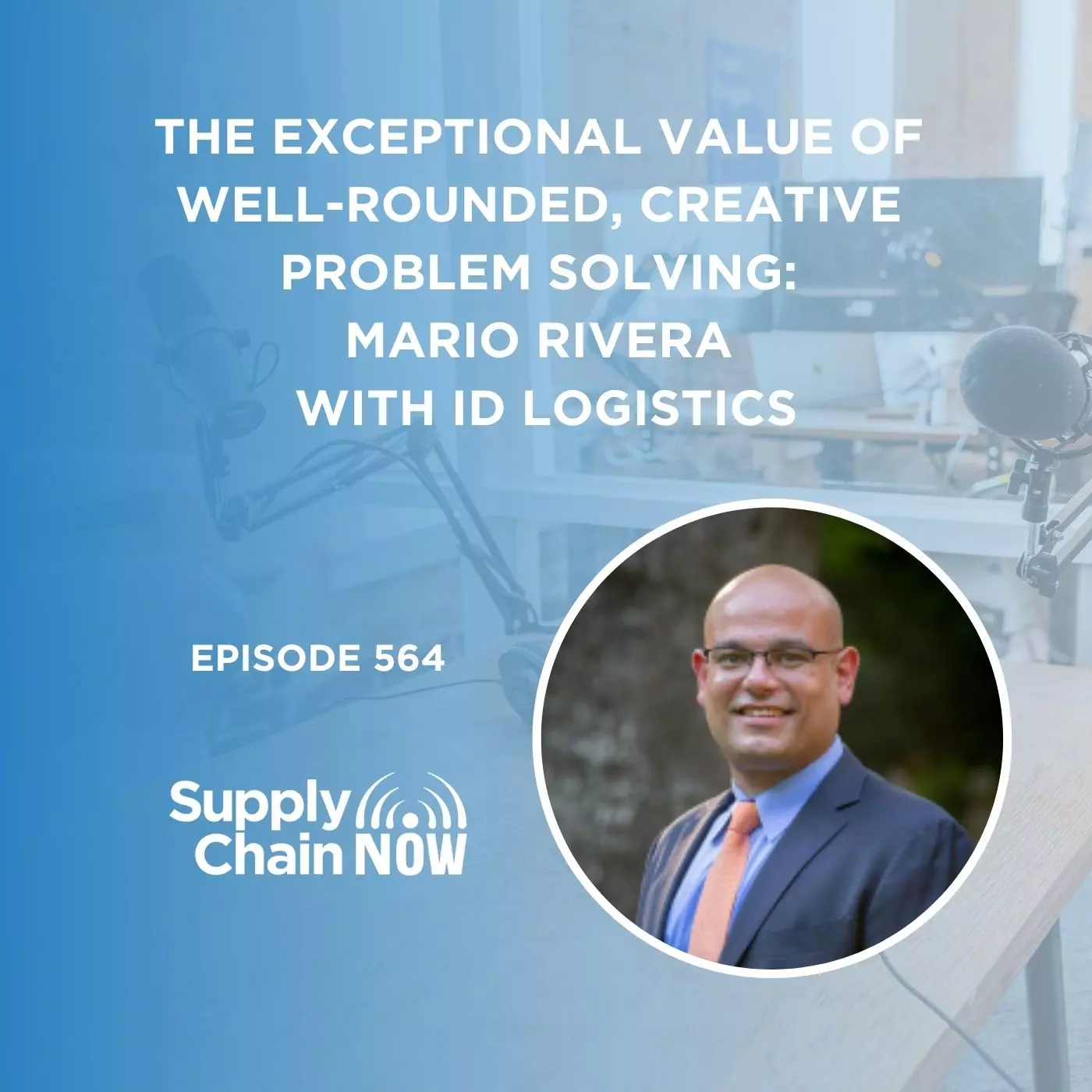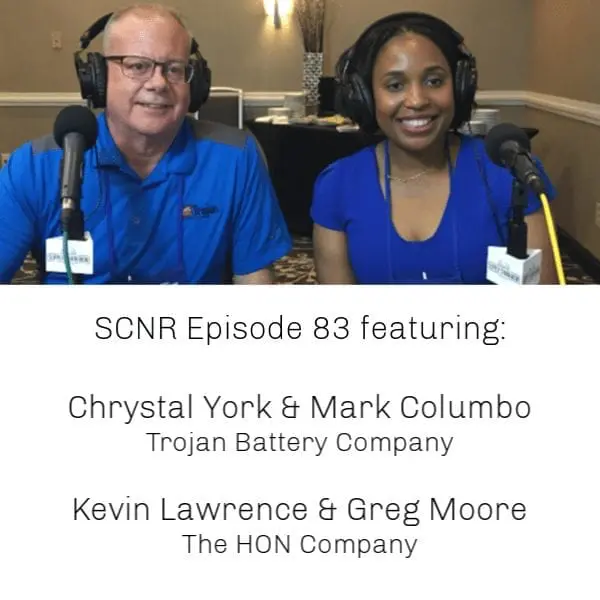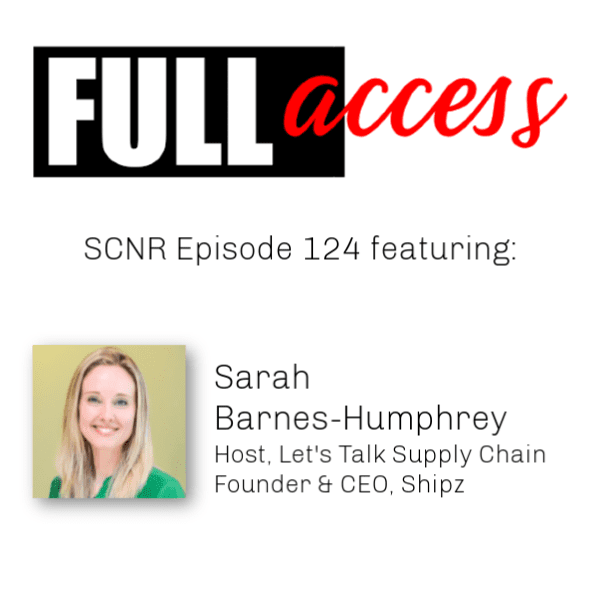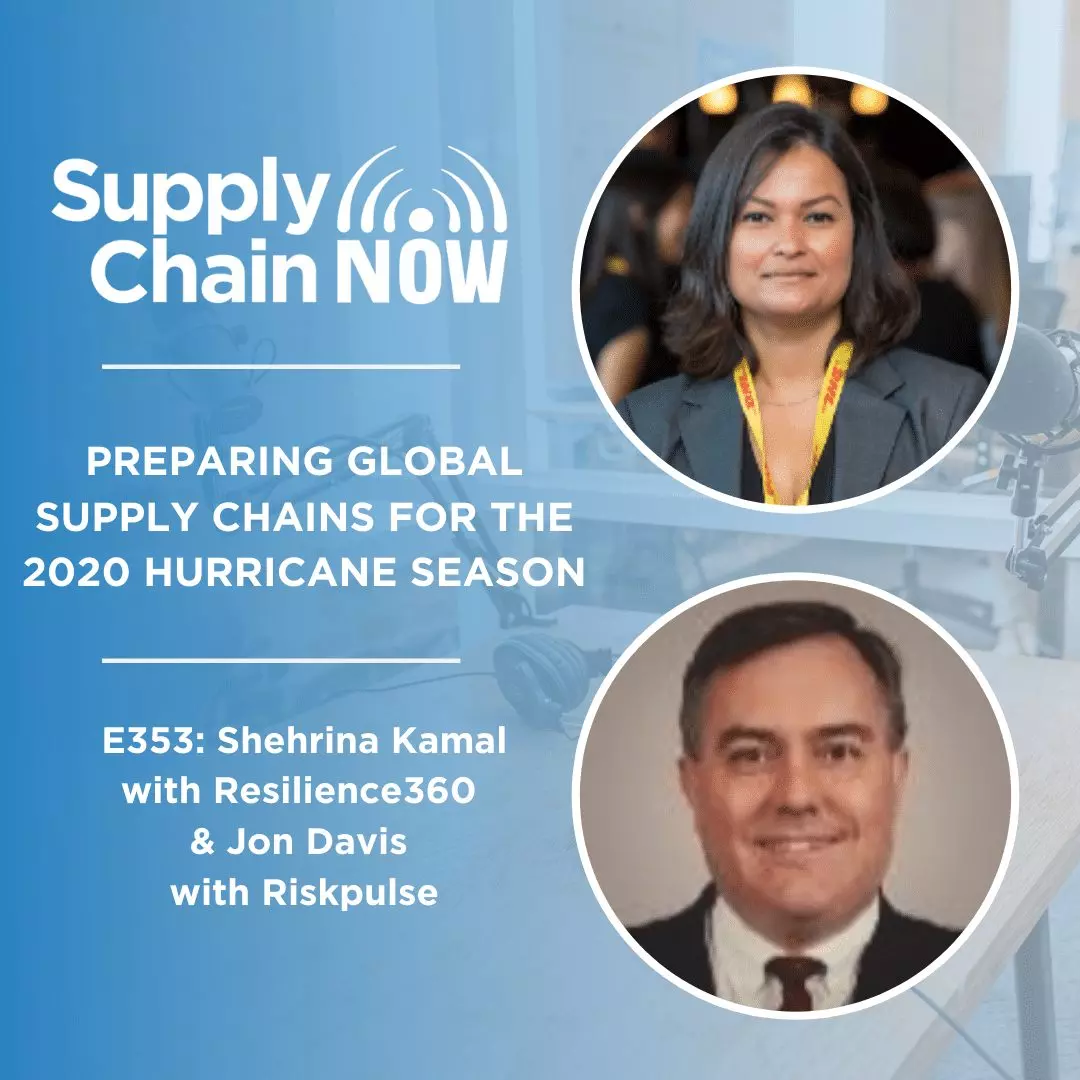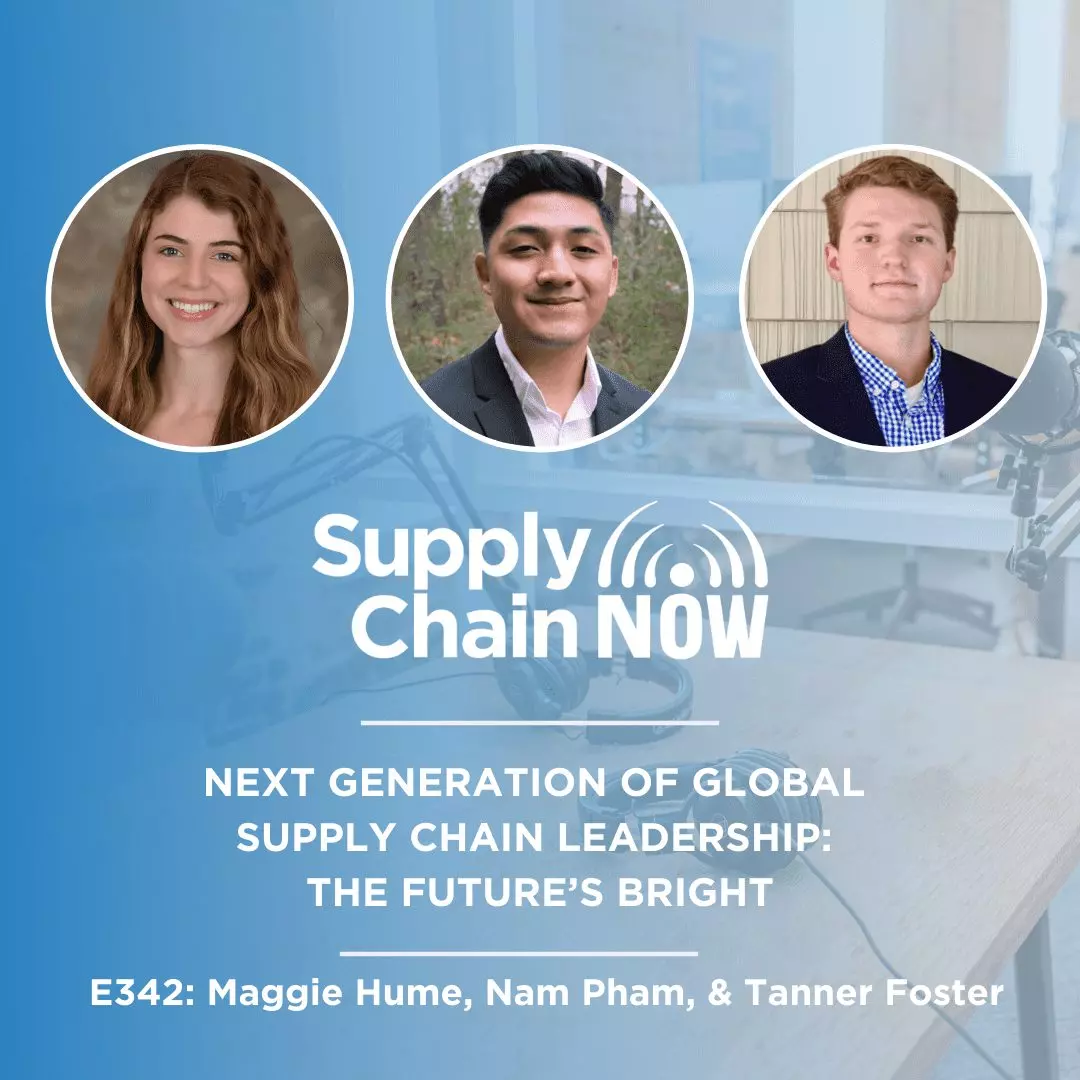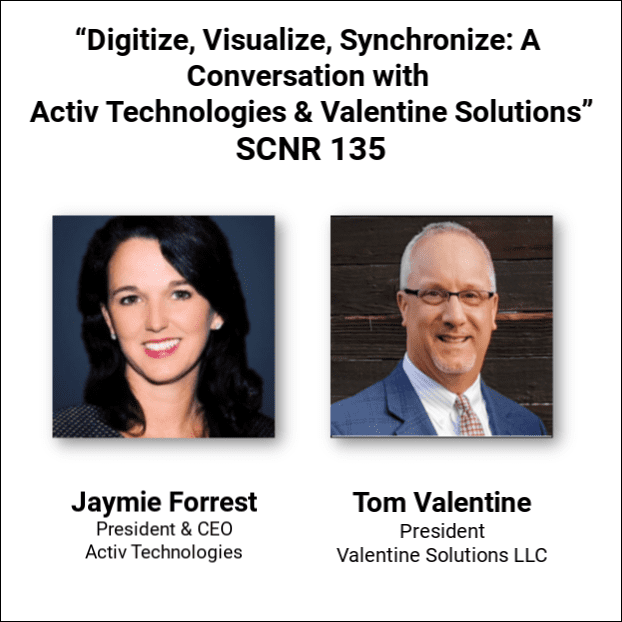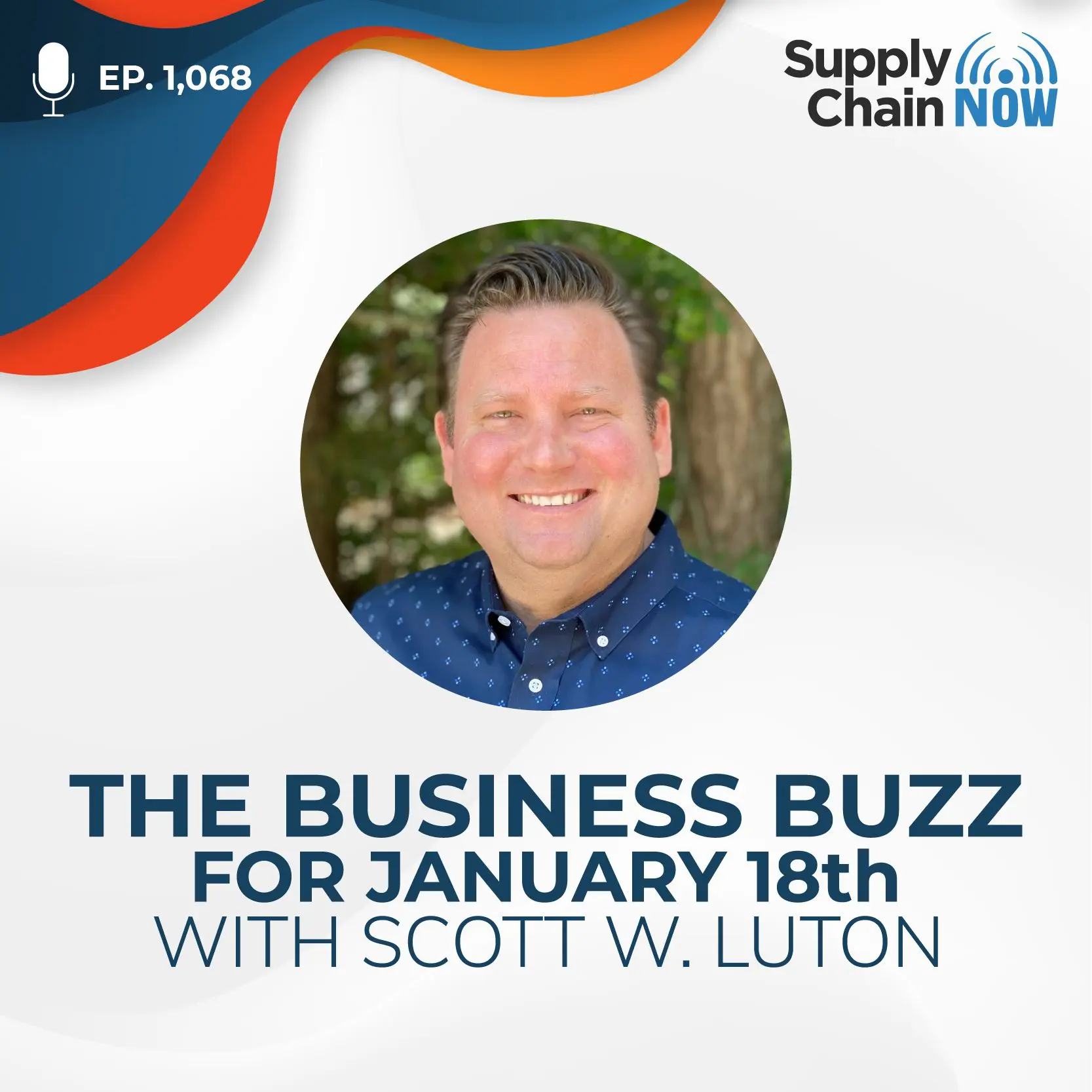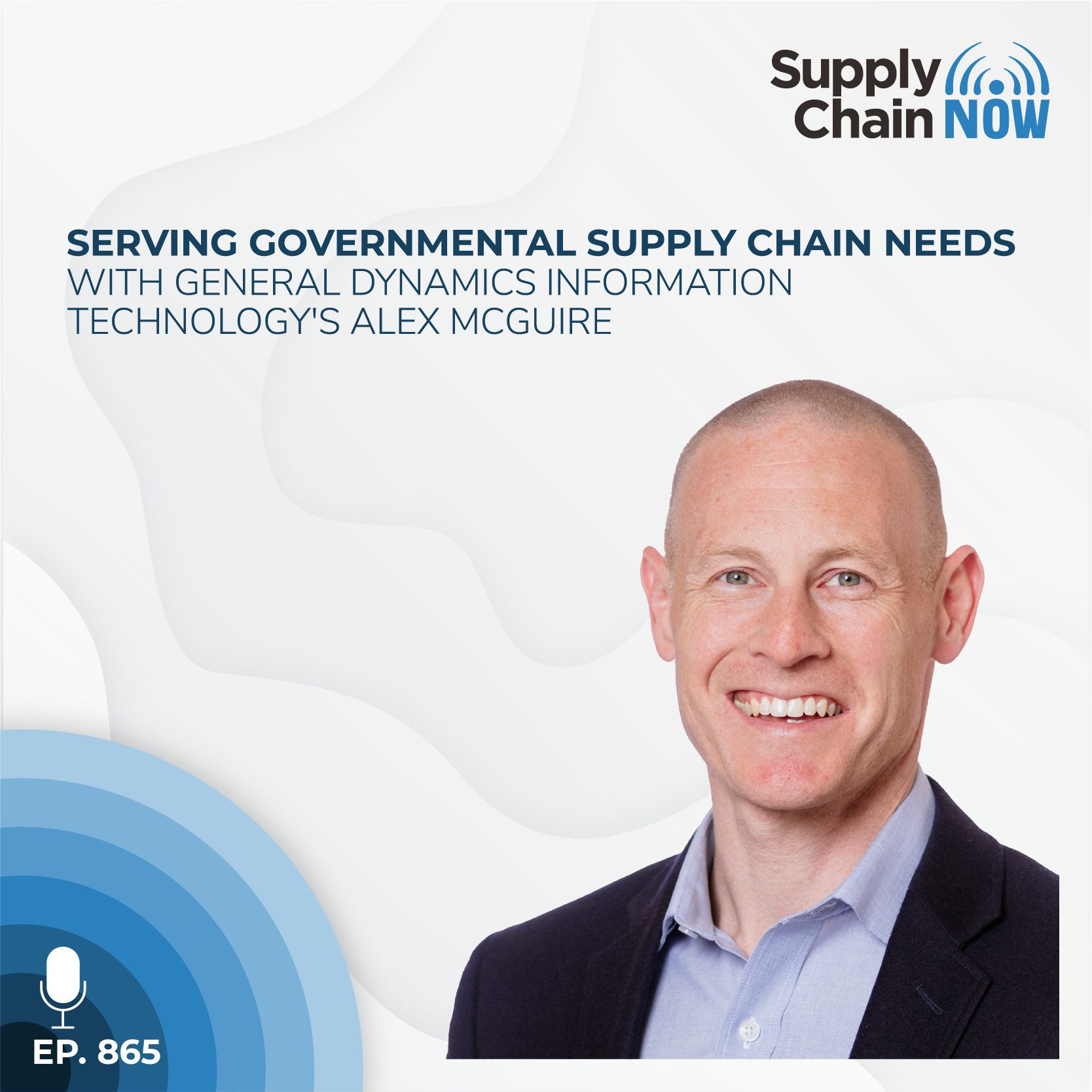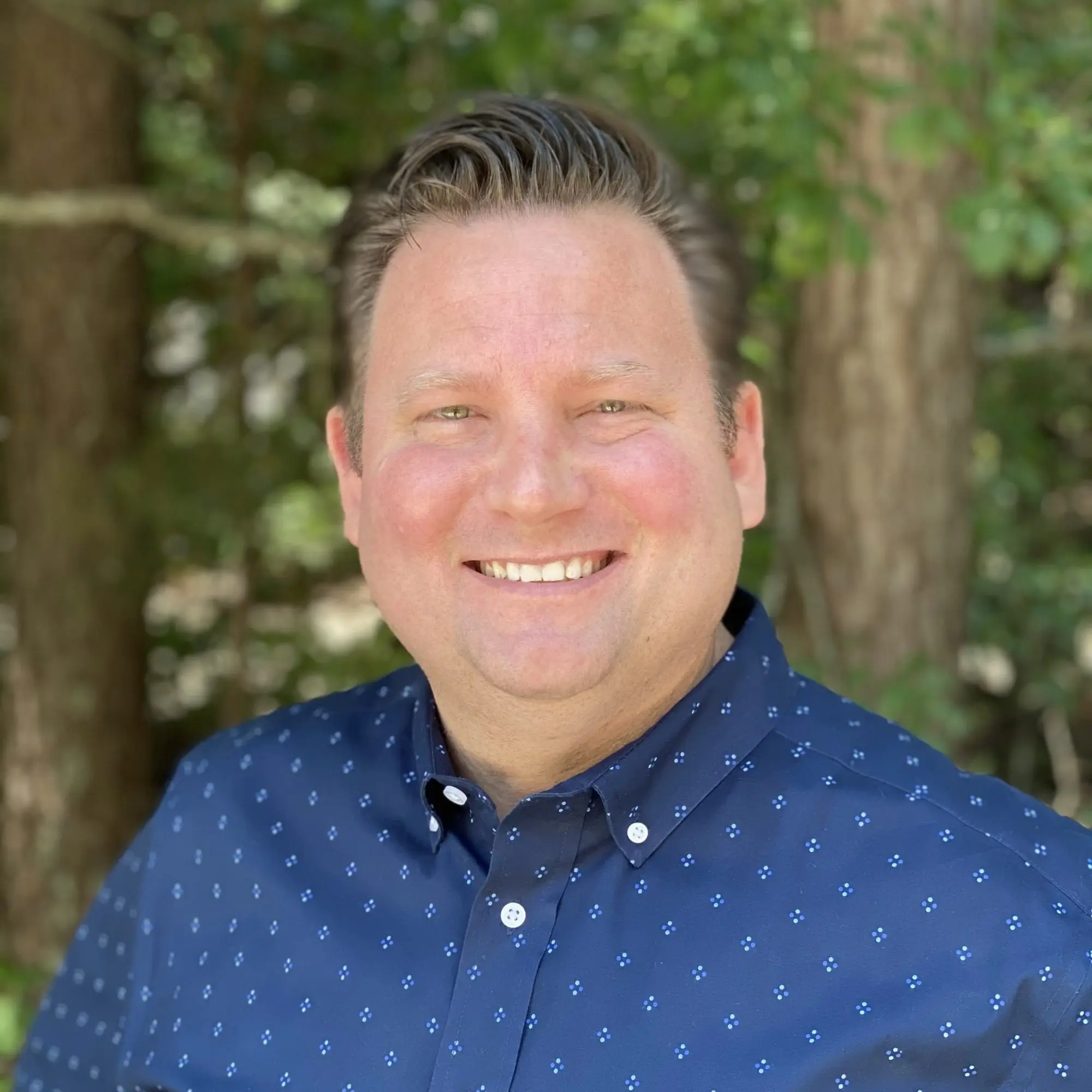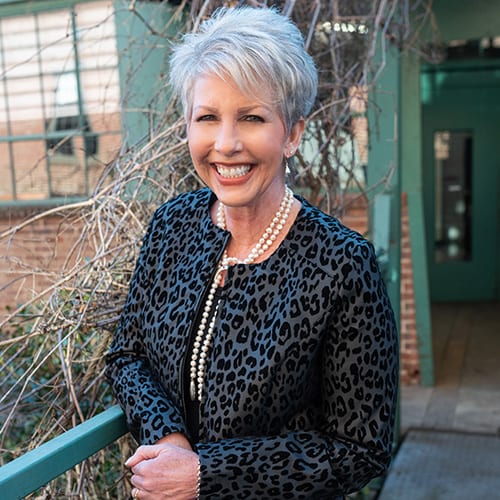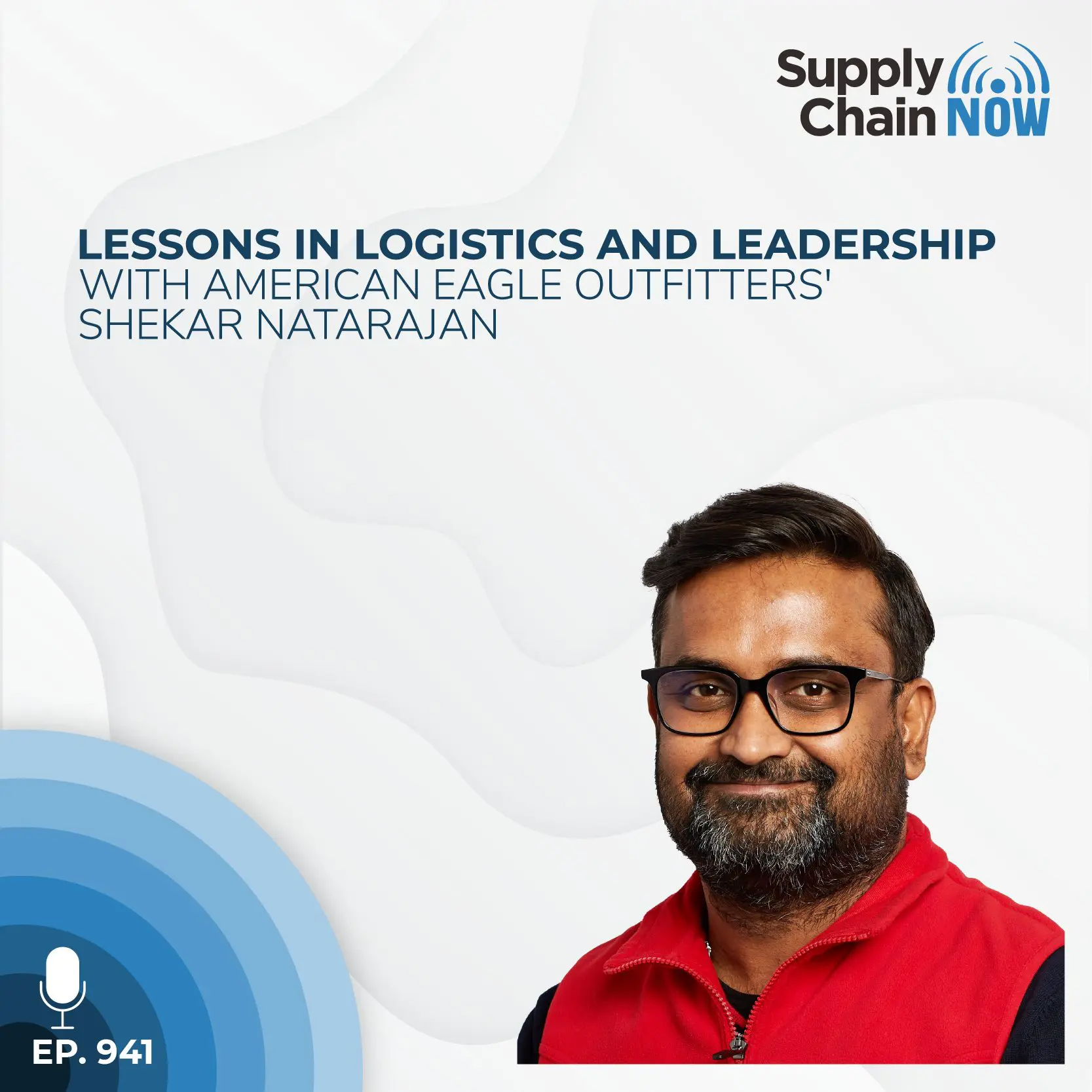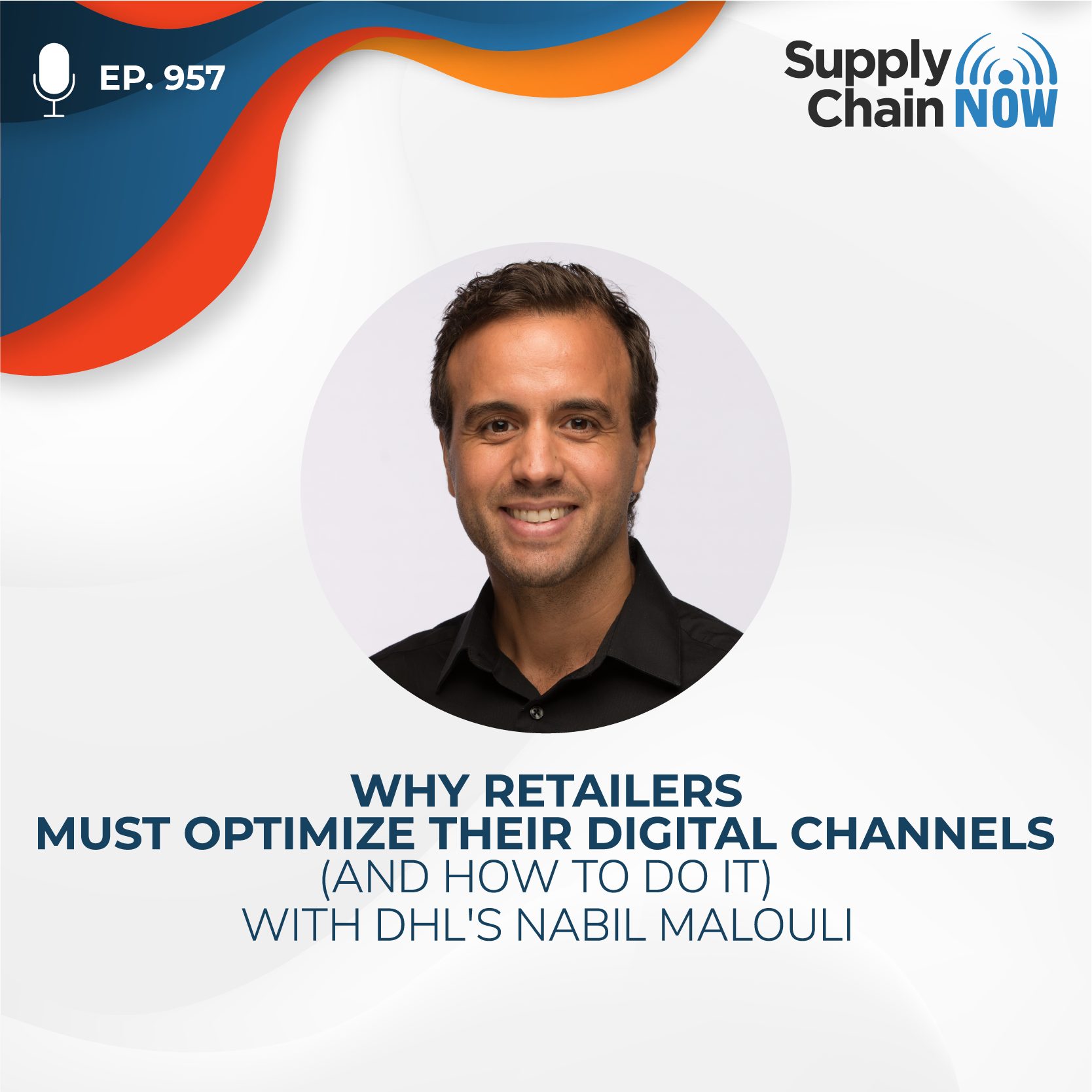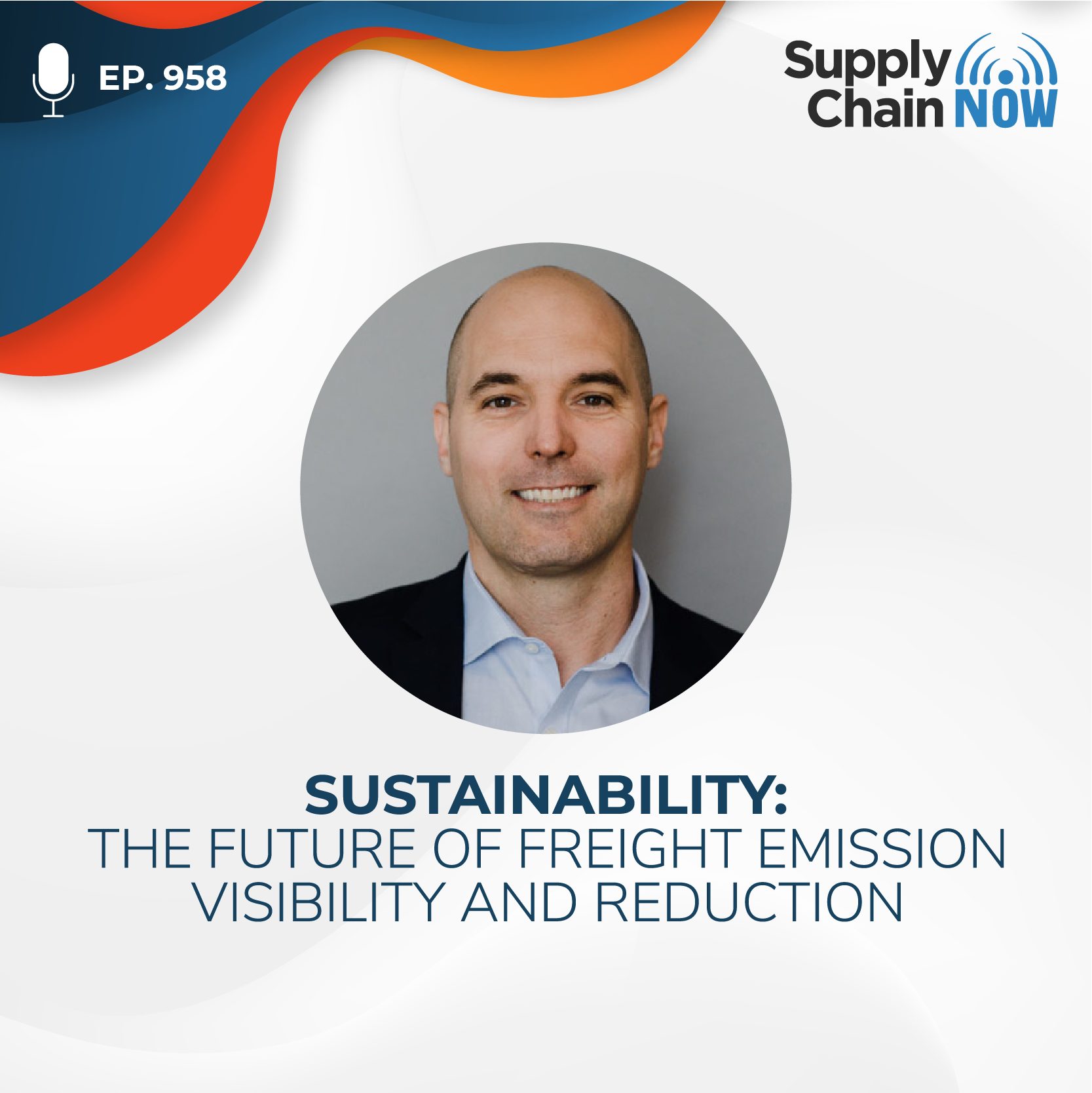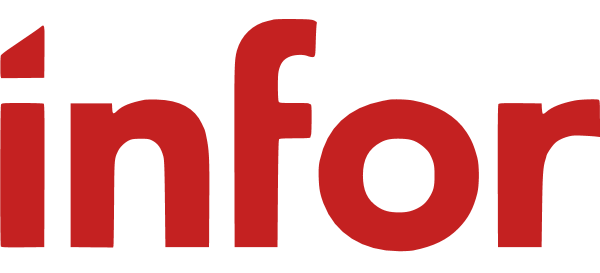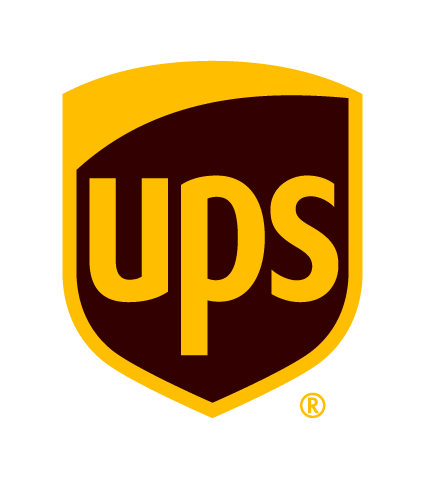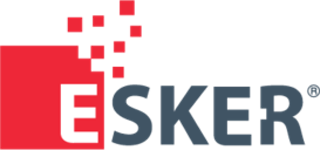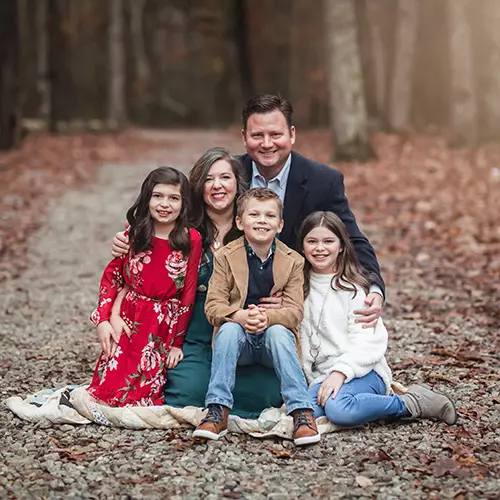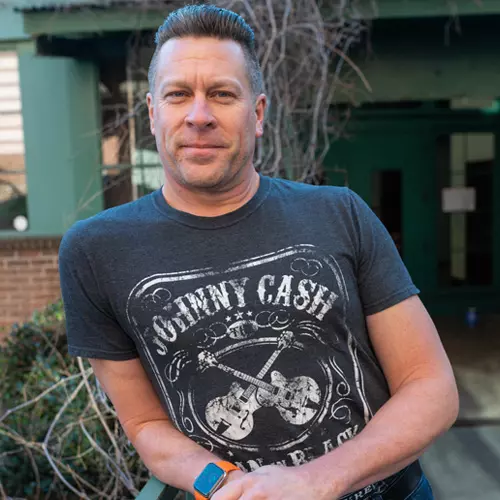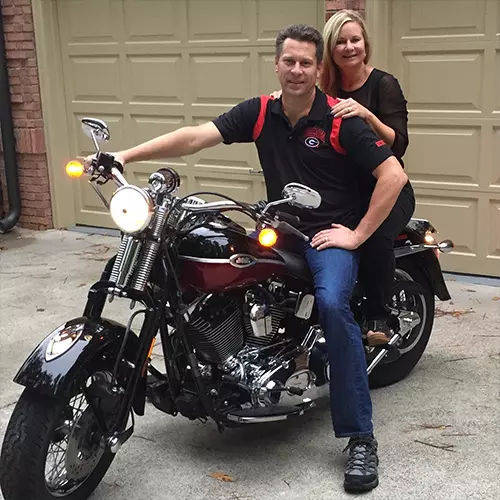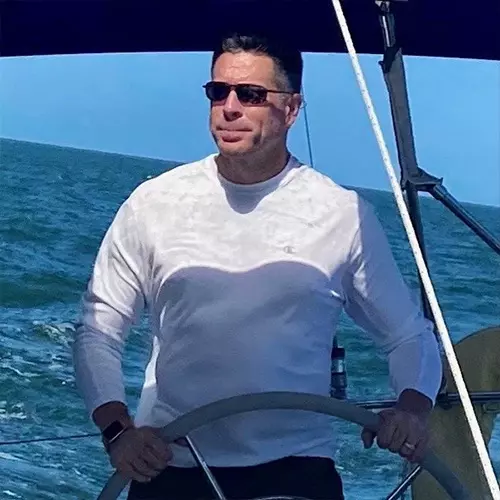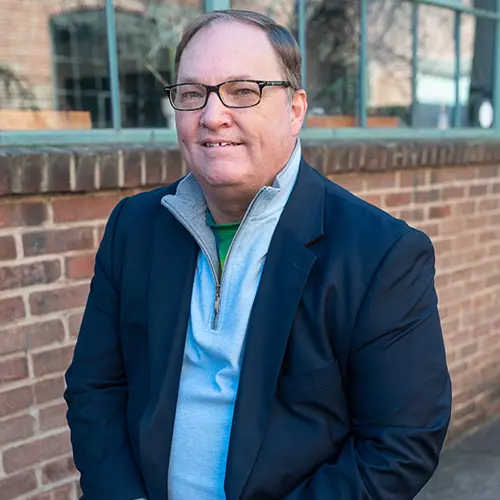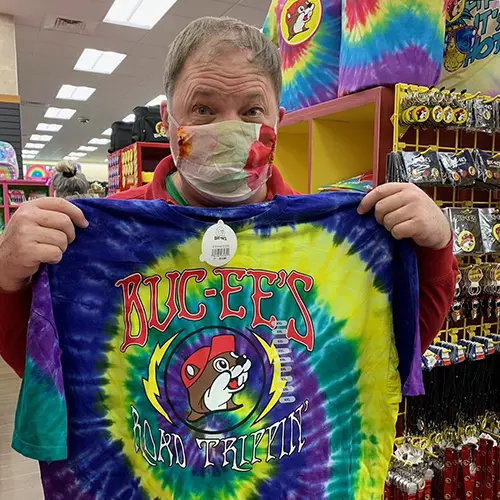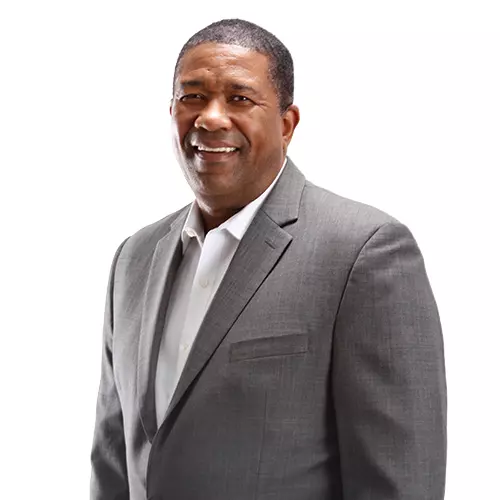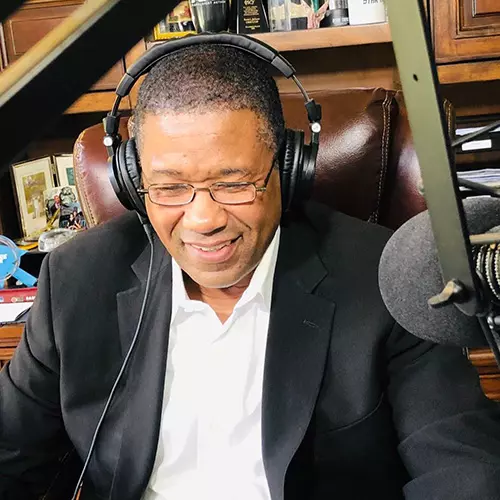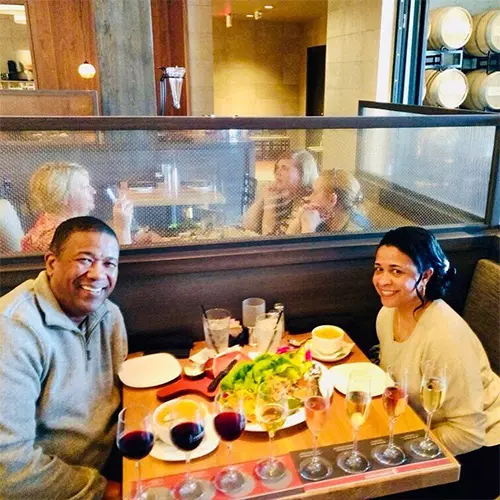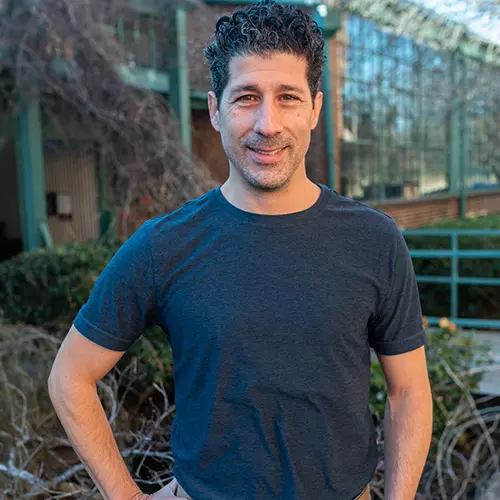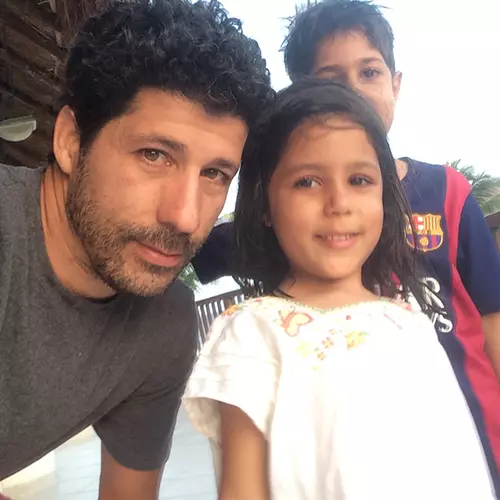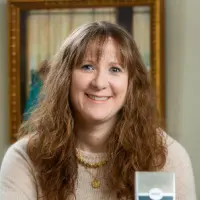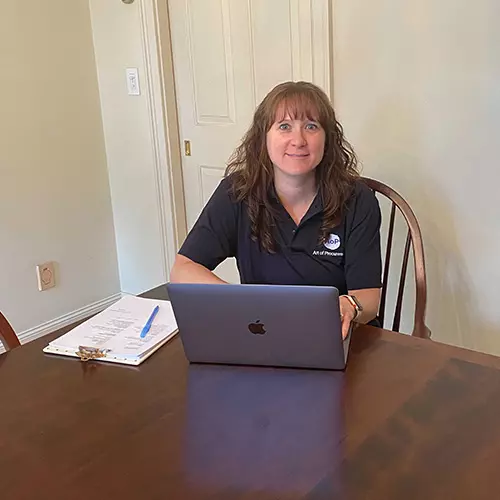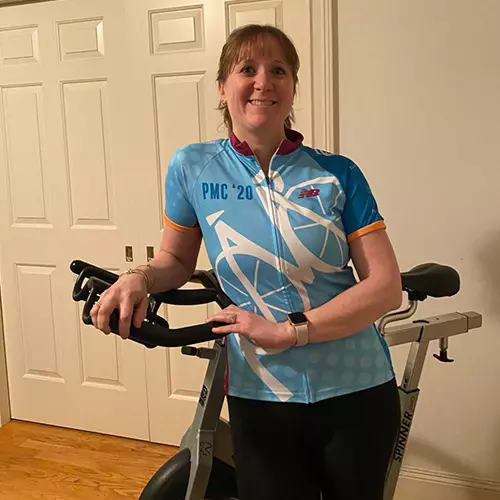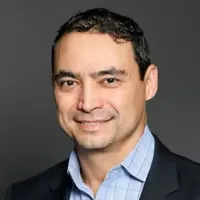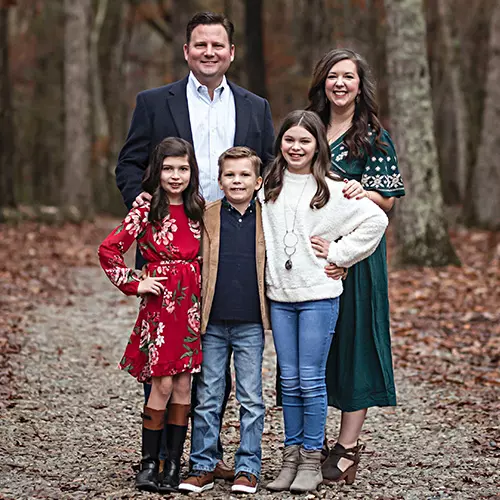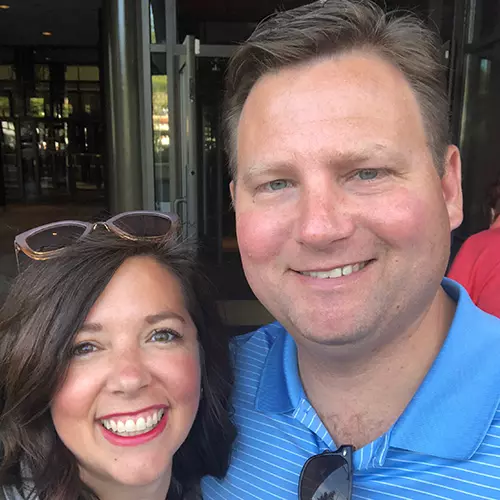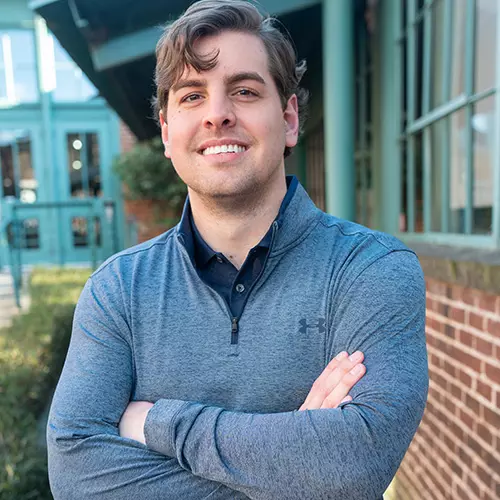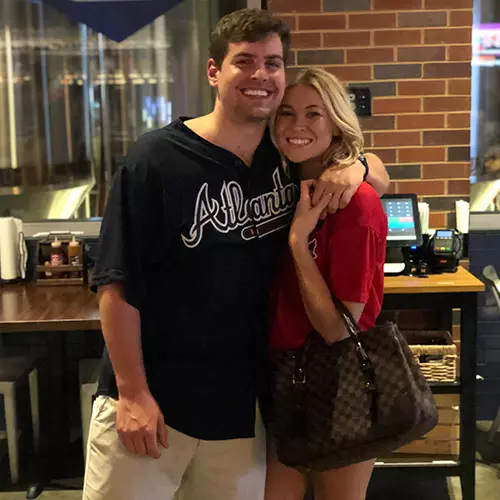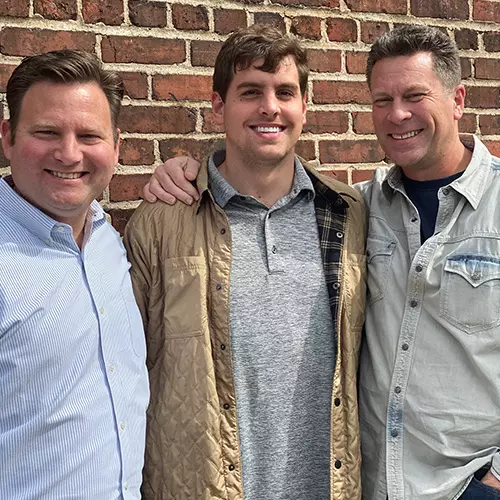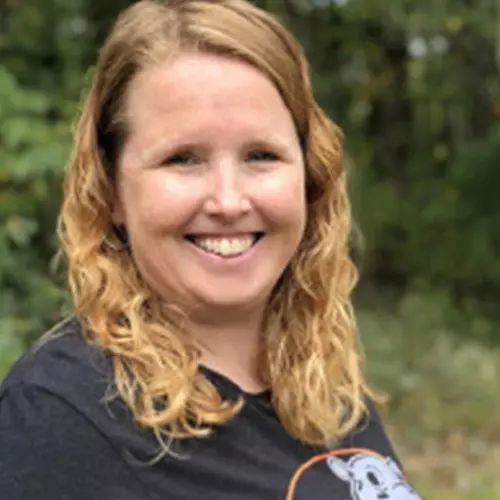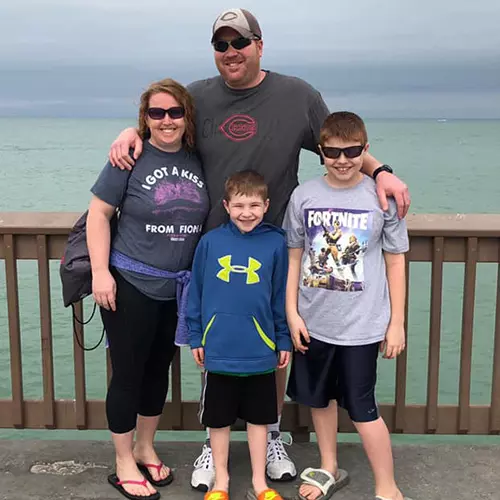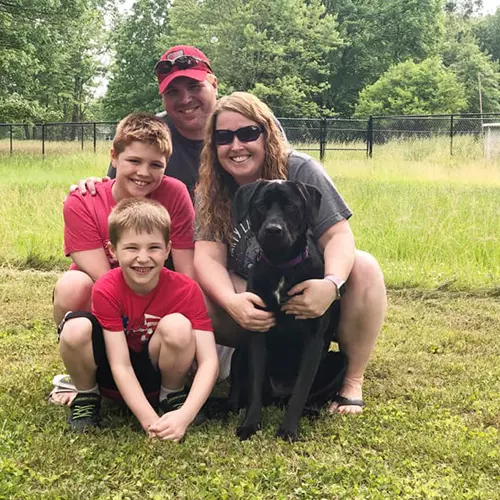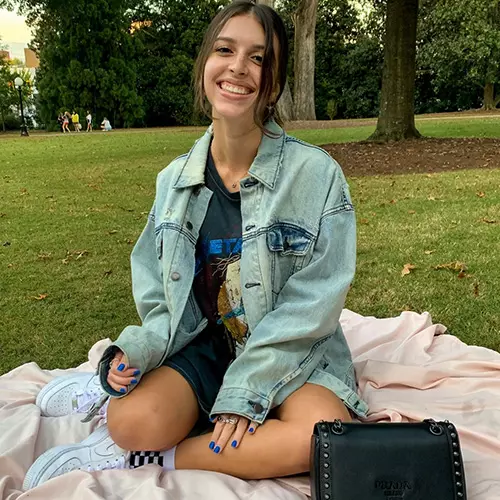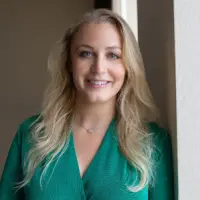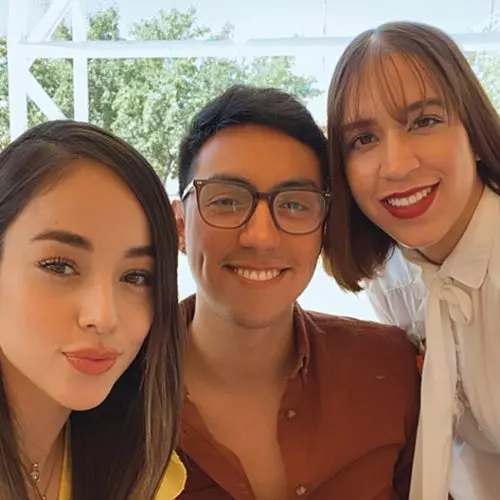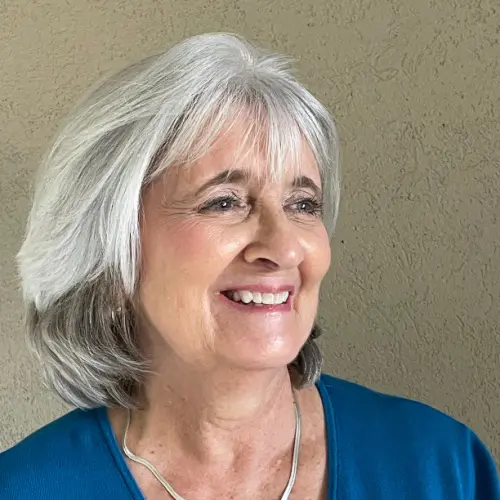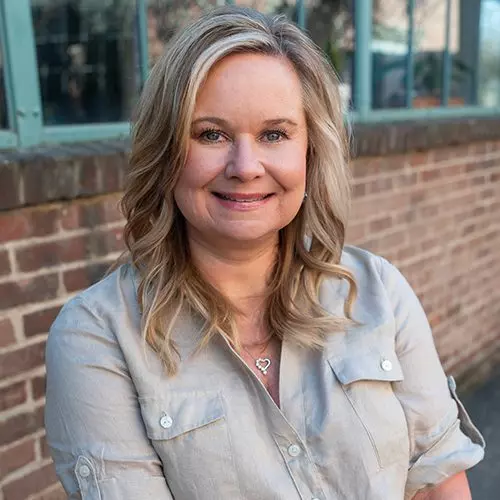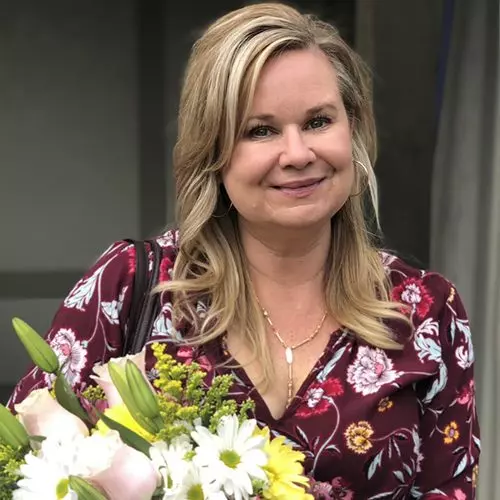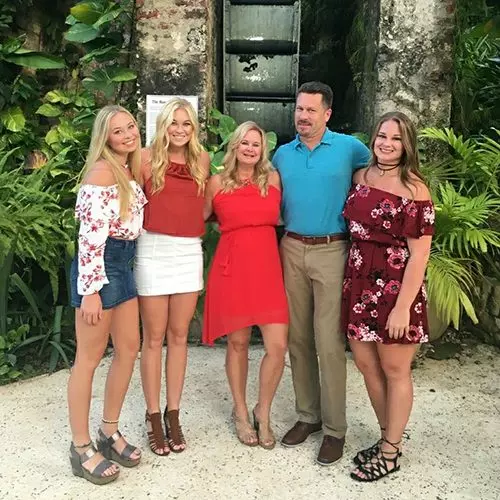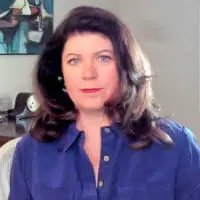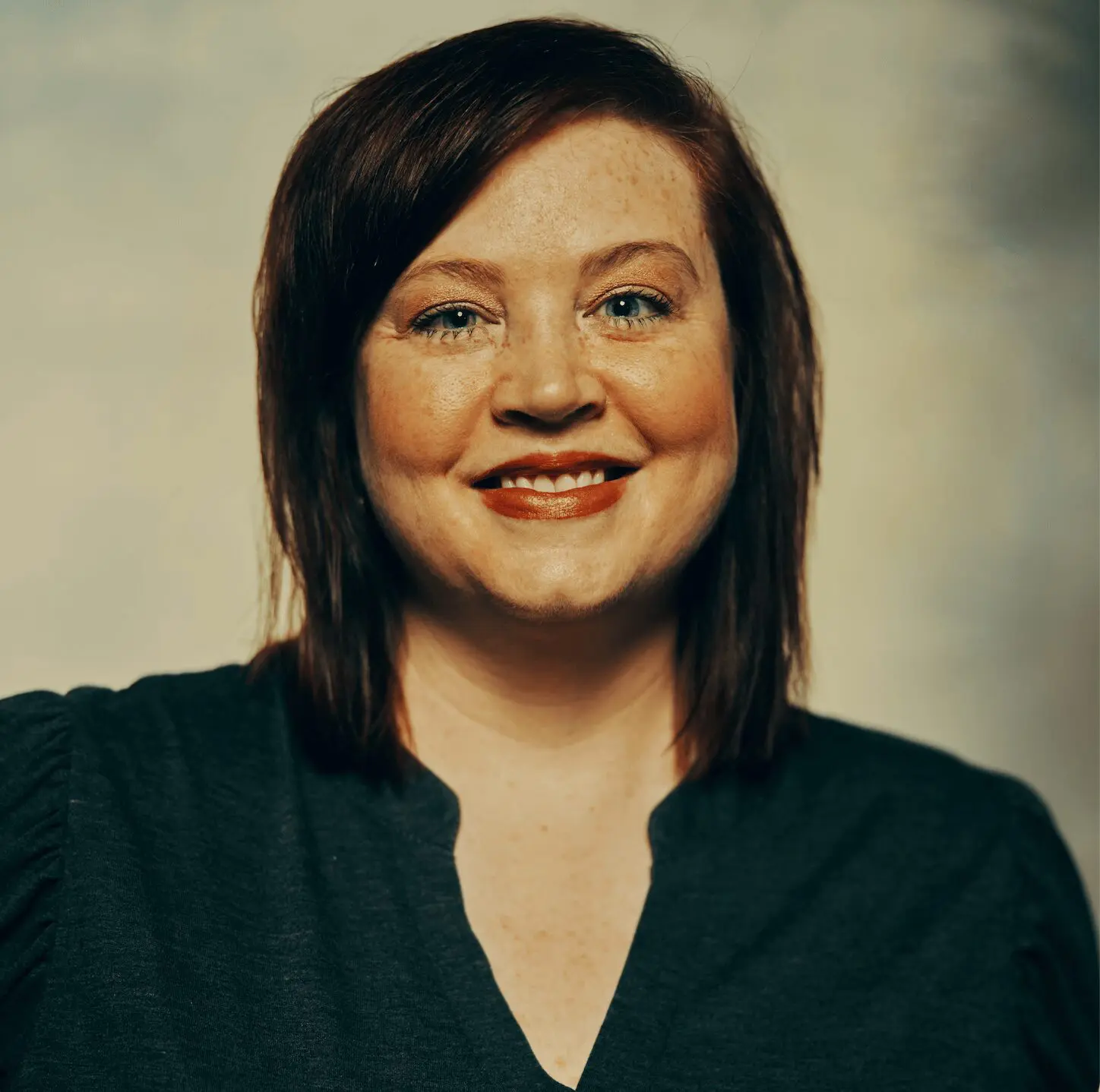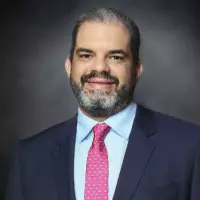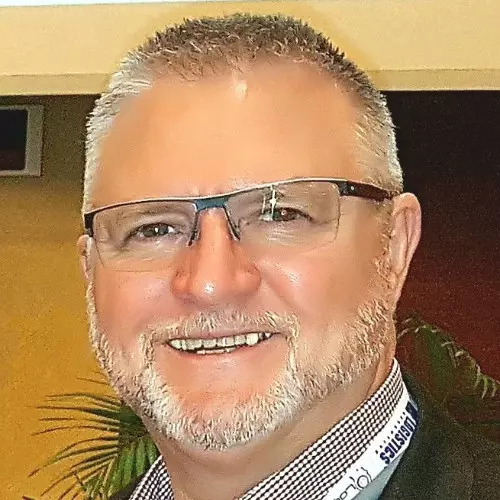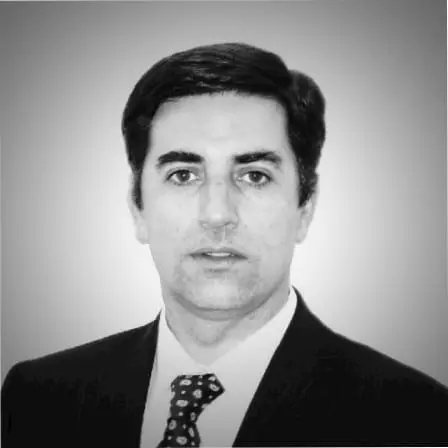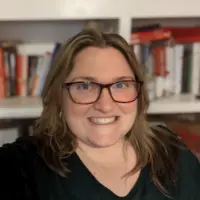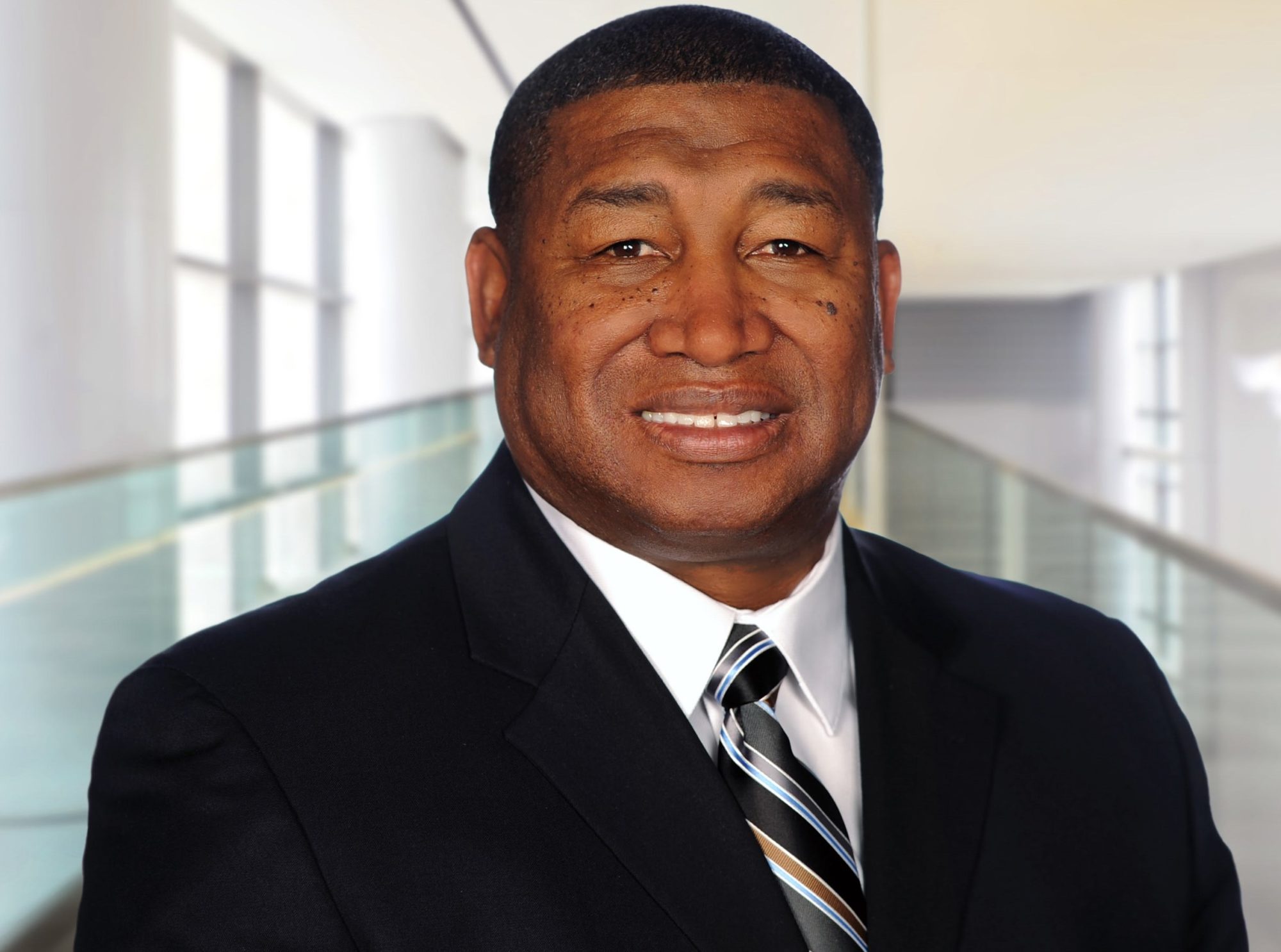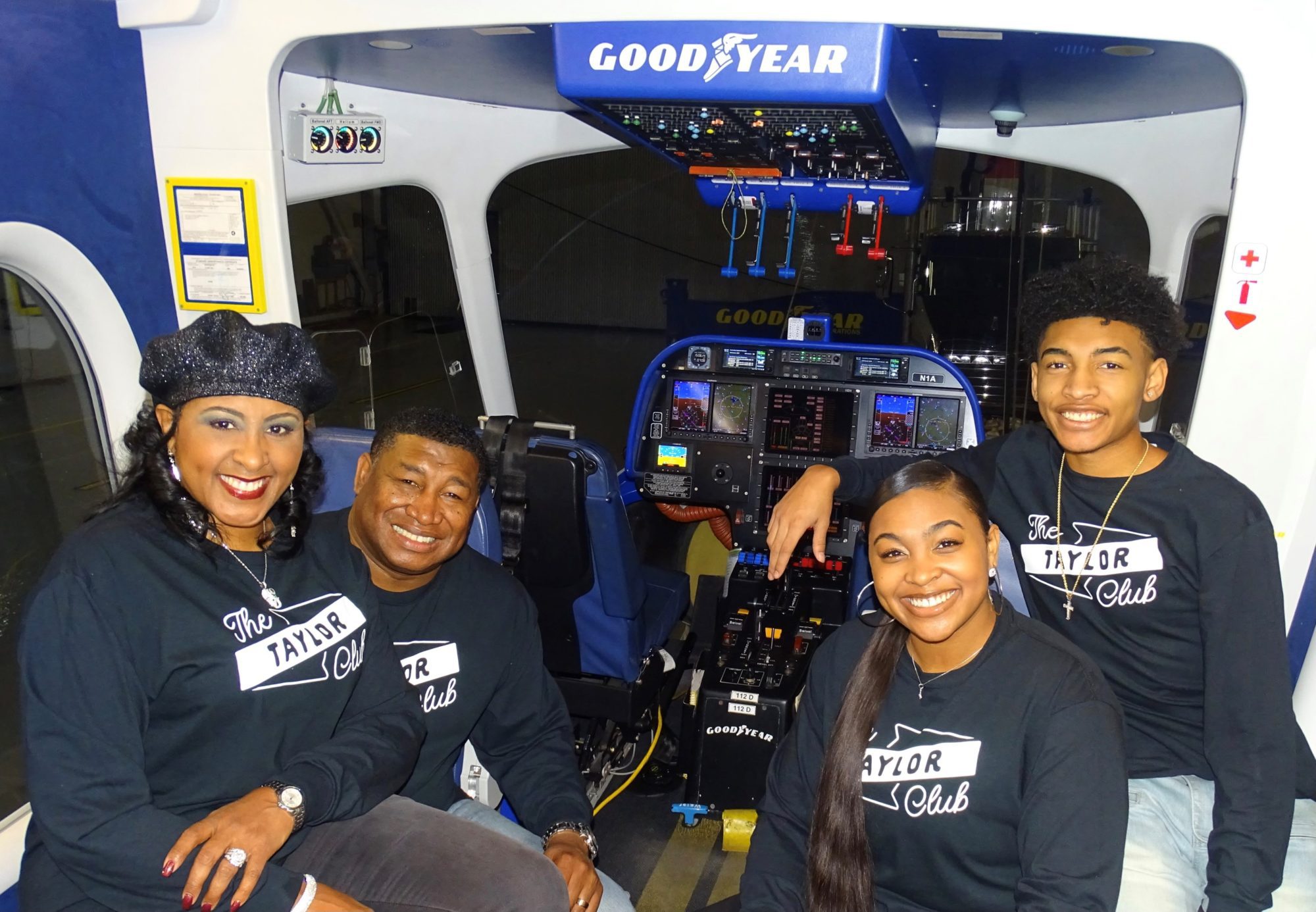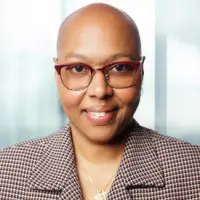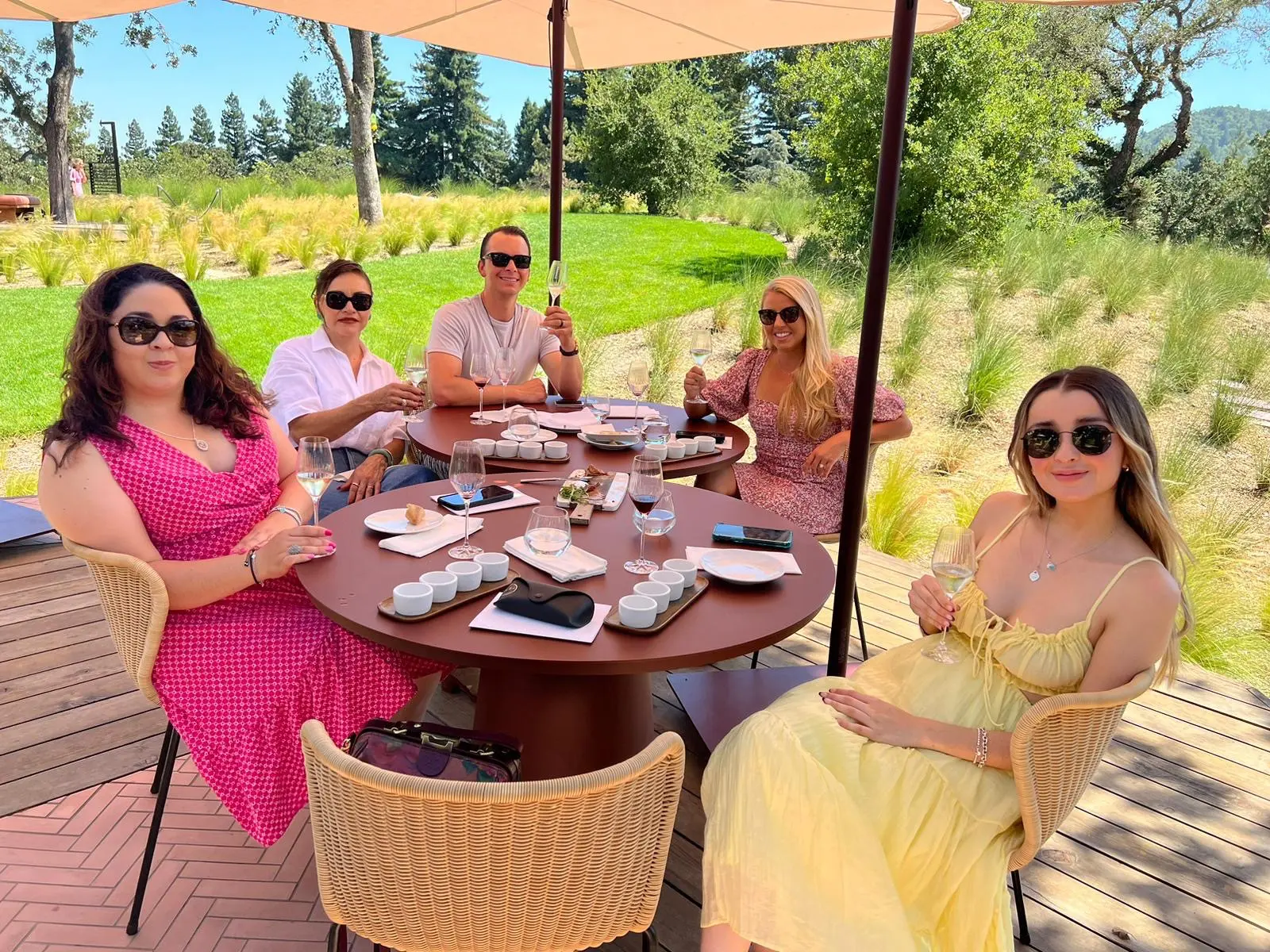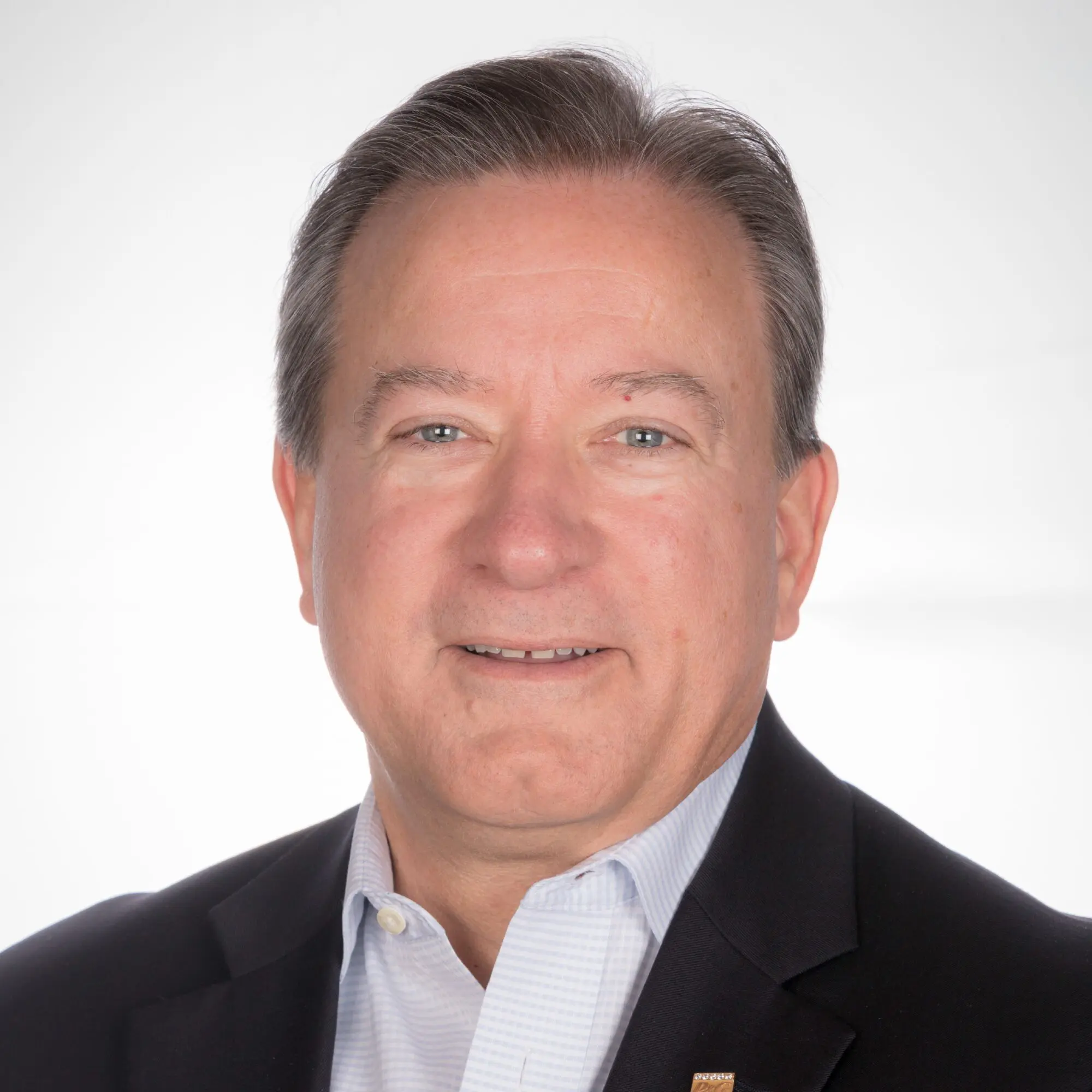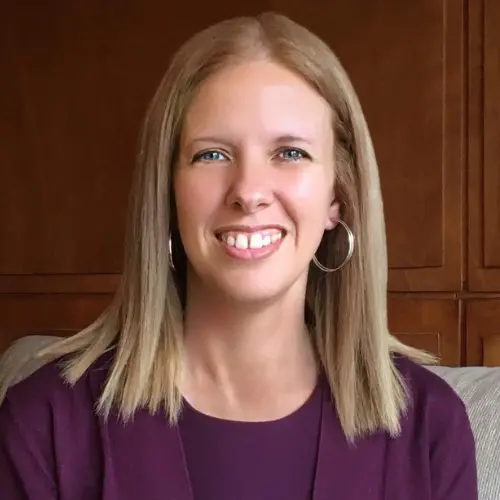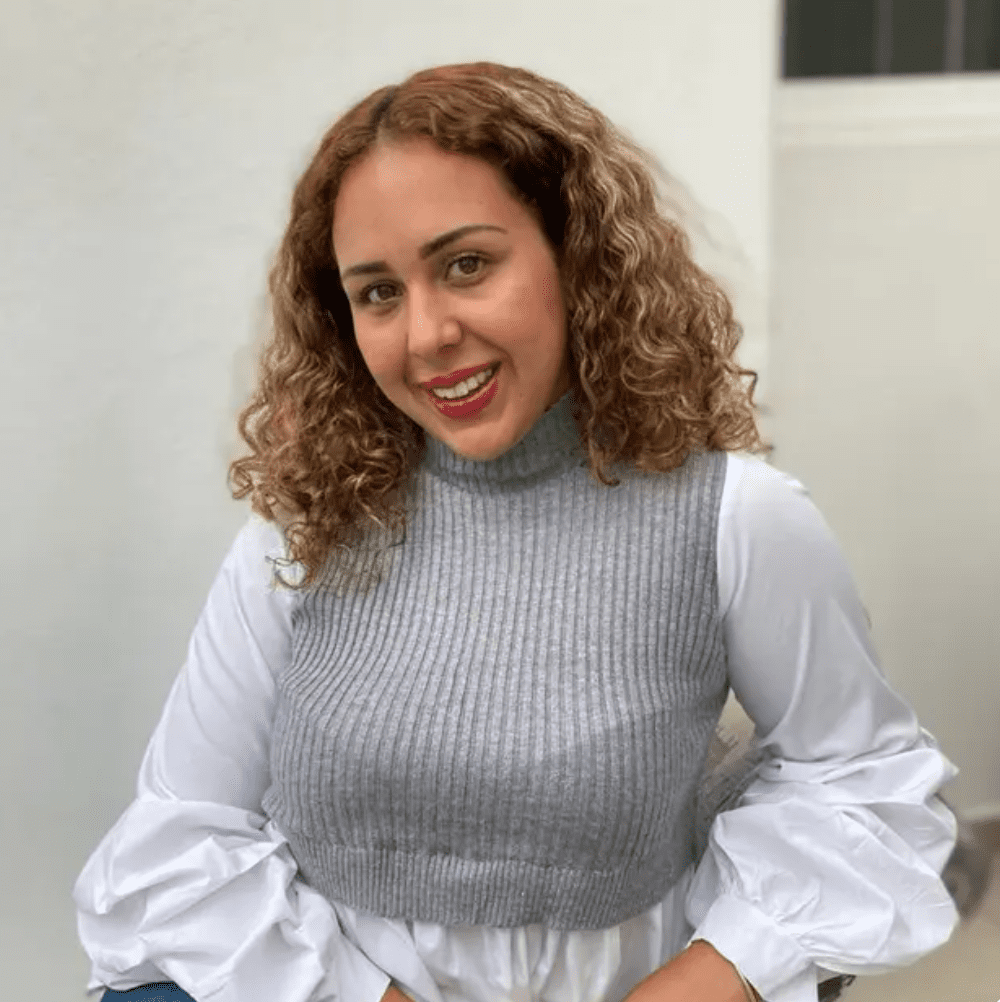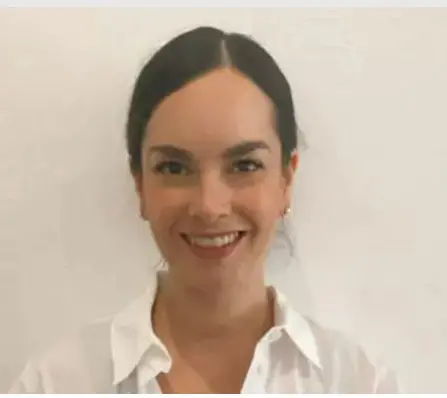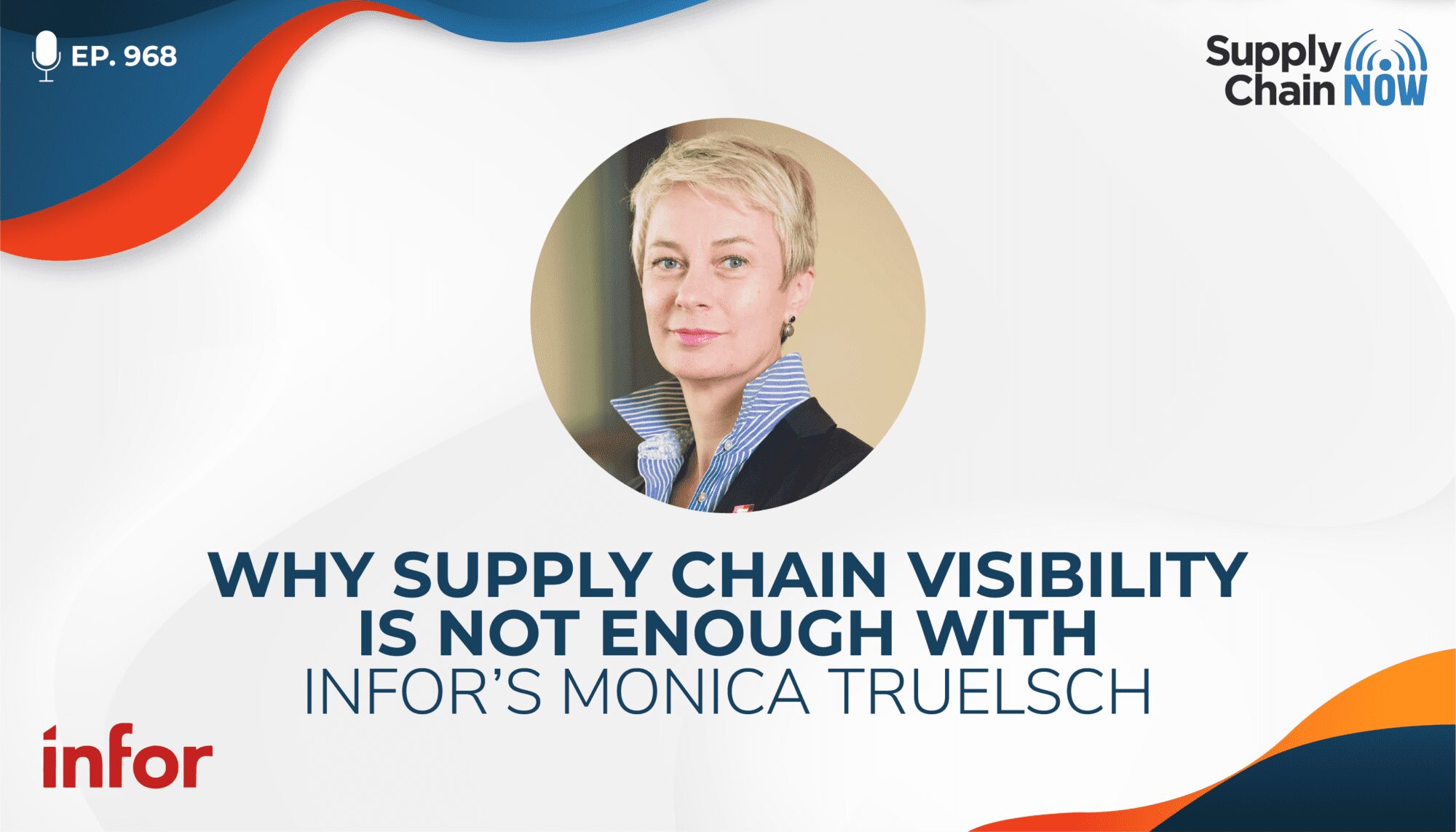
Eighty percent of the data that you need to run your supply chain effectively is really outside of your business, in the hands of your partners. It's in the hands of your 3PLs, your carriers, your suppliers, the customs agent. It is this external universe of data sources, of visibility that you need to bring into your organization.
-Monica Truelsch
Episode Summary
In 2022, visibility is so much more than “Where’s my stuff?” Join Scott and Karin as they discuss the rise of multi-enterprise supply chain business networks with Infor’s Monica Truelsch. You’ll get Monica’s nuanced perspective on visibility as a combination of insights related to supplier capability, network capacity, and financial viability—and find out how companies can move beyond compiling data to take value-added action.
Episode Transcript
Intro/Outro (00:03):
Welcome to supply chain. Now the voice of global supply chain supply chain now focuses on the best in the business for our worldwide audience, the people, the technologies, the best practices, and today’s critical issues. The challenges and opportunities stay tuned to hear from those making global business happen right here on supply chain now.
Scott Luton (00:33):
Hey, good morning. Good afternoon. Good evening. Wherever you are. Scott Luton and Karin Bursa here with you on supply chain now. Welcome to today’s live stream Karin. How are we doing?
Karin Bursa (00:43):
Excellent. Thanks for asking. Good day to everybody. Who’s with us. So glad you’re here.
Scott Luton (00:48):
Definitely. We got a big, big show teed up here today. We gonna be talking about why supply chain visibility is not enough, no longer. Is it us answering the question? Why supply chain visibility it’s Hey, you better? You better get it. And you better make a big impact with it, right? Correct.
Karin Bursa (01:06):
Yeah, absolutely. You know, Scott in my work as a, as an industry advisor, when I’m working with chief supply chain officers and their teams, I hear visibility in the top three goals all the time. And we’ve gotta ask questions about what that means to the business. So I’m really intrigued to hear what Monica has to share with us today on why visibility is not enough, what other elements we need around that
Scott Luton (01:35):
Completely agree. Kind of some of the things you mentioned there, remind me of the old joke, you know, the dog that chases a car, and when he finally gets it, what does he do with it? It’s kinda like supply chain visibility once you’ve got it. What do you do, right? Yeah. So, absolutely. We’re gonna dive deeper on that and folks we’re, we’ve got a great guest here. We’re gonna bring on in just a couple minutes, but we wanna hear from you too. So we hope you’ll, uh, share your take throughout to the next hour or so in the sky boxes, uh, the cheap seats, uh, club level, whatever we wanna call it here today, but, um, you’re also, the starter show will be swooshing in your comments regularly. So with that said before, bringing our guest, Karin, let’s share a couple of folks and say, hello, couple folks that are here today, starting with, uh, Brenda, Brenda Allen, back from Tennessee via LinkedIn. Great to see you, Brenda. Hope this finds you. Well, it’s been a little while. I bet it’s pretty and it’s hot, but it’s pretty up in Tennessee. You ever dreamed it through Tennessee. Karin,
Karin Bursa (02:38):
I have it’s it’s beautiful.
Scott Luton (02:39):
It is gorgeous.
Karin Bursa (02:40):
You know, it’s, it’s a, all of Tennessee is beautiful, but, uh, and it really is nice.
Scott Luton (02:47):
You certainly stop and get some world class barbecue too, don’t you?
Karin Bursa (02:51):
Mm, yeah, absolutely.
Scott Luton (02:53):
<laugh> Gary Smith is tuned in from New York. One of our faves here, tune nav via LinkedIn. Gary. Hope this finds you. Well, I think I saw one of your recent blog articles published. So, uh, keep the good stuff coming. I look forward to catching up with you soon. <laugh> we got some interesting comments. I’m gonna scoot, uh, uh, skip right over here today. Hey, one of our liveliest participants here lately. Great to see you again, master Sergeant Jeremy during, uh, from Topeka, Kansas, he is either in or getting close, getting will be kicking off his transition to the private sector soon. So great to see you, Jeremy, Shelly Phillips. Talk about dynamos Karin. We’ve all enjoyed. I think last time you were with us on the buzz, Shelly was bringing it right? She
Karin Bursa (03:38):
Was bringing it. Yeah.
Scott Luton (03:39):
So Shelly,
Karin Bursa (03:40):
I like it. I like it. And Jeremy, thanks for joining us too. It’s good to have you here
Scott Luton (03:44):
Keeps us on our toes for sure. And it just adds to the, the insights of the conversation, uh, produces, but Shelly, good morning to you out in beautiful Colorado, Shelly of course tuned in via LinkedIn. Of course, the production team clay, the diesel Phillips, because his engines always running clay. Great to see you appreciate all your help. Katherine, Amanda, Chantel. Appreciate what all y’all do to keep production running here. The, the content factory cor doesn’t run on, on wishes and, and wanna dos, right? It takes real elbow grease. Huh?
Karin Bursa (04:16):
It does. It does. It takes, um, some real skill <laugh> and attention to detail. And we appreciate everything that happens to, uh, to really share, uh, what’s happening in the industry on a regular basis. So thanks to the whole team,
Scott Luton (04:30):
Well said, see him. Great to have you here. Once again, from greater Philadelphia V LinkedIn, I saw you and Greg’s exchanges on his commentary this morning. Uh, love it. So keep it coming. And we look forward to your perspective here today on our discussion. Christina tuned in from Fort Lauderdale home of, of course, Florida, the sunshine state looking forward to discussion the all star session. Christina, I agree between Monica and Karin, we got a couple of all stars and I look forward to your perspective as we add to the conversation, big ball, I believe. And if I got that wrong, I apologize. Let us know. We’ll get everybody’s name, right? My Georgia English sometimes, uh, makes it difficult for me, me to work my way through conversations, but great to see you here. Yes. Spot chain management, family supply chain, now family. Um, and of course you are TuneIn via LinkedIn from Pakistan. So great to have you here today. Look forward to your perspective, Omar from chiro Egypt via LinkedIn. Great to have you here today on one final, Kari.n Katherine, part of that skilled talent that you alluded to earlier, her and Amanda Clay and Chantel making it happen here on a humid Wednesday morning in Georgia, right?
Karin Bursa (05:47):
It is humid, but it’s, it’s a little cooler than it has been, which is most welcome.
Scott Luton (05:52):
Yes. Agreed. Agreed. I know we couldn’t hit everybody here today, but we wanna work your comments in throughout the conversation. So keep it coming. AMRI from, from Canada, Yesi from Pakistan, Jonathan, New Jersey, Ricardo from Elizabeth. Uh, y’all keep it coming and we wanna, uh, welcome, uh, all of you to the conversation here today. Okay. So cor, now that we’ve teed up our conversation, I’m really excited to have a repeat guest back with us. She created quite a ruckus. I think her agent was getting a lot of calls to, you know, share a lot more of her, uh, home run perspective. So great to have her back. So with no further do wanna welcome in Monica tr senior director supply chain management strategy within four. Hey Monica, how are you doing?
Monica Truelsch (06:37):
Doing very well. Scott, how are you? Hello, Karin. Lovely to see you both again. Great
Karin Bursa (06:42):
To see you. Thanks for joining us today, Monica.
Monica Truelsch (06:44):
Absolutely. My pleasure.
Scott Luton (06:46):
So we have got quite a conversation teed up here today. I’m looking for Karin and I both are looking forward to what you’re gonna be sharing today. Last time I, I think I grabbed some diet Coke and popcorn based on what you and the car we brought to
Monica Truelsch (06:57):
The table. <laugh>
Scott Luton (06:58):
But today let’s, let’s start. I wanna start with a, kind of a, a, a fun question to, to get us started before we start talking and dive deep into supply chain visibility, you know, here at supply chain now do deeds, not words, really doing good giving forward, you know, helping others. It’s it’s really important. It’s kind of baked into our culture and our DNA. So with that said, Monica, I think there’s a lot of kindred spirits between the three of us here. It is national nonprofit day. Uh, what a great holiday that is. There should be parades everywhere for that. But Monica, I’m gonna ask both of you and Karin, we’ll start with you, Monica, what’s a nonprofit or charitable initiative. That’s really important to you.
Monica Truelsch (07:36):
One of my favorite nonprofits charities and so forth that I’ve been supporting for many years is doctors without borders for our friends overseas, MI Fortier, I believe. Um, it it’s, it’s just so important. The work that they do, we, we forget in the us with our rich healthcare infrastructure, how access to just basic medical care can be so life changing for many people around the world. And I think the work that these, these, these doctors and nurses and and health professionals do, uh, is, is just superlative and, and wish I could support them even more. I also wanna put in a quick plug for a nonprofit that in, for, uh, an in, for nexus has recently become involved with called parlay for the oceans, P a R L E Y. And they’re doing some really innovative work to take, uh, waste plastics out of the oceans and start an entirely new circular supply chain to process that plastic, put it back into manufacturing cycles again, to create new products for us. So I think it’s a, a very worthwhile startup effort on their part. And I, I hope they really get some, some traction,
Scott Luton (08:51):
Uh, Monica. I love both of those causes. Uh, so thank you very much for sharing Karin. I know much like Monica that nonprofit giving back giving forward. Is it really important to you? What’s one of your favorites.
Karin Bursa (09:02):
Yeah. So, um, here in the south, we have just kind of completed two weeks of back to school activities. And one of the foundations I’m on does back to school supplies for children in need. And we were able to provide back to school supplies for nearly 40,000 children living at the poverty level. Wow. Right here in my backyard, in the greater Atlanta area, which is just heartbreaking to me. So it, it is a lot of fun. We get to leverage some of our logistics and supply chain expertise and getting that distribution out to the children and teachers in title one schools and Scott, you, and several members of the supply chain. Now team also helped with the empty stocking fund and making sure that that those kids also have gifts at the holiday time. So thanks for the hands on making it happen. I really appreciate that.
Scott Luton (09:57):
Well, had a blast. We’re gonna be doing it again soon as you know, uh, it tested my picking and packing skills, all of our skills, but Hey, I love that practical calls that, uh, you and, uh, the empty stocking fund do. And, and, uh, thanks for sharing. And thanks for inviting. It’s heartbreaking that there’s such a need, but man, to do something about it in a very meaningful and practical way is, is a really important part of the journey. So thank you, Karin and Monica for sharing, I should add one more. You know, we, we are big, very passionate about serving our fellow veteran community here. Vets to industry.org is a nonprofit serves as a powerful clearinghouse of information and resources for folks like Jeremy and many others that are transitioning them and their families mm-hmm <affirmative>. So y’all check that out. Uh, lots of great information
Karin Bursa (10:43):
And Scott, don’t forget the, the good work with hope for justice as well, that the supply chain and procurement awards, you know, all of the, the proceeds from that went to, you know, very, very impactful cause.
Scott Luton (10:57):
Uh, Karin, I appreciate that. It’s amazing what you can forget in the moment, but hope for justice, uh, the leading global nonprofit attacking and, and going out to eradicate human trafficking and modern slavery. That’s a great call out Karin and, uh, they’re doing wonderful work. All right. I’ll tell you. I’d love to spend the next couple hours talking about some of these real purposeful leaders, but Hey, in many cases they’re powered by global supply chain teams everywhere. So I, I wanna share just a couple quick comments before we dive into the main subject Lauren Coman. Great to have you here, Lauren. Great to see you other day, having worked in nonprofits for over a decade, we would always do big drives around this time of year. Kind of what you’re saying. Karin, you’re giving me flashbacks a bit, appreciate your service for sure. Julio. Great to have you back with us, Dr.
Scott Luton (11:42):
Julio, uh, she’s gonna be on listening mode, great topic to discuss you bet. And we had one other, uh, lots of other comments I can’t get to, but you’re right, Jeremy. It is a, a global event global audience here today. So thanks for everybody. And we’re gonna try to weave in your conversations or your, your, your, uh, perspective throughout, but Monica and cor. So we’re here to talk about supply chain visibility and how to get it in some ways, and then what to do with it. And, and the real impact you can have. I wanna start, you know, visibility has become, I would argue kinda like lean was maybe 10, 12 years ago, 15 years ago, perhaps it was just so cliche, you know, everyone dropped it in conversations. They’re having, I think in a way, in a way visibility has become one of those words too. Everybody’s saying it everybody’s on the tips of my tongues. So as we level set here on the front end, Monica, how would you define supply chain visibility?
Monica Truelsch (12:40):
Well, there’s no single definition for supply chain visibility. And I think that’s tripping us all up in the industry a little bit because when you speak with people about what supply chain visibility means to them, it can be very, very different. Uh, I’m just going to go back to the, the origins of GT nexus. What is now in Forus under the Infor family. When we started as a cloud network for companies that were involved in the container shipping of goods from overseas suppliers, mostly into north America and Europe. And when we created a product called supply chain visibility, it was very order centric. I mean, we, uh, were involved in a, a multi-party, uh, supply chain process, the global import and export of goods. There are many stakeholders, many participants. So, uh, visibility, wasn’t just about the goods in motion, you know, where was the carrier or where was that container?
Monica Truelsch (13:42):
But it was also about connecting with the supplier. I is that order gonna be ready to ship when I need it to be, uh, is there tier two material? Is there tier three supplier that is holding up the production schedule and does it affect my, my downstream responses? So, uh, supply chain visibility to me is really, um, an operational way of thinking about all of the components of supply chain. I think it’s particularly challenging on the inbound side, that first mile of supply chains, where it is far more complex, frankly, and you’re, you’re crossing borders with many of your partners as well, which adds a whole nother element of, of time and complexity and, and confusion and translation. But if you can bring together the parties that are involved in making your global supply chain work, and frankly, we all have exposure to a global supply chain nowadays, I think COVID made that very apparent to us, right?
Monica Truelsch (14:43):
You might have thought you had local suppliers, but they’re dependent on a lot of things coming in from overseas too. It is really this, um, connectedness, this, this order centric view of the supply chain. And also it is about flow. We’ve always on, on the nexus perspective, uh, looked at supply chains as not just the, the physical flow of goods, but there is a financial flow there’s money flowing back and forth to suppliers and carriers and service providers and all of this. And then there’s data about those two things that also has to flow back and forth. So I think finding the optimal, um, convergence of information about the flow of goods, the finances, and then sharing the data with all of the necessary stakeholders to make things more efficient that really constitutes what supply chain visibility means in the broadest sense. Mm, Karin.
Karin Bursa (15:40):
Yeah, that, I mean, that’s a, that’s a very broad and, and comprehensive perspective. So I really like that. And Monica, I applaud you and the N four team for bringing in that financial supply chain aspect as well, because a lot of businesses really have yet to even start initiatives in that area. The flow of goods is usually where we hear about it starting. And, you know, with tech talk, we talk about replacing risky inventory with valuable insights, right? And those insights come from that data, that movement, et cetera, so that we know when we can supply our customers. But when you think about this Monica, who in the business needs visibility the most mm-hmm <affirmative> what, what roles do you think are benefiting the, the most as a result of gaining visibility?
Monica Truelsch (16:32):
Well, it’s our perspective at nexus that the more you can share visibility data across the organization, the more value it generates for the business. So I wouldn’t single out any particular stakeholder for that visibility because so many different departments in a business need visibility at different times, for critical reasons, customer service, you know, you’ve got a, a, a desperate customer, an important new customer. You wanna know when those goods are gonna be available to fill that customer’s order inventory planning, and you’ve gotta understand what the capacity and the flow of materials is. Do you have enough warehouse space to take all of that in the procurement folks might not necessarily need to know when the truck is going to be arriving at the dock, but from the standpoint of understanding which suppliers are complying with the on time in full goals and requirements, the, the analytical perspective of visibility information, how have all of these parties performed over time?
Monica Truelsch (17:38):
Are they the right partners for us? Are they fulfilling the service levels that we expected that we paid for? The, the scope of visibility, uh, has both immediate tactical needs so that you can, you know, make sure you’ve got a dock available to, to receive the truck and also operational strategic insights. Do you need to make significant changes to your supply network? Because you’re just encountering too many hiccups and disruptions on a particular shipping lane or with the geopolitics in a particular country. And so you need a broader perspective. You need historical information, you need analytics on a lot of this visible visibility data to draw insights out for the business.
Scott Luton (18:20):
Wow. So
Karin Bursa (18:21):
You, I’m sorry, Scott. She mentioned several things there that I think are really insightful. The first is that visibility across our siloed processes. So even if we think about that within our proverbial four walls or our business, our enterprise, and then extending that to our trading partners as well, but having this core one version of the truth, if you will, the current state or the predicted state of, of our supply chain, I think is really important because that’s going to allow us just to accelerate a number of different decisions that need to be made in various roles in the business. So that’s really interesting Monica
Scott Luton (19:02):
Well said, and folks, we wanna hear your take on a, a couple qu key questions here. I love Karin’s question to Monica about who needs the visibility. That’s such a great who, who in the business needs the visibility mm-hmm, <affirmative> so weigh in and we wanna share that kind of throughout the conversation, but two quick thoughts and I’m, and I am gonna share a couple comments. Uh, Karin and Monica is the hoarding of data. Those days have gone past, right? Oh yeah. But at the same time, we’ve gotta protect our data right. And protect our, our visibility. Cause there’s lots of bad actors, more and more that are looking to find that weakest link in global supply chains everywhere. So those are gonna be some big topics, uh, in the, in the, they already are big topics, almost the tacos there. It’s not Tuesday taco. Those are big topics. Now they’re gonna be even bigger, uh, coming up really quick. Uh, Byron, great to have you here really agreed to those key points. You were mentioning Karen a minute ago, Jeremy visibility. He says understanding that there are multiple touch points to be aware of and then see him adds thumbs up Jeremy. And I’d like, she says, I’d like as much info for all the touchpoint I need without waiting for someone’s update. Yeah. I love that last phrase there. Yeah. Okay. So Karin, where are we going next with Monica?
Karin Bursa (20:20):
So I, I think that tees up really my next question really well. So thank you so much for that Sam, because this, this ability to serve it up or to make sure every, every partner, every person is getting the information as real time or as near real time as possible goes back to that conversation about data Monica, right? So does this require us, does visibility require us to harness new data or is it simply the same old data, but I need to get it faster in a multier network. What, you know, what is the impact there? If that becomes the foundation for doing a lot of different things,
Monica Truelsch (21:05):
You bring up a very good point. The timeliness of data, right? The supply chains are accelerating. Customer expectations are accelerating. Data latency becomes a critical aspect of the quality of that data and what you can do with those operational decisions as well too, which is why it’s so important to put emphasis on getting information, visibility data on your supply chain as far upstream, as you can in origin countries, starting with your suppliers pre shipments, because the sooner you find out about a developing disruption or event or an exception, the more options you have, the more cost effective resolutions and things you can do before. You know, you’re expecting it to arrive at the warehouse to fulfill an order and you open the container or the box, and only half of the amount of the goods are in there that you had expected, or the truck never does show up.
Monica Truelsch (22:01):
So getting visibility as far upstream as you can, and then getting it in a timely fashion, gives a, a, a business, many more options to avoid disruption, to mitigate risk, to reduce the, the effect of exceptions on the customer experience. For instance, the idea of, do you need more data? I think probably what companies can focus on most effectively is getting data out of those silos. They still exist right there. Right? Scott mentioned the, the, the hoarding of data, you know, the transportation folks used to be the holders of all things, uh, carrier related and the customer service people would have to call up somebody that they knew in the logistics department or transportation. So what is that kind of company? So the sharing of information or the convergence of all of these aspects of supply chain visibility into a, a, a platform or a, a distribution infrastructure within the business that allows all the stakeholders to get to it when they need it again, that’s one of the key ways to generate more value with visibility data.
Monica Truelsch (23:10):
And you may need to, or you may be interested in bringing in more external sources of data. There’s a lot of companies that are looking into integrating risk information, right? Mm-hmm, <affirmative> something that scans the news. What’s the geopolitical environment around these supplier countries that I, I get most of my key goods from what’s the weather pattern gonna be like, are we gonna have more hurricanes tsunamis? What’s the economic cycle going to be like, and can I put perhaps a dampening of demand into my forecasting and planning and demand alignment with the production planning that I, I have underway with my, um, suppliers as well, too. So it is the convergence of many aspects of supply chain data. I think that is the next wave of, of value and interest, uh, for what you can do with visibility. You don’t know until you have it sometimes. Right, right. What it really opens up for you <laugh> and so making it available yeah. Just increases that, that hit rate of, of finding value.
Karin Bursa (24:12):
Absolutely. I, I had someone say to me just yesterday, we didn’t know what we didn’t know. Right.
Monica Truelsch (24:17):
So exactly, exactly. Kind
Karin Bursa (24:19):
Of peeling back the onion, if you will allowed them to ask more questions and better understand their network in total, and this gets more complicated, Monica, as we think about multi enterprise or sharing that data or taking that data from our trading partners, right. From our suppliers or our customers. Talk to me a little bit about that, because you’ve been at that for quite some time now in bringing data across a global network together. Right. For both visibility. And then you’ve got some specific thoughts on transparency as well. Right. So these things are not necessarily the exact same thing. Hmm. Um, tell me a little bit about that.
Monica Truelsch (25:07):
Sure, sure. Let me go back to one of the first topics we touched on. What, what do we mean when we say supply chain visibility typically for a, a buyer of goods, it might be, when is my order going to arrive? When is my stuff going to get here? But if you think about your supply chain network from the supplier’s perspective or carrier’s perspective, the visibility they most want is to know when they’re going to be paid mm-hmm <affirmative> or perhaps from a contract manufacturing standpoint for one of your, your, uh, uh, overseas factories or suppliers. They’d love to know what your demand forecast is. What do you think your sales are going to be for this item over the next three months, six months? How do I need to structure my business to make sure that it aligns properly with your expectations? For me, you can’t just necessarily throw an order for these manufactured goods over the wall, and expect me to be able to have all the resources lined up for it.
Monica Truelsch (26:04):
So earlier visibility, the sharing of information, and this goes back to transparency as a more valuable way of thinking about visibility, the sharing of information with key partners and stakeholders in your supply chain network to make everything run more efficiently, there has to be value for your partners in providing visibility to you. You have to think of ways in which you can provide visibility for them that incentivizes them to be more compliant, more timely with the information to share that information for you as well too. And it’s really a, a, a systems way of thinking, or it’s a, it’s a way of thinking about network benefits. There are multiple businesses that go into making your global supply chain work, and there has to be value for them all along the way, in order for them to be as transparent or as open as possible in giving you the information that you need for your specific business actions.
Karin Bursa (27:05):
Very good, very good Scott. Any thoughts on that? Any, anything we wanna share from
Scott Luton (27:09):
We’ve got a ton, uh, truckloads and I’ve got lots of visibility into all these comments. I wish I could share all of them. <laugh> uh, I wanna go, I wanna go back. Y’all bear with me for a second as I play catch just a bit, cause I wanna go back to the purpose full front end of our conversation. We had a couple of, uh, Gary Smith loves food banks, uh, big fan of the Harry chap, uh, Chapin Chapin food bank here in long island, as well as the Atlanta food bank. Uh, Joe was talking about, um, being in radiation oncology for 12 years, donating to those low income families, going through cancer and helping them get through their journey. Joey, that is a wonderful, uh, cause there and then fast forwarding to some of the visibility thoughts here. Christina says visibility starts with good process quality data and the commitment and discipline of each party involved to provide information.
Scott Luton (27:59):
As soon as the event occurs, Christina well said there, Andres has a kind of a question comment question, it’ll be fascinating. He says, if there was an ability for different companies to share historical logistical data, of course everyone is kg, you know, kind of going back to the hoarding about sharing their pricing and cost. But what about sharing? For example, he says supplier X typically manages to, to deliver within 2.4 days of promised arrival date. Now think about some of the things we could do if we exchanged information like that. And then finally, also from, uh, well, Glomar, there’s so many things of choose from. We’ll have to circle back, but Glomar great to have you here today. Transparency says a lot about a company’s culture and commitment with stakeholders. I love that and completely agree with that as well. Okay. So Karin, you asked, uh, we’ve got a ton of thoughts, lots of passion into comments. Where are we going next with Monica tr
Karin Bursa (28:56):
Yeah. So Monica, I wanna, I wanna stay on this, this topic for just a moment about visibility with the network or multi enterprise visibility. Um, to me, this is, um, something that you see as companies mature in their processes. You don’t see a lot of companies that are very, um, immature or, or just starting a digital transformation for example. But when we see the benefits of, um, really that multi enterprise collaboration or that sharing of data, that extension, you made the comment that, you know, systematically, we need to facilitate that, right. We need to, to harness that data, have some standards around it, explain what it means. But in fact, you know, we’ve had multi enterprise capabilities for a number of years. So I, I know that you’re not interested in doing a commercial, but just tell me a little bit about that from your role in Infor and then, you know, some of the recognition maybe that, that, that your customers are seeing in the marketplace as well.
Monica Truelsch (30:04):
Yeah. Thank you for that. Uh, the, um, concept of a, a multi enterprise supply chain business network is that’s a something, it, it is. Yeah, I can’t, that’s a good talk. If, if you use the acronym for it, nobody has any idea what you’re talking about. So you at least have to explain it once. But our, our friends at Gartner, uh, have actually recognized this as a very important and growing segment of the supply chain technology landscape. And I think four or five years ago, they began putting out one of their magic quadrant reports on multi enterprise supply chain, business network suppliers. And they are a, um, sort of a, a critical placeholder in Gartner’s view of the supply chain visibility landscape. And they are, uh, designed specifically for companies that are taking this more mature approach to their supply chains. They’re treating them as a network.
Monica Truelsch (31:02):
They’re recognizing multiple stakeholders, multiple aspects of interaction with them as well too. It’s not just shipment updates. It’s not just order confirmation, but it’s perhaps about providing certainty or visibility to, uh, to payments, to invoice settlements for each of them as well. It is about sharing prediction capacity. So Infor nexus, the cloud supply chain management, uh, platform that is now part of the Infor software company, which is more known as an E R P provider, but also has a, a pretty strong stable of supply chain technology underneath it. Now the Infor nexus platform as part of Infor has been a leader in the Gartner magic, uh, quadrant from multi enterprise supply chain business networks for about five years running now. And if your audience isn’t familiar with the concept, uh, and obviously supply chain technology vendors and technologies and software have been out there for a long time, but they tend to, to be on premise sort of, uh, inward focused, looking outward. The concept of the multi enterprise supply chain network, I think is the new platform for the global supply chain and, and for operational visibility and mutual benefit for all the parties that take part in a, in a supply network.
Karin Bursa (32:20):
Yeah, that that’s, that’s a fantastic description for us. It, it is a mouthful. So you said multi enterprise supply chain business network. So we got six, six letters there. Um,
Monica Truelsch (32:33):
Choose a visual. Yeah. If you wanna do more, go ahead. There is a link to that report on the info.com site. So you can learn a bit more about what this means.
Scott Luton (32:43):
Well, you know, what’s, it just rolls right off Monica’s tongue <laugh>. Some of us are visual learners, but y’all check this out. We’re talking about MSC B N multi enterprise supply chain business networks clearly in four is a recognized leader. The Gartner report that 2022 magic quadrant is available. We’ll drop link in there, appreciate to, uh, appreciate the production team helping us out, but also thank you, Monica for making this, this analysis, uh, available, uh, for folks in our, across our global, uh, family. All right. So Karin, I’m gonna share just a couple quick comments and then, uh, and then we’ll see where we’re going next with Monica. Omar makes a great point and I know Monica, I believe you and Karin touched on this, but he brings up how important it is when it comes to risk management. If you can really speak really quick to this Monica, you know, visibility enables organizations to really mitigate risk in ways that, um, you know, are a lot further advanced than, than many others speak to that, if you would, Monica,
Monica Truelsch (33:43):
Absolutely. The frequency of disruption in supply chains is increasing at a pretty steady rate. I think McKinzie put out a report on this 20, 20, 20, 21 before COVID, even that they’d been doing studies on this worldwide. And the rate at which supply chain disruptions are occurring worldwide in a way that’s going to interrupt your production, uh, or, or your store operations for more than two to four weeks. It’s just going to accelerate more and more. So risk is endemic in global supply chains. And now that we’re aware of how many different directions that risk, that that disruption might be coming at us from the urgency to digitalize the, the view of your global supply chain to build that network visibility, if you will, is more critical than ever before. It’s not just about, uh, labor disruptions at port of long beach. And, and then LA it’s not just about geopolitical strife in the far east around the world, right?
Monica Truelsch (34:50):
Uh, it’s not just about a ship stuck sideways in the Suez canal. It’s all of it all at once. Everything but navigating all of this, right. Uh, I mean, navigating problems with supply chain has always been part of what supply chain professionals do. Yeah. That’s why, that’s why we have them. That’s right. That’s why we have a job, right? Logistical teams. That’s why we have the, these terrific three PL partners, these global three PLS that use, they aggregate the expertise of these really talented professionals with feet on the street, in, in local and origin countries. And they’re a huge partner in making global supply chain operations work. And they’re a key provider of visibility information as well, too, because they span so many different touch points and, and chain of custody handoffs in the global supply chain. So the ability to enable value for all participants to share this data, to make it seamlessly available across the silos within the organization, and to look at value for your external organization, your external partners as well is, uh, a, a critical next frontier for supply chain visibility value
Scott Luton (36:03):
Next frontier. I love
Monica Truelsch (36:04):
That next. Well, if you think about ERPs, you know, ERPs have kind of, uh, dominated software technology for a long time. Sure. They were transformative for business, frankly, but they’re pretty lousy at supply chain. Yeah. Orchestration and collaboration. And I’m sorry, I just gotta put that out there, right? Because the E R P is about optimizing what you have control over what’s within the walls of your business, right? Supply chains are all about what’s happening outside of your business. We, we have a, a, a statistic. We throw out that 80% of the data that you need to run your supply chain effectively is really outside of your business’ in the hands of your partners. It’s in the hands of your, your three PLS, your carriers, your suppliers, the customs agent. It is this external universe of data sources, uh, of visibility that you need to bring into your organization. Well, Monica,
Scott Luton (37:00):
To that point really quick, you know, Jeremy talks about how a lot of this boils down to how much is their relationship to your point, you know, cause without the relationship, it’s tough to get to that 80%. Right. And we that’s, that’s the bridge. We’ve gotta, we’ve gotta build one other quick comment here from Shelly. Cause we, you know, we started talking about risk management a second ago. Great. By Omar, she brings up what we’re talking about on the front end. It’s that cybersecurity risk, right? Yep. That’s gonna be bigger and bigger moving forward, but cor I’ll tell you we’re getting a masterclass for Monica. Just like last time she joined us as we start, we got a couple resources we wanna share with folks, make sure folks can connect with Monica before we get all there. Karin where are we going next with Monica?
Karin Bursa (37:38):
Well, so I I’ve got the big question, Monica. So we’re, we’re saying why visibility is not enough. Hmm. So let’s just be really clear in that response. So we all agree. Visibility is important. You’ve kind of opened our thinking to a broad category of areas that visibility contributes. I love the point that you just made that 80% of the data that we need for visibility is really coming from outside of our enterprise. That’s huge. Why isn’t it enough?
Monica Truelsch (38:08):
Hmm. Let’s go back to who needs information, uh, within the organization or even, um, your commentary at the, the start of the program, Karin, about your, uh, engagement with, uh, supply chain executives and so forth in the various companies that, that you deal with. The topic of visibility, the goal of visibility, uh, is like in the top three wishes needs desires of chief supply chain officers and supply chain leaders for probably at least the 10 year, past 10 years, if not more. Um, every survey that I see visibility is right up there at the top of it. Right? But if you look at how supply chain leaders, chief supply chain officers are, are measured and incentivized, nobody’s getting points for how much visibility you have. They’re getting measured. They’re getting tasked with contributing to margin, with improving the customer experience with assuring supply, preventing production, uh, down times, finding more efficiency in supply chain operations to take out costs, to take out time, to increase product velocity throughput, to reduce the amount of inventory that ties up working capital within the business, and yet be able to fulfill the, the needs and goals of the, uh, the strategic business from a sales and operations.
Monica Truelsch (39:34):
Uh, planning perspective. Visibility is merely part of the data that enables that, that goal reaching, right. You wouldn’t need visibility if all of the partners and multiple touch points and handoffs that you worked with would reliably perform on time within the framework that you gave them. That’s just not the nature of global supply chains, right? We, we talk about autonomous self-driving vehicles, you know, autonomous trucks gonna take, uh, the, the burden of our, our truck driver shortage off of us as well too. But if you think about the technical challenges, you know, being able to have a, a truck start and stop on its own, maintain a steady speed or comply with local speeds, that’s all kind of trivial, mechanical engineering challenges. The big problem is putting visibility into an autonomous vehicle, into a robot, if you will, that can approximate what humans do to sense what’s going on in front of them and to respond to it.
Monica Truelsch (40:39):
So we talk about resilience and agility for supply chains, right? And resilience and agility is needed because supply chains aren’t static. The environment in which businesses have to bring their goods to market is not static. We’ve just come through a period of tremendous demand volatility with some huge swings and pivots and spikes that companies just had not experienced for previous several decades or, or, or ever. And it caught everybody’s supply chains short, right? We’re still dealing with the, the, the backlash of that effect. Um, there there’s congestion at port there’s containers stacked up all around the world. Companies are now sitting perhaps on too much inventory because they over ordered an anticipation of more problems and continued consumer demand. And now that working capital is, you know, potentially kinda locked up in that inventory again. And so companies are gonna have to think about what that means to maybe free up some cash.
Monica Truelsch (41:38):
Are they gonna start to extend the payment terms to their suppliers? And what does that do to the health of the, the global supply chain? So this holistic systems thinking about supply chains, uh, and the data that’s needed to build resilience, to build agility, visibility is it’s the critical thing that you need to be able to sense what’s coming or what has happened and to respond and to react to it because supply chains and businesses don’t proceed automatically or autonomously, they always have to be able to respond and adapt to changes in, uh, in market environments. Uh, and the organization has to have the tools, the information in a timely fashion to be able to sense what’s coming or, and react to it in time enough to reduce the impact on the business.
Karin Bursa (42:29):
Yeah. I mean that, that is a thesis right there. And I, I, I think that there are, you know, just a few points when, when I hear that from a chief supply chain officer, we need better visibility. My very next question is what will you do with that? Or what will that enable you to do? And you’ve just given us a list of, of areas for consideration, right? That, that are going to allow the business to sense changes because we do live in friction filled supply chains, right? Mm-hmm, <affirmative>, it’s not a frictionless network. There is friction that occurs and delays that occur and tons of unexpected events that impact, um, our schedules as well. So when, when you are working, I’m just gonna encourage our audience today, as you’re thinking about visibility in your business, be sure to take that next step on what it’s going to allow you to do or how you will be more agile or more resilient in the, in the face of needed change or adjustments or adaptability for your business as well. Because I, I think that that is really important in looking at the measurable impact of better visibility
Scott Luton (43:45):
Well said. Uh, and Shelly agrees with your great point. How will the data be used? Uh, good stuff there, Shelly, a couple of comments here, Dr. Julio says visibility and ensuring information creates benefits for all partners, buyer end suppliers. I had studied this in my earlier supply chain research, but trust was an important factor. I agree with you. You can move mountains with it and you can’t do much without it. I see him makes a great point here so much goes into sub supply chain management. I growing up that’s what that meant just calculate lead times requires end to end information cycle and transport times, for example, Monica, yes, you can get the recording of this, this live stream across social. You can also get the podcast replay in about a week if you go to supply chain now. So yeah, definitely. And, and reach out to our team.
Scott Luton (44:32):
If you can’t find it. Shelly also liked Monica’s point. Transparency is not rewarded. And then finally, I wanna share this, uh, from Glomar this might be a future podcast episode. She says her husband works pulling containers from the LA port. He loves the automated ports. We got some work to do catching up to our, uh, other global ports here in the states. She says his company struggles a lot with the way the port personnel operate. And the fact they have a hard time getting appointments to pull those containers out, but then they get hit with penalties, this area of the supply chain. It’s a huge constraint. And certainly in bottleneck, Gloria, uh, Glomar thank you for sharing. And as three of us know, and probably our audience, the information sharing is certainly a big gap that we’ve gotta bridge to get more capacity through and, and streamline some of the ports here beyond, you know, there’s automation opportunities, but just the information share amongst all stakeholders in the, the ports ecosystem is a big opportunity. And Monica, that goes back to something you were saying earlier, go ahead.
Monica Truelsch (45:31):
I, I wanna touch on the comment that was made about, uh, transparency and not being rewarded and the ways in which it does or, or, or can Institute some value. So, uh, being able to share your demand or production needs with your suppliers and with your carriers, especially is often an important way to build the relationships with them, to make them a little stickier with you, sharing more information with your carriers, for instance, allows them to get their networks and their assets in line to be prepared to, to, to solve things for you. We found that, um, for, uh, nexus customers that were working with their, their ocean carriers and their NVOs, um, during their really worst constraint periods in, in 2021 for ocean freight, uh, capacity that they were on a monthly basis, almost a weekly basis sharing with their carriers, what the volume of orders were going to be, that they saw within the next six weeks.
Monica Truelsch (46:33):
Uh, and this exchange of information, which they normally wouldn’t have bothered to do was critical for them in trying to build some mind share with the carrier. So that if a, you know, carrier had a choice between a high paying load there or a contracted load, that was a slightly lower rate where that relationship existed with a, an enterprise with a, a buyer or shipper, they were more likely to be able to make sure that their goods were, were able to move for suppliers as well, too. The visibility to payments can be used as a way to align them with your ESG goals, right? The, uh, environmental, social governance, your sustainability goals at nexus. We work with a lot of retail apparel and footwear companies that work with many, many thousands of small suppliers, a around the world. And they’ve been using a, a procure to play pay, pay platform along with supply chain finance, to provide visibility to their smaller suppliers, to when they’re going to get paid for the orders to accelerate the payment that they can get for those orders, preserving both the financial health of those, uh, suppliers as well as capital for the, the buying enterprise, but also rewarding them for compliance with environmental and sustainability goals.
Monica Truelsch (47:55):
Oh, you’ve, you know, turned in your report about the, you know, your waste streams. You’ve attained this goal for, you know, carbon emissions reduction. You know, you get to have a few basis points off of your, your loan rates financially and so forth. So the, the transparency, the sharing of information with your suppliers and with your service providers is a good way to encourage compliance, cooperation, the alignment of this external supply chain network with your company’s own business goals, especially as they relate to doing something positive for the world.
Scott Luton (48:30):
Monica well said, uh, and I’ll go all way to the front of your answer. You said, I think I wrote down here, if everyone just would get their assets in line, we’d all be in a better spot. <laugh> everybody needs to get their assets in
Monica Truelsch (48:41):
Line. <laugh> get your assets in line
Scott Luton (48:43):
<laugh> so, alright, so cor I think we’re almost where we want to share a couple resources. We want to ask for one final quick thought, maybe from you both on this critical topic of the table stakes that is, uh, supply chain visibility, or I love what Jeremy said, supply chain calisthenics yesterday, we’re working these brains getting in shape, right? So Karin, I’m gonna do this backwards. I’m gonna go you your final thought and then get Monica’s final thought here, and then we’ll move into, um, a couple resources. Karin, what’s your one final thought here today, based on what we’ve talked about.
Karin Bursa (49:13):
Yeah. I, I really like the last part of Monica’s comment and that is with regard to multi enterprise visibility and, um, collaboration. There needs to be both a carrot and a stick, right? So there needs to be a reward or an incentive and a recognition when things are done well or compliance is in place. Or, you know, somebody had the question around, you know, how do you, is there a list of the best suppliers or best carriers? I mean, we need to recognize our trading partners who are doing what we’re asking them to do, um, and, and helping us gain that visibility to meet other needs, whether it is simply the flow of product, the financial, uh, impact in our business or our environmental and social and governance, uh, capabilities as well, because those are very important for most chief supply chain officers today, as well.
Scott Luton (50:09):
Well said, Karin and Monica, your very final thought on supply chain visibility.
Monica Truelsch (50:14):
I would encourage companies to think about what visibility means in a more systematic way outside of silos. It’s not just where’s my stuff, but <affirmative>, but you have to start thinking about value at risk. If you do have a container or a truck stuck somewhere, it’s not just important to know the number of that container, but you need to know which order is that part of which customer, which business unit, which production line is going to be affected by that problem. So the convergence of financial information about your supply chain orders, customer information, as well as that, that, that core transportation and logistics stuff that knits everything together that gets your goods from point a to point B, that is the transformational value of digital visibility data for the modern supply chain. It’s looking across not just logistics information, but across, uh, supplier capability, network capacity, both for production and for freight movement, and then financial viability, uh, what’s the value at risk. And, uh, am I making the right decisions? Because as we get inundated with more and more sources of supply chain visibility, that’s a ton of data to Wade through how do you know what to pay attention to, right? And that’s where the integration of financial information, the purchase order detail, the item orders, skew level, tying it in with your customer orders as well. And that demand is so critical to, to helping you make sense of what to focus on, what to prioritize in your supply chain operations and exception management,
Scott Luton (51:54):
Well said, decision making velocity and confidence or two to things that you’re speaking to there. Okay. Heck of a conversation here today. Really quick folks, we wanna drop a couple of resources in the chat here. First off again, this is the, uh, analyst report from Gartner focused on the 2022 magic quadrant for this phrase. We’re all learned here today, multi enterprise supply chain business networks. Mechi mechi maybe, I don’t know, we’ll save that for later time, but in four is recognizes a leader learn from leaders. So you can check out that link. And then secondly, Monica and her team have provided a really neat video case study focused on all port partnering with N four nexus to offer their customers greater order visibility. So check out a practical case study on, on how that’s done. Monica, uh, had another blast with you. Uh, I, I, I, I swear you can, you can answer these questions in your sleep. Uh, in this last hour has reminded me of our, our last chat. So we’re gonna work through your agent. We’ll have you back in a, in a, in a sequel block Buster, um, here at supply chain now, but all that kidding aside really, really have enjoyed our chat. Karin, Monica’s an a player, huh?
Karin Bursa (53:08):
Absolutely. Thanks for joining us today, Monica, it’s been, um, it’s been like a masterclass and I’ve really enjoyed the conversation and all of the collaboration and input from the audience as well. Thanks guys.
Monica Truelsch (53:21):
Great. Thank you so much for bringing your terrific international audience on here. I, I love the feedback and, and, uh, input that they provide for this. So it’s, it’s always a, a valuable experience to be on with you two. Thank you very much for the opportunity,
Scott Luton (53:33):
Man. That makes my day. We’ve been talking with Monica tr uh, within four Monica. Thanks so much. We’ll see you soon. Wow, man, I tell you what, usually I have eight 17 pages notes. I think I got about 32 today, some bonus notes, Karin, and you know, what, what makes even better between what Monica shared, what you shared a ton of? I have to go back through the comments. I think there are like nuggets we’ll add to our certifications, uh, and experiences masterclass here today, but all that aside, two final questions for you. Your favorite thing that Monica shared, right? You touched on that a little bit, but I’m gonna ask you again, kind of in light of everything she shared, and then we wanna get an update on what’s to come with TEKTOK.
Karin Bursa (54:14):
Yeah, yeah. So, um, we’ll, we’ll start with our conversation today that that visibility alone is not enough. I liked the very specific examples that, um, that Monica provided in how you can use that visibility to benefit, not just your business, but your entire network. So I think that that’s, that’s really important and that’s exciting. And I gotta tell you, I, I felt bad cuz I was trying to watch some of the comments coming through. There was so much good information that, um, I’m writing things down as we’re going through. So, so definitely a topic I think we need to dig into further in the future.
Scott Luton (54:48):
Agreed, agreed. And then the second question, I think I’ve got a graphic from your most recent episode. Do you need a supply chain digital twin really enjoyed that? Y’all check that out. Look up TEKTOK, digital supply chain podcast, wherever you get your podcast from, but what’s to come Karin.
Karin Bursa (55:04):
Yeah, lots of interesting things to come. In fact, we have an interview that’s coming up with Billy Ray Taylor in his new book, the winning link. Right. Um, and that’s gonna be fun. That was just a really fun and kind of a different spin on how to improve your supply chain performance. So look for that dropping soon.
Scott Luton (55:25):
Agreed. Well, y’all check that out again. Find TEKTOK wherever you get your podcast. A home run episode. I’m I’m a rap on two quick comments here. Karin. So I love I I’m a, there’s a book written in our comments today amongst all the contributors. Yeah. I love this. Jeremy says Mein sounds like something you might sprinkle on a biscuit. And then our dear friend Brenda says, Hey, speaking of send them some Kenny Bob’s foods, barbecue sauce, and you could build some great rapport. So Brenda, I thought, I thought I recommend you got a new headshot, but great to have you and congrats on all the success you and your husband and your, your team are having, um, there. Okay. Folks as Karin put it, it was a master class. Monica brings it. Uh, we’re gonna have to do, uh, a couple hours next time bonus episode, uh, a venti episode, a Grande episode here at supply Chan now, but hopefully y’all enjoyed it as much as, uh, we have make sure you check out those resources, right? The Gartner report and the video case study. Uh you’ll you’ll if you love the conversation, you’ll like those big things to our production team, big things to everybody that turned out, Karin, always a pleasure to knock these out with you.
Karin Bursa (56:32):
Yeah. Thank you. I, I really enjoyed it. Um, I, I learned some, some, some new stuff. I learned some new stuff, which is really, I love doing so I wanna thank, um, Monica. I wanna thank you Scott, but also our supply chain now community for some of their thoughts that they shared and the comments I’m gonna go back and read several of those again.
Scott Luton (56:53):
Oh man, that that’s, uh, going to it again, but lots of value there. But to your point, I love what Monica said. As I wrap here, it’s not all about where’s my stuff. Visibility is so much more than that. So folks check out the replay, make sure you connect with Monica and Karin and with each other. I love the, the, uh, banner back and forth we saw in some of the comments, but whatever you do, folks about deeds not works taking action. Now that we’ve got more knowledge, what are you doing with it? Now you get more supply chain visibility. Great. But what are you doing with it? And on that note on B our entire team here, Scott Luton challenging you, Hey, check out those nonprofits on the front end, but whatever you do be like Monica and Karin, do good. Give forward, be the change that’s needed. And what that said. We’ll see you next time. Right back here on supply chain now. Thanks everybody.
Scott Luton (57:40):
Thanks
Intro/Outro (57:41):
For being a part of our supply chain. Now community check out all of our programming@supplychainnow.com and make sure you subscribe to supply chain. Now anywhere you listen to podcasts and follow us on Facebook, LinkedIn, Twitter, and Instagram. See you next time on supply chain. Now.
Featured Guests

Monica Truelsch is Senior Director of Supply Chain Management Strategy at Infor, the world’s third-largest ERP software company, where she works with the Infor Nexus supply chain network. She joined Infor from Trimble, a world leader in geo-spatial technologies and transportation applications. Her career includes roles in product management, marketing, and sales leadership for advanced technologies in telematics, domestic transportation management, chemical handling, engineered materials, artificial intelligence, and industrial laboratory management. Connect with Monica on LinkedIn.
Hosts
Additional Links & Resources
Video case study: How Allport Cargo Services uses Infor Nexus to provide customers with greater order visibility
